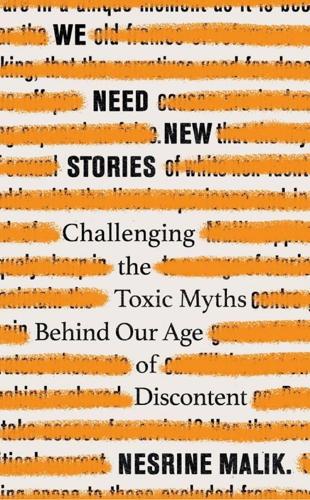
We Need New Stories: Challenging the Toxic Myths Behind Our Age of Discontent
by
Nesrine Malik
Published 4 Sep 2019
This makes it easier for the tool of universalism to be effective. But again, this is not the fault of representative identity politics, it is the fault of white monopoly on the means of cultural production. The very origin of the identity politics movement was an effort to find common cause, rather than ghettoise demands for equality. The history of the term ‘identity politics’ and how it was first used illustrates how much it has been corrupted and deliberately misunderstood over the years as divisive and distracting from ‘universal’ causes. In the mid-1970s, a group of Afrocentric black feminist scholars and activists in the United States formed an organisation specifically to address the concerns of black women, concerns which they felt had been ignored by the wider feminist movement.
…
This is an additional complication of narrator dominance – it exhausts and confounds the flourishing of new voices by restricting their ability to expand, to create a body of work that is not restricted to constantly responding to and challenging myths. And even this effort, to expand the knowledge bank, as Lola and her fellow students tried to do at Cambridge University, is met with resistance. Ferguson also has strong views on #MeToo. The ghettoisation of women or people of colour in ‘their lane’ in publishing and journalism is not an issue for him. If one is ‘an’ authority, they are then ‘the’ authority, moving from economic history to empire, to Islamism, to sexual politics and consent. On the latter he has this to say: ‘I wonder: do we risk sliding into a kind of secular sharia, in which all men are presumed to be sexual predators and only severe punishments can prevent routine rape?
…
Of the three books and book series by these writers, only one had a main non-white character, who was half Latina. In 2017, the Sunday Times top ten bestselling hardback non-fiction chart did not include any writers who weren’t white. In the UK, the Writing the Future research reported in 2015 on the effect of ghettoising minority voices in either confessional non-fiction or literary fiction about race or colonialism. The result is an under representation of black and ethnic minority British writers in the bestselling writing genres. The problem is in the ranks of publishing as well, according to the report, only 8 per cent of UK publishing comes from a black and ethnic minority background.
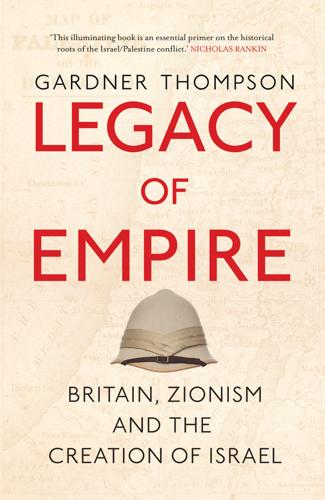
Legacy of Empire
by
Gardner Thompson
As noted above, even in the early twentieth century Israel Zangwill’s Jewish Territorial Organisation saw no necessary link between the search for a homeland and Palestine: ‘we do not attach any real value to our supposed “historical rights” to that country’.23 Jewish experience in the post-70-ad diaspora has been distorted by generalisation. The Zionist version of history presents these Jewish communities, over many centuries, as uniformly powerless and constantly subjected to persecution. There were, of course, some solid grounds for this view. Ghettoisation is a historical fact, as are innumerable episodes of persecution (and apprehension of persecution, even in its absence). The pogroms in Russia, where so many Jews were living, were an accompaniment of modern political Zionism and, up to a point, explain it. This much is certainly not myth. Nonetheless, Zionist history was knowingly misleading.
…
INDEX Page numbers in bold refer to tables; page numbers in italics refer to illustrations; ‘n’ after a page number indicates the endnote number. 1929 violence and disturbances, 159, 161, 184, 195, 203, 215–16, 223 1930 Hope-Simpson Report, 183, 186, 187, 297 1930 Passfield White Paper, 76, 187–90 1930 Shaw Report, 186, 187, 197, 202, 297 casualties, 185 Hebron, 184–5 inter-communal antagonism, 211 land issue, 186, 209–10 racial character of, 185 Western Wall, Jerusalem, 184, 185, 186 1933 protests and rioting, 215 1936 Arab Revolt/Great Revolt, 126, 161, 203, 208, 218–21, 223 British army, 220–1 casualties, 221 Hebron, 220 Jaffa, 218, 220–1 Peel Commission and Report, 221, 222, 233 strikes and boycotts of Jewish businesses, 221 truce, 220, 221 see also Peel Commission and Report 1938 Arab Revolt, 126, 207, 228–33, 249 Arab-on-Arab violence, 230–1 British army, 228, 230, 230 casualties, 230 destruction, 231, 232 Haganah, 229 Irgun militia, 229 Jenin, 231, 232 Jewish Agency, 229 partnership of British and Jewish authorities, 228–9 repression and group/village punishments, 228, 229 1947–1949 First Arab-Israeli War, 264–72, 294–5, 333n6 1st stage/‘civil war’, 265–9, 270, 272 2nd stage/inter-state stage, 269–72 1948 invasion of Israel by Arab League forces, 269 1949 Armistice lines, 261 Abdullah I, King of Transjordan, 266, 268–9, 270 armistices, 270 Ben-Gurion, David, 264–5, 270 Deir Yassin, 332n4 Haganah, 265–6, 271 Haifa, 266 IDF 266, 270, 271 Israeli victory, 271, 274 Palestinian refugees, 274, 276 terrorism, 265 truce, 270 yishuv, 264–6 1956 Suez Crisis (Second Arab–Israeli War), 272, 332n9 1967 Six Day War (Third Arab-Israeli War), 272–3, 274, 284 Palestinian refugees, 274 settlement programme, 274 UN 242 Resolution, 275 1973 Yom Kippur, 273 nuclear exchange, 273 Aaronovitch, David, 289 Abbas, Mahmoud, 279 Abdul Hamid II, Ottoman Sultan, 34–5 Abdullah I, King of Transjordan, 266, 332n6 Arab Legion/Royal Jordanian Army, 268, 270 Peel Report, 268–9 Achcar, Gilbert, 294, 300 Ahad Ha’am (Asher Ginsberg), 14, 15, 16, 29, 36, 80, 116, 241, 286 AHC (Arab Higher Committee), 218–20, 219, 238, 244, 262 banning of, 230 Jewish immigration to Palestine, 220 partition of Palestine, opposition to, 227–8 UNSCOP, 260 Alexander II, Tsar of Russia, 4 aliyah (wave of Jewish immigration into Palestine), 316n30 1st aliyah, 22–3, 28, 39, 42 2nd aliyah, 16, 21, 23, 25, 26, 28, 39 see also Jewish immigration to Palestine Allenby, Edmund Henry Hynman, Field Marshal, 71, 101 American Council of Judaism, 253–4, 331n11 American Zionist Federation, 296 Amery, Leo, 87, 93 Andrews, Lewis, 228 anti-Semitism, 264, 298 1905 Aliens Act, 84–5 anti-Zionism/anti-Semitism distinction, ix, 22, 39, 123, 304, 318n6 Balfour Declaration, xi–xii, 85–6, 88, 89 Britain, xi–xii, 85–6 British Mandate for Palestine, 141 as conspiracy theory, 87–8, 322n59 Europe, xi, xii, 4 Evian Conference, 247–8, 299 France, 315n11 Jewish Question, x, 3, 6 Nazi Germany and state-sponsored anti-Semitism, 161, 247, 296 Poland, 161, 247 USA, xi, 86, 298 see also discrimination; persecution Arab Agency, 168, 170, 180, 199, 327n15 Arab opposition to, 164, 168–9, 303 Arab-Israeli conflict, ix, 163, 280, 289, 304 Arab-Israeli reconciliation, xv, 280, 304 Arab-Jewish rapprochement in Palestine, 22 Arab League, 266, 267, 269, 275, 332n5 Arabic, 21, 29, 109, 112, 149, 181, 209 as official language of Palestine, 133, 158 Arabs, 182 anti-British feeling, 118–19 Arab Agency, opposition to, 164, 168–9, 303 ‘Arab Jews’, 21–2 Arab kingdom in Palestine, 170–1 Balfour Declaration, Arab population in, 97–8, 99, 100, 101, 121 Balfour Declaration, opposition to, 55, 65, 105, 108–109, 119, 121, 125–6, 129, 136, 153, 177, 197 British Mandate for Palestine, 133, 135, 141–2, 197, 264 Chancellor, John and, 195–201 Christian Arabs, 30–1, 32, 33, 39, 55, 109, 214, 224, 284 destruction of Arab property, 228 disillusionment with the British, 115 disregard for, 141–2, 172, 213, 250–1 eviction from Palestinian land, 24, 183, 186, 209, 210, 271, 278 exclusion from Palestinian land, 26, 30, 200, 271 as indigenous Palestinian population, xi, 12, 17–18, 23, 36–7, 39, 44, 49, 58–9, 89–90, 91, 116, 149, 151, 152, 262, 271, 295, 302–303 Jewish Agency and, 168 Legislative Council, opposition to, 164, 165–6, 169, 177, 199 Palestine as Jewish national home, opposition to, 217, 223, 228, 240 Peel Commission and Report, opposition to, 161, 221, 227–8 self-determination, 131–2, 140 unemployment, 192, 197, 210, 285 Zionist excess against, 163 Arafat, Yasser, 275, 277 arms, 112, 140, 154 armed Arab resistance, 215, 220, 241 armed Jews in Palestine, 30, 118, 171 death penalty for unauthorised possession of, 228 Haganah, 121, 216 intifadas, 279 PLO armed struggle, 275 Zionism and, 121, 147, 264, 284, 297 Ashkenazi Jews, 21–2, 41, 155 Asquith, Herbert Henry, xii, 58, 59, 61, 68, 69, 77, 100 replaced as Prime Minister by Lloyd George, 70 assimilation, 20, 42, 43, 162 criticism of, 7–10 intermarriage and, 9 Jewish identity and, 9–10 Jewish Question and, 5, 6–8 Montagu, Edwin, 88–9 reverse assimilation, 28 secularism and, 5 support for, 12 USA, 42, 48–9 Weizmann, Chaim, 8–9, 49 Zionism and, 7–10 see also identity Atatürk, Kemal, 136 Attlee, Clement, 243, 256–7 Australia, 12, 248 Azouri, Najib, 31 Babylonia, 44, 45 Baldwin, Stanley, 169 Balfour, Arthur, 85, 142, 147, 148–9, 258, 300 1905 Aliens Act, xi, 41, 84–5 Balfour Declaration, 72, 73, 74, 76, 93, 97, 101, 110, 148 death, 233, 331n15 Ireland, 125 Zionism and, 84 Balfour Declaration (1917), 36, 57–8, 72–4, 116, 148, 188, 263, 294, 300, 301, 304 1st anniversary, 108 4th anniversary, 122 100th anniversary of, xiii–xv, 324n15 Balfour, Arthur, 72, 73, 74, 76, 93, 97, 101, 110, 148 Black Letter, 190, 191, 193 British Mandate for Palestine and, 105, 115, 127, 132, 134, 135, 138, 146, 148 Chancellor, John, Sir, 195–6, 197, 199, 200, 201 Christian Zionism and, 55, 74, 92–4 Jewish state in Palestine, 96–7, 99 League of Nations Mandate and, 105, 115, 127, 132, 134, 135, 138, 146, 148, 170, 199 legitimacy, 263 Lloyd George, David, x–xi, 58, 73, 74–80, 93, 97, 100, 101, 105, 148 Montagu, Edwin, 74, 88–91, 92 Palestine as Jewish national home, 72, 95, 189, 197 policy review, 105, 113, 137, 170 self-determination, 77, 105, 110, 115, 263 text of, 72, 95–8 Weizmann, Chaim, 36, 74, 75, 80–3, 90–1, 94, 96, 97, 98, 116, 117, 134, 321n43 World War I, 73, 76–7, 83–4, 98, 101, 105, 148 Zionism and, xi, xiii, 95–6, 98, 99, 194, 251 as Zionism’s ‘Magna Carta’, 98, 317n74 see also Balfour Declaration, criticism and opposition to Balfour Declaration, criticism and opposition to, xiv, 88–92, 98–101, 106, 108, 113, 148, 159 1919 King-Crane Commission Report, 110–13, 114, 115, 142, 233 1920 disturbances of Nabi Musa, Jerusalem, 113–17, 174 1921 Deedes Letter, 121–3 1921 disturbances in Jaffa, 118–20, 121, 127, 148, 174 1921 Haycraft Report, 118–20, 123, 144 anti-Semitism and, xi–xii, 85–6, 88, 89 Arab opposition to, 55, 65, 105, 108–109, 119, 121, 125–6, 129, 136, 153, 177, 197 Arab population in the Declaration, 97–8, 99, 100, 101, 121 Christian Arabs, 109 colonialism, 95, 142 consequences, xiii, 64, 99, 102, 120, 125, 138, 148–9, 185–6, 195, 198 contradictions, x–xi, 18, 99–100, 105, 106, 115, 138, 161, 162, 195–6, 200, 297 failure of, 58, 100–102, 139, 189, 195, 233 Ireland, 105, 125–7 London, 105, 122, 127 nimbyism, xi, 74, 86–8 Palestine, 108–15 as short-term appeal for help, 74 suspension of Jewish immigration, 120, 177, 203 violence, 105, 113, 118, 122 Zionism, opposition to, 108, 111–13, 115, 118–19, 122 Bar Kokhba revolt (132 AD), 45 Barbour, Nevill, 149 Barr, James, 69, 140 Basel (Switzerland), 1, 2 1st Zionist Congress (1897), 15, 34, 42, 251, 314n6 Basel Programme, 2, 29, 33, 38, 251, 285, 287, 289, 296 full text, 3 Bedouins, 24, 153 Begin, Menachem, 246 Bell, Gertrude, 108 Ben-Ami, Shlomo, 289, 296 Ben-Gurion, David, 24, 26, 27, 30, 37, 50, 80, 109–10, 152–3, 229, 238, 257, 326n5 1947–1949 First Arab-Israeli War, 264–5, 270 Biltmore Programme, 251–2 Declaration of Independence, 267 as first Prime Minister of Israel, 326n5 Histadrut, 180 IDF 333n25 Judaism, 52 transfer of population, 226 World War II, 245, 249 Zionism, 180, 289–90, 295–6 Bentwich, Herbert, 17 Bentwich, Norman, 163 Betar, 173, 185 Bethlehem, 45, 225 Bevin, Ernest, 255–6, 257–8, 297 Bible/Hebrew Bible, 11, 48, 53, 75, 94, 229, 285, 314n8 Old Testament, 51, 52, 53, 84, 93 Zionism and, 50–2, 93 Biltmore Conference (New York, 1942), 247, 251, 254 Biltmore Programme, 251–3 Birnbaum, Nathan, 41 Black Letter, 190–4, 204, 206, 213 see also MacDonald, Ramsay Bloudan Conference (1937, Syria), 231 Blum, Leon, 48 Bols, General, 117 Bonaparte, Napoleon, 92, 302 Borochov, Ber, 25–6, 28, 293, 316n48, 333n1 Brandeis, Louis, 84, 86 Bren, Josef Chaim, 148 Breuer, Isaac, 19 Brezhnev, Leonid, 273 Britain 1905 Aliens Act, xi, 41, 84–5 anti-Semitism, xi–xii, 85–6 colonialism, xii, xiii, 124, 300–301 endorsement of Zionism, x, 38, 52, 53, 57, 72, 74, 296, 302 fascism, 48 France and, 63–4, 68, 69–70, 77, 100, 139–40 ‘indirect rule’, 327n15 Jewish characters in English novels, 54, 319n44 Jews in, 35, 41, 48, 89, 237 legacy for Palestine, xiii, 239, 300 Middle East, 68, 70, 72, 234 nimbyism, 141, 254, 298, 300, 334n10 Ottoman Empire and, 61–2, 64, 71, 72 Palestine and, xii, 57, 58–9, 66, 68–9, 148, 239–40 responsibility for Palestine, xv, 298–300, 304 USA and, 243, 255–6 War Cabinet, 70, 87, 93, 95 World War I, 70–1, 72, 76–7, 87, 123, 139 see also the entries below related to Britain; Balfour Declaration; House of Commons; House of Lords; Sykes-Picot Agreement British army, 138, 139, 142, 255 1929 Manual of Military Law, 228 1936 Arab Revolt, 220–1 1938 Arab Revolt, 228, 230, 230 British military administration in Palestine, 146–7 British Mandate for Palestine, x, xi, xii, 17, 74, 103, 104, 105, 127 1923: 164, 169–71, 173, 215 1945 onwards, 255 1947 British abdication, x, xi, 222, 243, 244, 255, 257–8, 264, 297, 298 anti-Semitism, 141 Arab opposition to, 135, 197, 264 Arab population in, 133, 141–2 Balfour Declaration, 105, 115, 127, 132, 134, 135, 138, 146, 148 British government in London, 135, 136–42 British personnel in Palestine, 138–9 case against keeping Palestine, 139 colonialism, 135, 138, 174, 240 contradictions, 223, 224, 226 criticism of, 234–5, 240–1, 263 ‘divide and rule’, 174, 175, 231 failure of, 240, 258, 297, 302 ‘indirect rule’, 174, 179, 327n15 Jewish Agency, 121, 123, 132, 133, 143, 167, 168, 180 Jewish capital and enterprise, 135, 142–4, 158, 262 legitimacy of, 131, 197, 262–3 nimbyism, 141, 254 notables/eminent families, 174–5, 241 Palestinian underdevelopment/backwardness, 150, 151, 153, 154 UNSCOP, 263–4 violence against British targets, 246, 255 Weizmann, Chaim, 134, 146, 147, 149, 158 Wilson’s Fourteen Points and origins of the mandate, 106–107 World War II, 234, 239, 254, 257 Zionism, 115, 132, 133, 134, 135, 138, 140, 142–7, 149, 158, 161, 167, 173–4, 190, 194, 211, 217, 241, 254, 297–8 see also ‘Handbook of Palestine’; League of Nations Mandate British White Paper (1922), 49, 127–30, 134, 188 Arab reply to, 129, 141, 199 Balfour Declaration and, 128, 130 ‘economic absorptive capacity’, 128–9, 167, 188 Jewish immigration to Palestine, 128 Legislative Council, 128, 129, 164 Palestine as Jewish national home, 127, 130 self-government in Palestine, 128 Zionism, 127–8, 129, 130 British White Paper (1930, Passfield White Paper), 76, 187–90, 191, 192, 203–204 annulled by Zionists, 190, 194 Jewish immigration to Palestine, 188, 203–204, 206 Palestine as Jewish national home, 188, 189, 193, 194 British White Paper (1939), 161, 171, 233–9, 240, 242, 244, 251, 260, 266, 297 criticism and opposition to, 238–9, 245 Jewish immigration to Palestine, 234, 235, 236, 237, 238, 254 Jewish state in Palestine, 238 nimbyism, 237 Palestine as Jewish national home, 235–6, 240, 255 Palestine as unitary state, 234 Zionism, 236, 243, 245 the Bund, 20 Cable, J.E., 269 Cambon, Jules, 78 Camp David, 278 Canaan, 11, 51, 53–4 Canaanites, 44, 155 Canada, 12, 248, 299 Carson, Edward, Sir, 70, 87 Carter, Morris, Sir, 330n82 Cassius Dio, 45 Catherine the Great, Empress of Russia, 4 Cecil, Robert, Lord, 93, 95–6 Chamberlain, Joseph, 79 Chancellor, John, Sir, 194, 195, 212, 257, 302 Arabs and, 195–201 Balfour Declaration, 195–6, 197, 199, 200, 201 as British High Commissioner of Palestine, 159, 161, 185, 187, 189, 194–203 despatch of January 1930: 197–200 League of Nations Mandate, 199–200 ‘Reasons for Retiring’, 201 Channing, William Ellery, 286 Childers, Erskine, 301 children of Israel, 51, 75, 318n15 Chomsky, Noam, 281, 289 Christian Zionism, 51, 53–5, 75, 229, 253 anti-Semitism, 88 Balfour Declaration, 55, 74, 92–4 Britain, 82, 142 Christian Zionism/Jewish Zionism comparison, 55 Christianity, 6, 46 Christian Arabs, 30–1, 32, 33, 39, 55, 109, 214, 224, 284 Christian-Muslim associations, 214 Jesus Christ, 46, 54 Protestantism, 54, 123, 152, 285–6 Roman Catholicism, 40, 77, 123, 315n11, 330n85 see also Christian Zionism Churchill, Winston, 123 1922 British White Paper, 127 as Colonial Secretary, 136, 143 Irgun militia and, 332n6 Palestine and, 136–8 Zionism, 69, 87, 136 Clayton, General, 109 Clemenceau, Georges, 70, 139 Cohen, Hillel, 183, 281, 284, 290 Cohen, Michael J., 34, 39, 193, 236 Cold War, 243, 256, 264, 272, 273, 280 colonialism, 33, 147, 259, 281, 283 Balfour Declaration, 95, 142 Britain, xii, xiii, 124, 300–301 British Mandate for Palestine, 135, 138, 174, 240 European colonialism, 283, 284 hybrid colonialism in Palestine, xiii, 142, 159, 218, 297–8 nationalism and, 289–90, 301 Zionism and, 281, 283–7, 289–90 Zionist colonisation of Palestine, xiii, 3, 15, 16–18, 22, 23, 31, 171, 173, 193, 198, 211, 216, 289, 294, 295, 299 Congreve, General, 49, 125–6, 139, 145–6 conversion, 5–6, 40, 41, 54 Cook, Thomas, 54 Coupland, Reginald, 330n82 Crane, Charles, 110–13 see also King-Crane Commission Report Crimean War, 63, 70 Crossman, Richard, 82 Curzon, Lord, 91–2, 109, 148–9 Cushing, Caleb, 286–7 Cyrus the Great, 44 Daily Mail (newspaper), 66, 95 The Daily Telegraph (newspaper), 233 Dalton, Hugh, 257 Dayan, Moshe, 273, 281 De Bunsen, Maurice, Sir: 1915 Report of the de Bunsen Committee, 61–4, 67, 68, 69, 70 Deedes, Wyndham, Sir, 121–3 diaspora (Jewish diaspora), 10, 24, 41, 53, 185, 265, 275, 280 70 AD diaspora, 45–6 discrimination, 5, 40, 43, 48, 117 Dominican Republic, 247 Dreyfus Affair, 4, 48, 315n11 Drummond Shiels, Thomas, Sir, 186 Dubnow, Ze’ev, 23, 50 East Africa, 11, 36, 75, 84, 107, 137 Eastern Mediterranean, xvi–xvii, 11, 45, 62, 66, 79, 94 The Economist (newspaper), 101 Eder, David, 119–20 Egypt, 45, 274 1936 demonstrations and strikes, 218 1956 Suez Crisis, 272, 332n9 1967 Six Day War, 272–3 1973 Yom Kippur, 273 Britain and, 11, 63, 69, 139 Gaza, 271, 272 Einstein, Albert, 47–8, 81, 159, 243 El Arish (Sinai), 11, 71, 75 Eliot, George: Daniel Deronda, 54, 142, 319n44 English (language), 133, 158, 181 Enlightenment, 3, 5 Haskalah/Jewish Enlightenment, 5, 19 Epstein, Yitzhak, 1, 14, 16–18, 25, 103, 241, 271–2, 286 equality, 8, 120, 190, 252 Eretz Yisrael (The Land of Israel), 13, 27, 28 Europe, xvi–xvii, 4 anti-Semitism, xi, xii, 4 Central Europe, xi, xii, 41 colonialism, 283, 284 Eastern Europe, 4, 7, 23, 47, 84, 240, 284 interest in Palestine, 152 Jewish Question, 3–4 Jews’ conversion to Christianity, 6 Exodus 1947 affair 259–60 Evian Conference (France, 1938), 246–9, 254 anti-Semitism, 247–8, 299 nimbyism, 299 Zionism, 248–9 Faisal I, King of Syria, 58–9, 71, 111, 117, 140, 170, 179, 263, 320n8 Emir, 110, 145 Fatah, 275, 278 fellahin (labourers), 22, 141, 209 Filastin (newspaper), 32, 221 Ford, Henry, 298 France, 4, 48, 58, 59, 218, 315n11 Britain and, 63–4, 68, 69–70, 77, 100, 139–40 Middle East, 68, 139 Palestine and, 140 Syria, 103, 104, 107 Zionism, 78 see also Sykes-Picot Agreement French Revolution, 3, 8 Galilee, 45, 46, 152, 168, 225, 229 Gandhi, Mahatma, 233 Gaza, 225, 259, 261, 273, 279, 280, 282 Egypt and, 271, 272 intifada, 278 Palestinian Arabs in, 280 Palestinian National Authority, 277 George V, King of the United Kingdom, 145 Germany, 70, 71, 73, 100, 139, 237 Jews in, 6–7, 8 see also Nazi Germany ghetto, 10, 14, 16, 89, 91 ghettoisation, 46 Golan Heights, 261, 273, 274–5, 282 Goldie, Annabel MacNicoll, Baroness, xiv–xv Great Powers, 13, 16, 29, 33, 34, 38, 40, 283 Greece, 78–80, 330n86 1919–22 Greco-Turkish War, 79 Grey, Lord, 73, 99–100, 101 Gruenbaum, Yitzhak, 249 Ha’aretz (newspaper), 182 Habash, George, 275 Haganah (Jewish militia), 167, 173, 216, 259, 267, 271, 290, 332n4, 333n25 1938 Arab Revolt, 229 1947–1949 First Arab-Israeli War, 265–6, 271 arms, 121, 216 IDF, 266, 271 Plan D, 266 World War II, 245 Haifa, 62, 64, 140, 152, 259, 260, 261, 282, 325n54 1933 protests and rioting, 215 1947–1949 First Arab-Israeli War, 266 Jewish population of, 207 Sykes-Picot agreement, 67, 68 terrorism, 229 Young Men’s Muslim Association, 215 Halevi, Chaim, 185 Halifax, Lord, 248 Hamas, 277–8, 329n74 Hammond, Laurie, Sir, 330n82 ‘Handbook of Palestine’ (1922), 150–1, 153–8, 159 see also Samuel, Herbert, Sir Hankey, Maurice, 77 Hapoel Hatzair (Young Worker) party, 26–7 Hashemites, 64, 65, 268 Haskalah (Jewish Enlightenment), 5, 19 Hattersley, Roy, 302 Haycraft, Thomas, Sir: Haycraft Report, 118–20, 123, 144, 297 Heath, Edward, 334n10 Hebrew, 26, 27, 167, 181, 209 as national language for Zionism in Palestine, 41, 50, 168, 316n36 as official language of Palestine, 133, 158, 168, 175 Hebron, 184–5, 220, 274 Hertzberg, Arthur, 14, 38, 50, 283, 291 The Zionist Idea, 14 Herzl, Theodor, 1, 2, 3, 4, 38, 47, 48, 88, 287, 288, 300, 317n74 alternatives to Palestine, 11 on anti-Semitism, 88 Arabs as indigenous Palestinian population, 36–7 assimilation, 7–8, 49, 162 death of, 34, 36, 37 diplomacy, 34–7, 80 on infiltration, 29, 34 Jewish Question, 1–2, 303 Judenstaat/The Jewish State, 1–2, 7–8, 10, 11, 29, 298 Political Zionism, 2, 15, 16, 50 World Zionist Organisation, 23, 34 Zionism, 2, 36–7, 55, 289, 314n5 Herzog, Chaim, ix Hess, Moses, 13, 314n5 Histadrut (labour federation), 167, 180, 181, 193, 267, 326n5 Hitler, Adolf, xi, 43, 107, 161, 207, 218, 237, 247, 293, 296, 300 al-Husayni, Amin and, 244 see also Nazi Germany; Nazism Hobsbawm, Eric, 48 Holocaust, xiv, 246, 265, 271, 293–4 Auschwitz, 49, 293 survivors of, 49, 254, 259, 294, 304 Holy Land, 11, 14, 21, 47, 54, 63, 93, 108, 112, 154, 198 Holy Places, 63, 64, 67, 75, 77, 175, 214, 216, 303, 320n10 Hope Simpson, John, Sir, 186–7 1930 Hope-Simpson Report, 183, 186, 187, 297 House of Commons (Britain), 76, 137, 190, 201, 258 House of Lords (Britain), 304 2017 debate on occasion of the Balfour Declaration centenary, xiii–xv, 300 Hovevei Zion (Lovers of Zion), 4, 7, 42 al-Husayni, Abd al-Qadir, 215, 267–8 al-Husayni, Amin, 33, 161, 175, 176, 177, 180, 212–14, 212, 215, 332n6 1937 Bloudan Conference, 231 1947–1949 First Arab-Israeli War, 266–8 AHC, 218, 219–20, 219 exile, 230, 244 Hitler, Adolf and, 244 Holy War Army, 267 radicalisation of 217, 244 SMC, 179, 213 al-Husayni, Jamal, 267 al-Husayni, Kamil, 175 al-Husayni, Musa Kazim, 136, 175, 176, 177, 179, 211–12, 212, 213 death, 215 al-Husayni, Tahir, 33, 175 Husayni dynasty, 175, 176, 177, 179, 218 Hussein, Abdullah, 170 Hussein, Faisal, see Faisal I Hussein bin Ali, Sharif of Mecca, 64–6, 67, 100, 320n8 Hussein bin Talal, King of Jordan, 276 identity, 4, 6 Arab-Jewish identity, 170 assimilation and Jewish identity, 9–10 Jewish identity, 15, 170 Jewishness, 10, 54 ‘melting-pot’ metaphor, 5–6 national identity, 32, 283 Palestinian national identity, 32 see also assimilation IDF (Israel Defense Forces), 272, 273, 276, 278, 290, 333n25 1947–1949 First Arab-Israeli War, 266, 270, 271 as army of occupation/instrument of colonial repression, 274 Haganah and, 266, 271 Lebanon, 276 Operation Thunderbolt, Entebbe, 276 PLO, 276 India, 62, 69, 92, 201, 256, 260 intermarriage, 5–6, 9, 40 intifada, 279 1987–1993 first intifada, 278 2000–2005 second intifada, 278–9 Iraq, 251, 280, 330n84 oil, 140 see also Mesopotamia Ireland, 105, 108, 123–7, 133, 255, 300–301 1916 Easter Rising, Dublin, 124, 324n31 independence from Britain, 124 Sinn Fein, 124 Irgun militia, 245, 246, 290, 332n6, 333n25 1938 Arab Revolt, 229 establishment of, 173 violence, 238, 255, 332n4, 332n6 World War II, 245, 246 al-‘Isa, Isa, 32 Islam, 47, 151, 180, 216 Islamic revivalism, 215 Israel (state of Israel), 227, 273–4, 282 1948 Declaration of the Establishment of the State of Israel, ix, 44, 266, 267, 294 the army and, 290–1 origins of, ix, xiii, 290–1, 300 Palestinian Arabs in, 280 settlement policy, 274 territorial limits, 274 UN 242 Resolution, 275 USA and, 280 Istiqlal (Arab Independence Party), 211, 214, 266 Italy, 49 Jabotinsky, Ze’ev (Vladimir), 143, 171, 172, 245, 271, 279, 284 Betar, 173, 185 The Iron Wall, 164, 171 Revisionist Party, 164, 167, 173, 185 Jaffa, 21, 25, 209, 228, 261 1921 disturbances, 118–20, 121, 127, 148, 174, 203 1932 National Congress of Arab Youth, 208 1933 protests and rioting, 215 1936 Arab Revolt, 218, 220–1 Arab population in, 182, 221 Jeffries, Joseph, 65–6, 113, 126, 143, 164, 168–9, 215, 303, 324n15 Balfour Declaration, 95, 96, 99, 101, 116 Palestine: The Reality, 324n15 Jerusalem, 23, 45, 63, 192, 228, 261, 278, 314–15n8 1920 disturbances of Nabi Musa, 113–17, 174, 175, 179, 203 Arab-Jewish relations, worsening of, 114 Britain and, 71 settlement programme, 274 status of, 280 Western Wall, 184, 185, 186, 328n24 Jewish Agency, 188 1938 Arab Revolt, 229 Biltmore Programme, 252 British Mandate for Palestine, 121, 123, 132, 133, 143, 167, 168, 180 Jewish immigration to Palestine, 203, 209 as parallel government alongside the mandatory government, 168 SMC/Jewish Agency comparison, 179–80 unique status of, 167 UNSCOP, 260 see also Zionist Commission Jewish history, 40, 44–50 British Mandate for Palestine and, 134, 146 ‘exile’ from Judea, 45–6 exile from Palestine, 44, 45, 46, 49, 53, 58, 271, 284 ‘return’ to Palestine as Jewish national homeland, 40, 44, 46, 49, 53, 271 Zionist version of, 44, 46, 47, 49–50, 127, 134, 271 Jewish immigration to Palestine, 39, 149, 205, 206, 239, 280, 302–303 1920s, 159, 205–206, 223 1922 White Paper, 128 1930 White Paper, 188, 203–204, 206 1930s, 161, 203, 204, 206–10, 211, 237, 295–6 1931 General Muslim Conference, 214 1939 White Paper, 234, 235, 236, 237, 238, 254 ‘absorptive capacity’, 128–9, 188, 203–204, 208, 239 AHC, 220 Balfour Declaration, 138 Black Letter, 192, 204, 206 illegal immigration, 76, 129, 204, 207–208, 245, 259, 263 impact on Arabs, 183, 197, 204, 206, 235, 264 Jewish Agency, 203, 209 Jewish/Palestinian clashes and bloodshed, ix, 28–9, 30, 105, 126, 148, 185, 195, 203, 206, 208, 223, 243 Jews leaving Palestine, 39, 42, 158, 205 League of Nations Mandate, 121, 132, 204 limitation/restriction of, 112, 186, 203, 220, 234, 235, 236, 254 Nazism and, 218, 237 Palestine as Jewish national home and, 120, 159, 218, 296 Russian Jews, 4, 21, 22, 25–6, 152 suspension of, 120, 136, 177, 201, 203, 220, 236, 237, 255 World War II, 243 Zionism, 172, 296 see also aliyah Jewish Legion, 41–2 Jewish Question, x, xii, 3–7, 38, 249, 298, 300 anti-Semitism, x, 3, 6 assimilation, 5, 6–8 colonisation of Palestine as answer to, xiii, 7 conversion, 6 Herzl, Theodor, 1–2, 303 identity, 4–5 ‘return’ to Palestine, 13, 94, 105, 208, 227, 237 Zionism as answer to, 3, 38, 43, 291, 322n64 Jewish Reform Movement, 5, 19 Jewish refugees, x, 36, 147, 243, 247, 254, 255, 256, 274, 299 Jewish state in Palestine, 92, 96, 229, 241, 294 1939 White Paper, 238 1947–1949 First Arab-Israeli War, 271 Abdullah I, King of Transjordan, 268 Balfour Declaration, 96–7, 99 Biltmore Programme, 252, 253, 254 Churchill, Winston, 69 establishment of, 271 Jewish national home as precursor to, 262 King-Crane Commission Report, 112 Lloyd George, David, 75 Peel Report, 160, 168, 221, 226, 227, 241 Samuel, Herbert, 163 UN, x, 227 Weizmann, Chaim, 97 World War II, 243 Zionism, 189, 202, 224, 252, 253, 254, 289–90 see also partition of Palestine; statehood jihad, 216 JNF (Jewish National Fund), 24, 167, 198, 210 Johnson, Albert, 298 Jordan, 261, 271, 279 Palestinian refugees in, 276 Jordan River, 11, 129, 152, 155, 170, 326n3 JTO (Jewish Territorial Organisation), 12, 46 Judaism, 4–5, 6–7, 13, 15, 46, 52 Judea, 45–6 Kalischer, Zvi, 50 Kalvarisky, Haim, 31 Kenya, 11, 142, 165, 183, 231, 283, 298 Khalidi, Rashid, 304 Khalidi, Walid, 303–04 al-Khalidi, Yusuf Diya, 30 Khalidi, Yusuf Zia, 288 King, Henry, 110–13 see also King-Crane Commission Report King-Crane Commission Report (1919), 110–13, 114, 115, 142, 233, 242, 264, 297 Kipling, Rudyard, 153 Klein, Menachem, 170 Klier, John D., 20 Koestler, Arthur, 297–8, 302–303 Krämer, Gudrun, 39, 138, 179 La Guardia, Anton, 290 Labour Party (Britain), ix Labour Zionism, 173 language, 40, 41 see also Arabic; English; Hebrew; Yiddish Laqueur, Walter, 301 Laski, Neville, 248 Law, Andrew Bonar, 70 Lawrence, T.E., 71 League of Nations, 100, 240, 326n69, 330n86 Covenant, 107, 130–1, 211 Covenant, Article 22: 131, 132, 134, 135, 197, 263, 294 dominated by Britain and France, 130 failure of, 232–3 Mandate Commission, 133, 168 mandates for Arabic-speaking Ottoman provinces, 104, 107 see also British Mandate for Palestine; League of Nations Mandate League of Nations Mandate (1922), 130–5, 170, 188 Article 2: 132, 134, 199–200 Article 4: 121, 122, 123, 132, 133, 167, 168, 199–200 Article 6: 121, 132, 167, 199–200, 204 Article 11: 133, 143, 167, 199–200 Article 22: 133 Balfour Declaration and, 105, 115, 127, 132, 134, 135, 138, 146, 148, 170, 199 draft of, 121, 146 Jewish immigration to Palestine, 121, 132, 204 League of Nations Covenant/Mandate comparison, 131–2, 134, 135 Palestine as Jewish national home, 132, 133, 134 preamble, 134 written by the British, 130, 263 see also British Mandate for Palestine Lebanon, 117, 269, 276, 320n12 1975–90 Lebanese Civil War, 276 Israel-Lebanon border/Blue Line, 282 Legislative Council, 122, 135, 158, 164–5 1922 British White Paper, 128, 129, 164 absence of, 164, 165–6, 169, 180, 326–7n6, 327n15 allocations for seats, 165 Arab opposition to, 164, 165–6, 169, 177, 199 Levi, Primo, 49, 293 Levin, Judah, 48 Likud Party, 274 Lloyd George, David, x, 56, 70, 190, 300 Balfour Declaration, x–xi, 58, 73, 74–80, 93, 97, 100, 101, 105, 148 death, 331n15 Ireland, 124–5 memoirs, 75, 76, 321n27 Palestine and, 71, 74–5, 79, 80, 136, 140, 218, 242, 301 Paris Peace Conference, 78 World War I, 71, 72–3, 76 Zionism and, xii–xiii, 57, 71, 75–6, 77, 79, 80, 93, 136, 142, 296 Lucas, F.L., 233 Luke, Harry, Sir, 195 MacDonald, Malcolm, 257, 331n13 MacDonald, Ramsay, 189–90, 200–201, 213 Black Letter, 190–4, 204, 206, 213 McMahon, Henry, Sir: 1915 McMahon letter, 64–6, 69, 100, 262 MacMichael, Harold (British High Commissioner of Palestine), 229, 246, 257 MacMillan, Margaret, 78–9, 84, 96, 124 Maisky, Ivan, 249–51, 253 Marx, Heinrich, 6 Marx, Karl, 6, 283 Marxism, 275 Marxist Zionism, 25–6, 28 Masalha, Nur, 287 Mattar, Philip, 219 Meir, Golda, 268, 269 Mesopotamia, 12, 60, 62, 63, 65, 67, 68, 137, 139, 140, 186 see also Iraq messianism, 14, 15, 52, 147, 285, 316n27 Middle Ages, 46, 47 Middle East, 273 Britain, 68, 70, 72, 234 France, 68, 139 Milner, Alfred, Lord, 93 Mizrahim/Mizrahi Jews, 21 Money, Major-General, 109 Monroe, Elizabeth, 101 Montagu, Edwin, xi, 40, 41, 74, 88, 90, 254, 274 1917 Montagu Memorandum, 57, 88–92 assimilation, 88–9 Balfour Declaration, 74, 88–91, 92 National Insurance Bill, 322n64 Zionism, 90, 299 Montgomery, Bernard, General, 228, 229 Morris, Benny, 26, 294 Morris, Harold, Sir, 330n82 Moses, 43, 51, 155, 318n15 Mosley, Oswald, 48 Mossessohn, Nehemia, 81 Motzkin, Leo, 287 Moyne, Lord, 246 mukhtars (village headmen), 157, 327n15 Mussolini, Benito, 232 al-Nashashibi, Raghib, 175–6, 177, 178, 212, 213, 217 AHC, 219 Nashashibi dynasty, 175, 177, 209, 218, 268 Nassar, Najib, 31 Nasser, Gamal Abdel, General, 272, 332n9 nation/nationhood, 10, 40 Jewish nationhood, 40–4, 53, 88, 92, 134, 149, 319n41 national identity, 32, 283 ‘nationalisation’ of the Jews, 43 Palestinian nationhood, 32 nationalism, 38, 288–90 Arab nationalism, 29–30, 31, 59, 83, 121, 152, 166, 169, 180, 211, 223, 262 colonialism and, 289–90, 301 Jewish nationalism, 19, 223 Palestinian nationalism, 33, 210, 211, 214, 265, 269, 289 secular nationalism, 9 Zionism as Jewish national movement, 289, 290 see also self-determination Nazi Germany, 203, 207, 295–6, 299 1938 Kristallnacht, 295 Jews in, 237, 238, 295–6 Nazi persecution, 211, 218 Nuremberg Laws, 218 state-sponsored anti-Semitism, 161, 247, 296 see also Germany; Hitler, Adolf; Nazism Nazism, xii, 47, 148, 162 extermination of Jews, 245, 252 Jewish immigration to Palestine, 218, 237 see also Hitler, Adolf; Nazi Germany Netanyahu, Benjamin, 277 Nicholas II, Tsar of Russia, 35 Nietzsche, Friedrich W., 285 nimbyism, 240, 298–300 1939 British White Paper, 237 Balfour Declaration, xi, 74, 86–8 Britain, 141, 254, 298, 300, 334n10 Evian Conference, 299 Peel Report, 226–7, 237 UNSCOP, 264 USA, 207, 299 Nixon, Richard, 273 Nordau, Max, 27 Northern Ireland, 124, 330n85 Occupied Territories, 278, 280, 282 OETA (Occupied Enemy Territory Administration), 109, 113, 116–17, 125, 138, 182 Ormsby-Gore, William, 93, 146 Orthodox Jews, 19, 39, 167 Oslo Accords (1993), 277, 278 Ottoman Empire, 13, 40, 58 1327 Press Law, 156 1858 Land Code, 24, 327–8n21 1916 Arab Revolt, 65, 66, 71 Arab/Jew co-existence, 47 Britain and, 61–2, 64, 71, 72 Herzl, Theodor, 34–5 Palestine and, 24–5, 26, 29, 30, 32, 58, 151–2 post-war partition of Ottoman lands, 64, 66–7, 103, 104, 110, 146 Tanzimat/Reorganisation, 151 Young Turks, 30, 31 Oz, Amos, 9, 41 PAE (Palestinian Arab Executive), 176–8, 183, 194, 199, 208 1929–1930 delegation to London, 211, 212, 212–13 1931 General Muslim Conference, 211, 213–14 demise of, 211 shortcomings, 177 Pakistan, 256, 260 Palestine, 45, 282 1920s, x, 159 1922, 150–1, 153–8 1930s, x, 161, 167 Arabs/Muslims and Christians as indigenous population of, xi, 12, 17–18, 23, 36–7, 39, 44, 49, 58–9, 89–90, 91, 116, 149, 151, 152, 262, 271, 295, 302–303 cultural clash, 29 economy, 154–5, 180–1, 244 education, 181, 209 health issues, 153, 157 independence of, 277 infiltration, 29, 34 internationalisation of the Palestine problem, 231 Islam, 151 national consciousness, 22, 28, 32–3 national identity, 32 Ottoman government and, 24–5, 26, 29, 30, 32, 58, 151–2 population, 39, 152–3, 155, 157, 206, 236, 280 the Promised Land, 52, 58 rights of Palestinians, xii, 72, 95, 96, 97, 100, 121, 132, 134, 169, 183, 196, 197, 289 Sykes-Picot Agreement, 67–8, 69 transfer/population transfer, 37, 137, 162, 186, 226, 251, 253, 285, 287–8 World War I, 32, 49, 58, 59, 83 World War II, 162, 243–6 Zionism and, 3, 10–13, 24, 40, 153, 314–15n8 see also the entries below related to Palestine; British mandate for Palestine; colonialism; Jewish immigration to Palestine; Jewish state in Palestine; partition of Palestine Palestine, territory of, 151, 156, 170, 282, 326n1 1922 British White Paper, 129 coasts, 154, 156 geography, 155 Syria and, 58–9, 65, 174, 214 Palestine Arab Party, 267 Palestine as Jewish national home, 10, 12, 101, 147, 159, 166, 223, 268, 297 1922 League of Nations Mandate, 132, 133, 134 1922 White Paper, 127, 130 1930 White Paper, 188, 189, 193, 194 1931 Black Letter, 191, 213 1939 White Paper, 235–6, 240, 255 Abdullah I, King of Transjordan, 268 alternatives to Palestine as Jewish homeland, 11, 12, 36, 248, 287, 295–6 Arab opposition to, 217, 223, 228, 240 Balfour Declaration, 72, 95, 189, 197 Biltmore Programme, 252 British support for, 57–8, 89, 105, 140, 146, 174, 177, 182, 198, 204, 217, 224, 235, 239, 297 Jewish immigration and, 120, 159, 218, 296 as precursor to a Jewish state, 262 ‘return’ to Palestine as Jewish national homeland, 40, 44, 46, 49, 53, 147, 271 ‘the shutting down’ of, 223 USA, 207 Weizmann, Chaim, 13, 82, 98, 158, 169 World War II, 244, 255, 296 Zionism, 249 Palestine National Congress, 176, 177 Palestinian Arab politics, 211–18, 240–1, 244 radicalisation of Arab politics, 216–17 weakness of, 217 Palestinian land, 33, 148 1858 Land Code, 24, 327–8n21 1920s, 159, 182–4, 186, 198 1929 violence and disturbances, 186, 209–10 1930 Hope-Simpson Report, 183, 186, 187 1930s, 161, 206–207, 209–10 1947–1949 First Arab-Israeli War, 271 absentee landlords, 24, 31, 182–3, 328n21 eviction of Arabs from, 24, 183, 186, 209, 210, 271, 278 exclusion of Arabs from, 26, 30, 200, 271 farming, 28 inter-communal antagonism, 210 Jewish Agency, 209 Jewish agricultural colonies, 155 Jewish national territory, 210 Jews/Palestinian clashes over, 29, 223 Jezreel valley, 183 JNF, 210 kibbutz movement, 28 partition proposal and, 225 tenant farmers, 24, 25, 209 uncultivated land, 25 Zionist land reserves, 198 Zionist purchase of, 24–6, 31, 35, 159, 174, 182, 209, 210, 225, 284 Palestinian National Authority, 277, 279 Palestinian refugees, 274, 276, 278 Palin, Philip, Major-General Sir: Palin Report, 114–16, 297 Pappé, Ilan, 93 Paris Peace Conference (1919), 75, 78, 88, 96, 110, 112, 113, 124, 146, 263 League of Nations Covenant, 130 Parthian Empire, 45, 318n20 partition of Palestine, 182, 244, 256, 294 1937 Peel Commission Partition Proposal, 160, 221, 223–6, 288, 302 1947 UN Partition of Palestine, 261, 263, 299 1949 Armistice lines, 261 AHC, 227–8 cantonisation/federalism, 225, 256 Jewish/Palestinian segregation, 180–2, 221, 279, 287, 294 Palestine as unitary state, 224, 234, 254, 260, 301 ‘two-state solution’, xiii, 227, 263, 271, 277, 280 Zionism, 227 see also Jewish state in Palestine; UNSCOP Passfield, Lord (Sidney Webb), 197–200 see also British White Paper (1930, Passfield White Paper) Peel, Robert, Sir, 222 Peel, William, Lord, 222 see also Peel Commission and Report Peel Commission and Report (1937), 158, 161, 166, 168, 207, 231, 233, 240, 295, 297 1936 Arab revolt, 221, 222, 233 Abdullah I, King of Transjordan, 268–9 Arab opposition to, 161, 221, 227–8 British Mandate, abdication, 222 historic significance of, 221 Jewish state in Palestine, 160, 168, 221, 226, 227, 241 members of the Commission, 222, 330n82 nimbyism, 226–7, 237 Partition Proposal, 160, 221, 223–6, 288, 302 population transfer, 226, 288, 330n86 Report extracts, 222–3 ‘two-state solution’, xiii, 271 UNSCOP, 227, 262, 263 PEF (Palestine Exploration Fund), 54 Peres, Shimon, 27, 50, 52 persecution, 5, 35, 40, 43, 209, 295, 298 ghettoisation, 46 Nazi persecution, 211, 218 Zionism and, 46–7, 52, 108 Persian Gulf, 62, 66, 68 PFLP (Popular Front for the Liberation of Palestine), 275, 276 Picot, François Georges-, 66 see also Sykes-Picot Agreement Pinsker, Leo, 7, 15, 28, 42, 315n15 PLO (Palestine Liberation Organisation), 275–7 Black September, 276 IDF, 276 Palestinian National Covenant, 275 ‘two-state solution’, 277 UN observer status, 276 Plumer, Herbert, Field Marshal (British High Commissioner of Palestine), 196 Poale Zion (Workers of Zion), 25–6 pogrom, 38, 46, 47, 87, 107, 252, 255 Russia, 4, 7, 9, 11, 12, 35, 46, 47, 294 see also anti-Semitism; violence Poland, 4, 248, 251, 255 anti-Semitism, 161, 247 Jewish Question, x Jews in, x, 43, 207 Pollock, James, Captain, 117 al-Qassam, Izz ad-din, 215–16, 329n74 death, 216, 218 jihad, 216 Rabbinical Council, 155 Rabin, Yitzhak, 277 race, 41, 83, 87, 132, 185, 248 Jewish race, 61 rationalism, 5 Reagan, Ronald, 280 regeneration, 13, 14, 22, 27–8, 144, 205, 286 Revisionist Party, 164, 167, 172, 173, 185, 245 return ‘return’ to Palestine as answer to the Jewish Question, 13, 94, 105, 208, 227, 237 ‘return’ to Palestine as Jewish national homeland, 40, 44, 46, 49, 53, 94, 147, 271 ‘right of return’, 271, 280, 319n42 Rogan, Eugene, 64–5 Roman Empire, 45 Romans, 44, 45, 49, 53, 315n8 Roosevelt, Franklin, 247, 253 Rose, Norman, 39, 47, 193, 285 Rothschild, Edmond de, Baron, 24, 118, 144 Rothschild, Nathan, 2nd Baronet and Lord, 72, 76, 81, 83, 95, 96, 190 Rumbold, Horace, Sir, 330n82 Ruppin, Arthur, 25 Russia, 35, 70 Jewish Question, x, 4 Jews in, x, 4, 20, 42, 57, 73–4 Jews’ conversion to Christianity, 6 Pale of Settlement, 4, 8–9, 20, 47 pogrom, 4, 7, 9, 11, 12, 35, 46, 47, 294 see also USSR Rutenberg, Pinhas, 143 1921 Rutenberg affair, 143–4 Said, Edward, 98–9, 284, 285, 294, 302 al-Sakakini, Khalil, 30 Samaria, 45 Samuel, Herbert, Sir, 59, 60, 75, 80, 95, 115–16, 150, 303 1915 ‘The Future of Palestine’, 59–61, 63, 69 1922 British White Paper, 127 assimilation, 162 Balfour Declaration, 120–1 as British High Commissioner of Palestine, 117, 120, 122, 126, 150, 162–9, 170, 175, 179, 182, 196 gradualism, 163 Peel Report, 226 Zionism, 162, 196 see also ‘Handbook of Palestine’ San Remo Conference (1920), 103, 116, 146, 147, 162 Sand, Shlomo, 42, 44, 45, 46, 50, 318n21 Schneer, Jonathan, 69, 83, 91 Scott, C.P., 75, 77, 83, 326n64 secularism/secularisation, 5, 10, 14, 43 secular nationalism, 9 Zionism, 14, 19, 39, 40, 50, 52, 55, 149 self-determination, 43, 79, 106, 107, 260, 263 Arab self-determination, 131–2, 140 Balfour Declaration, 77, 105, 110, 115, 263 Zionism, 14, 32, 43, 52, 77, 105, 147, 285 see also nationalism Sephardi Jews, 21–2, 23, 41, 155 Seychelles, 267, 330–1n93 Shaftesbury, Lord, 54, 88, 92–3 Shamir, Yitzhak, 246 Sharon, Ariel, 278, 279 Shavit, Ari, 10, 17, 47, 141, 144 Shaw, Walter, Sir, 186, 187, 197, 202, 297 Shertok, Moshe, 229–30 Shlaim, Avi, 32, 173, 288–9, 318n6 Shuckburgh, John, Sir, 122, 123, 127, 139 Simms, William Gilmore, 288 Sinai, 11, 71, 272, 273, 274 SMC (Supreme Muslim Council), 178–80, 213, 215 Jewish Agency/SMC comparison, 179–80 Smuts, Jan, 93 socialism/socialist Zionism, 25, 26, 28, 31, 39, 48, 180, 181, 284, 286 inter-communal socialism, 246 Sokolow, Nahum, 78, 96, 146 South America, 23, 237 sovereignty, 88, 106, 124, 275, 283 Jewish sovereignty, 1, 10, 29, 34 Stalin, Joseph, 264, 293 Stanislawski, Michael, 73 statehood, 15, 40, 44, 52, 173, 294 Palestinian statehood, 269, 280 Zionism and, 294 see also Jewish state in Palestine Stein, Kenneth, 25, 163, 210 Stern, Avraham, 245 Stern Gang, 245–6, 332n4 Storrs, Ronald, 175 Suez Canal, 61, 63, 69, 77, 82, 83, 94, 139, 140, 256 1956 Suez Crisis, 272, 332n9 Sykes, Mark, Sir, 66, 87, 93, 95, 109 anti-Semitism, 87 Zionism, 140 see also Sykes-Picot Agreement Sykes-Picot Agreement (1916), 64, 66–8, 87, 107 Palestine, 67–8, 69, 140 partition plan, 66–7, 320n12 synagogue, 47, 184, 289 Syria, 63, 218 Greater Syria, 58, 65, 69, 174, 179, 214, 320n8 Palestine and, 58–9, 65, 174, 179, 214 Syrkin, Nahman, 287 Tel Aviv, 144, 184, 261, 270, 282 population, 207 as separate ‘Jewish’ port, 221 as separate municipality, 182 settlement programme, 274 territorialism, 12, 287 terrorism, 220, 229, 255, 265, 274, 276, 277 suicide bombing, 278–9 see also Haganah; Hamas; Irgun militia; PLO; Stern Gang The Times (newspaper), 72, 92, 96 Tolstoy, Leo, 302 Torah, 19 trade union issues 181 see also Histadrut Transjordan, 170, 186, 197, 220, 221, 266, 268 Truman, Harry, 256, 264 Turkey, 136–7, 140, 330n86 UN (United Nations), xiii, 257, 258, 259–60, 280 Jewish state in Palestine, x, 227 ‘Palestine’, observer status, 278 PLO, observer status, 276 Resolution 242, 275, 277 UN General Assembly’s vote on partition proposals, 265, 277 UNSCOP (UN Special Committee on Palestine), 260–4 1947 UN Partition of Palestine, 261, 263, 299 Arab case, 262–3 awarding 55% of Palestinian land to a Jewish state, x, 274 British Mandate for Palestine, 263–4 nimbyism, 264 Peel Report, 227, 262, 263 ‘two-state solution’, xiii, 227, 263, 271 USA (United States of America), 304, 332n9 1924 Johnson-Reed Act, 207, 237, 298–9, 329n62 as alternative to Palestine as Jewish homeland, 12, 23 annual quota of Jewish immigration, 237–8, 248, 254, 329n62 anti-Semitism and, xi, 86, 298 assimilation, 42, 48–9 Great Depression, 237 Israel and, 280 Jewish population in, 23, 237–8, 315n10 Jews in, xii, 23, 43, 57, 73–4, 107–108, 207, 295 Manifest Destiny, 286–7 ‘melting-pot’ metaphor, 5–6 nimbyism, 207, 299 Palestine as Jewish national home, 207 Protestantism and native Americans, 285–7 restrictions on immigration, 207, 237–8, 298–9 Statue of Liberty, 23 Zionism and, xi, 74, 86, 100, 145, 253, 285–7 Ussishkin, Menachem, 81, 288 USSR (Union of Soviet Socialist Republics), 256, 264, 273, 280, 300, 332n9 see also Russia Venizelos, Eleutherios, 78–80 Victor Emmanuel II, King of Italy, 35 Vienna (Austria), 1–2, 4 Vital, David, 6, 247 Viton, Albert, 208 Von Plehve, Vyacheslav Konstantinovich, 35, 88 Wasserstein, Bernard, 274 Wauchope, Arthur, General Sir (British High Commissioner of Palestine), 194, 196, 220 Weinstock, Nathan, 259, 314n5 Weizmann, Chaim, 20, 25, 36, 38, 52, 72–3, 78–83, 81, 147, 177, 182, 201, 285 1941 London meeting with Maisky, 247, 249–51 on Arab nationalism, 29–30 Arabs, disregard of, 141, 250–1 assimilation, 8–9, 49 Balfour Declaration, 36, 74, 75, 80–3, 90–1, 94, 96, 97, 98, 116, 117, 134, 321n43 Black Letter, 190 British Mandate for Palestine, 134, 146, 147, 149, 158 Deedes letter, answer to, 122–3 Jews as nation, 40, 42, 43 Palestine as Jewish national home, 13, 82, 98, 158, 169 Peel Report, 227 as President of World Zionist Organisation, 314n6 ‘transfer’/population transfer, 186, 251, 253 What is Zionism, 8, 12, 43 World War II, 246, 249–50 Zionism, 80, 82, 254, 289, 321n43 Zionist Commission, 145 West Bank, 261, 268, 270, 271, 275, 278, 282, 320n13 1967 Six Day War, 272, 273 Palestinian Arabs in, 280 Palestinian National Authority, 277 settlement programme, 274 West Bank Barrier, 279 Wilhelm II, German Emperor, 35 Wilson, Henry, Field Marshal Sir, 125 Wilson, Thomas Woodrow, 73, 77, 100, 130–1, 146, 326n69 Fourteen Points, 106–107, 131, 135 Wingate, Orde, 229 World War I, 41–2, 49, 57, 70–1 Allies, 76–7 Balfour Declaration, 73, 76–7, 83–4, 98, 101, 105, 148 Britain, 70–1, 72, 76–7, 87, 123, 139 Israel, origins of the state of, ix Palestine, 32, 49, 58, 59, 83 Zionism, 73, 83 World War II Axis powers, 244 British Mandate for Palestine, 234, 239, 254, 257 Haganah, 245 Irgun militia, 245, 246 Israel, origins of the state of, ix Jewish immigration to Palestine, 243 Jewish state in Palestine, 243 Palestine, 162, 243–6 Palestine as Jewish national home, 244, 255, 296 Zionism, 245–6, 252–3 see also Holocaust World Zionist Organisation, 23, 24, 34, 39, 122, 167, 314n6 Yiddish, 20, 41, 47, 316n36 yishuv (Jewish community in Palestine) 39, 119, 166, 167, 180, 221, 241, 252, 296, 327n15 1920s, 205 1947–1949 First Arab-Israeli War, 264–6 British administration and, 217 revenue from, 144 Zionist Commission and, 145 Young Turks, 30, 31, 40 Zangwill, Israel, 12, 46, 287 The Melting Pot, 12 Zionism, 13, 171–4, 257, 288, 297 aim of, 3, 14, 24, 55 alternatives to, 19, 21–2 anachronism, 47, 48 anti-Zionism, 22, 123, 169, 304, 318n6 arms and violence, 121, 147, 264, 284, 288, 297 assimilation and, 7–10 Balfour Declaration, xi, xiii, 95–6, 98, 99, 194, 251, 317n74 birth of modern Zionism, 1–3, 47, 314n5 British Mandate for Palestine, 115, 132, 133, 134, 135, 138, 140, 142–7, 149, 158, 161, 167, 173–4, 190, 194, 211, 217, 241, 254, 297–8 colonialism, 281, 283–7, 289–90 colonisation of Palestine, xiii, 3, 15, 16–18, 22, 23, 31, 171, 173, 193, 198, 211, 216, 289, 294, 295, 299 criticism of, 17, 19–20, 22, 30, 38, 90, 93, 254, 280, 286 different notions of, 13–18 diplomacy for Palestine, 33–7, 40 hybridity, 52 industrialisation of Palestine, 144 as ideology, 22, 37, 38, 40–53, 55, 130, 281, 288 as Jewish national movement, 289, 290 Jewish opposition to, 19–22 Jewish Question and, 3, 38, 43, 291, 322n64 lack of appeal to Jews, 39, 42–3, 48, 74 messianism, 14–15, 52 as movement, 22, 130, 281, 289 Political Zionism, 15, 16, 22, 38, 43, 46 secularism, 14, 19, 39, 40, 50, 52, 55, 149 self-determination, 14, 32, 43, 52, 77, 105, 147, 285 Spiritual/Cultural Zionism, 15–16, 286 the term, 314–15n8 transfer/population transfer, 37, 137, 186, 226, 251, 285, 287–8 World War I, 73, 83 World War II, 245–6, 252–3 see also Christian Zionism Zionist Commission, 108, 117, 119, 122, 126, 163, 324n21 criticism of, 144, 145–6 establishment of, 145 organisational structure, 167–8 see also Jewish Agency; Zionist Executive Zionist Congress, 27, 251 1st Zionist Congress (1897), 15, 34, 42, 251, 314n6 7th Zionist Congress (1905), 11 12th Zionist Congress (1921), 128 16th Zionist Congress (1929), 198 17th Zionist Congress (1931), 227 18th Zionist Congress (1933), 296 see also Biltmore Conference Zionist Executive, 167, 171 Zionist organisation, registering fee, 42–3 see also World Zionist Organisation
…
INDEX Page numbers in bold refer to tables; page numbers in italics refer to illustrations; ‘n’ after a page number indicates the endnote number. 1929 violence and disturbances, 159, 161, 184, 195, 203, 215–16, 223 1930 Hope-Simpson Report, 183, 186, 187, 297 1930 Passfield White Paper, 76, 187–90 1930 Shaw Report, 186, 187, 197, 202, 297 casualties, 185 Hebron, 184–5 inter-communal antagonism, 211 land issue, 186, 209–10 racial character of, 185 Western Wall, Jerusalem, 184, 185, 186 1933 protests and rioting, 215 1936 Arab Revolt/Great Revolt, 126, 161, 203, 208, 218–21, 223 British army, 220–1 casualties, 221 Hebron, 220 Jaffa, 218, 220–1 Peel Commission and Report, 221, 222, 233 strikes and boycotts of Jewish businesses, 221 truce, 220, 221 see also Peel Commission and Report 1938 Arab Revolt, 126, 207, 228–33, 249 Arab-on-Arab violence, 230–1 British army, 228, 230, 230 casualties, 230 destruction, 231, 232 Haganah, 229 Irgun militia, 229 Jenin, 231, 232 Jewish Agency, 229 partnership of British and Jewish authorities, 228–9 repression and group/village punishments, 228, 229 1947–1949 First Arab-Israeli War, 264–72, 294–5, 333n6 1st stage/‘civil war’, 265–9, 270, 272 2nd stage/inter-state stage, 269–72 1948 invasion of Israel by Arab League forces, 269 1949 Armistice lines, 261 Abdullah I, King of Transjordan, 266, 268–9, 270 armistices, 270 Ben-Gurion, David, 264–5, 270 Deir Yassin, 332n4 Haganah, 265–6, 271 Haifa, 266 IDF 266, 270, 271 Israeli victory, 271, 274 Palestinian refugees, 274, 276 terrorism, 265 truce, 270 yishuv, 264–6 1956 Suez Crisis (Second Arab–Israeli War), 272, 332n9 1967 Six Day War (Third Arab-Israeli War), 272–3, 274, 284 Palestinian refugees, 274 settlement programme, 274 UN 242 Resolution, 275 1973 Yom Kippur, 273 nuclear exchange, 273 Aaronovitch, David, 289 Abbas, Mahmoud, 279 Abdul Hamid II, Ottoman Sultan, 34–5 Abdullah I, King of Transjordan, 266, 332n6 Arab Legion/Royal Jordanian Army, 268, 270 Peel Report, 268–9 Achcar, Gilbert, 294, 300 Ahad Ha’am (Asher Ginsberg), 14, 15, 16, 29, 36, 80, 116, 241, 286 AHC (Arab Higher Committee), 218–20, 219, 238, 244, 262 banning of, 230 Jewish immigration to Palestine, 220 partition of Palestine, opposition to, 227–8 UNSCOP, 260 Alexander II, Tsar of Russia, 4 aliyah (wave of Jewish immigration into Palestine), 316n30 1st aliyah, 22–3, 28, 39, 42 2nd aliyah, 16, 21, 23, 25, 26, 28, 39 see also Jewish immigration to Palestine Allenby, Edmund Henry Hynman, Field Marshal, 71, 101 American Council of Judaism, 253–4, 331n11 American Zionist Federation, 296 Amery, Leo, 87, 93 Andrews, Lewis, 228 anti-Semitism, 264, 298 1905 Aliens Act, 84–5 anti-Zionism/anti-Semitism distinction, ix, 22, 39, 123, 304, 318n6 Balfour Declaration, xi–xii, 85–6, 88, 89 Britain, xi–xii, 85–6 British Mandate for Palestine, 141 as conspiracy theory, 87–8, 322n59 Europe, xi, xii, 4 Evian Conference, 247–8, 299 France, 315n11 Jewish Question, x, 3, 6 Nazi Germany and state-sponsored anti-Semitism, 161, 247, 296 Poland, 161, 247 USA, xi, 86, 298 see also discrimination; persecution Arab Agency, 168, 170, 180, 199, 327n15 Arab opposition to, 164, 168–9, 303 Arab-Israeli conflict, ix, 163, 280, 289, 304 Arab-Israeli reconciliation, xv, 280, 304 Arab-Jewish rapprochement in Palestine, 22 Arab League, 266, 267, 269, 275, 332n5 Arabic, 21, 29, 109, 112, 149, 181, 209 as official language of Palestine, 133, 158 Arabs, 182 anti-British feeling, 118–19 Arab Agency, opposition to, 164, 168–9, 303 ‘Arab Jews’, 21–2 Arab kingdom in Palestine, 170–1 Balfour Declaration, Arab population in, 97–8, 99, 100, 101, 121 Balfour Declaration, opposition to, 55, 65, 105, 108–109, 119, 121, 125–6, 129, 136, 153, 177, 197 British Mandate for Palestine, 133, 135, 141–2, 197, 264 Chancellor, John and, 195–201 Christian Arabs, 30–1, 32, 33, 39, 55, 109, 214, 224, 284 destruction of Arab property, 228 disillusionment with the British, 115 disregard for, 141–2, 172, 213, 250–1 eviction from Palestinian land, 24, 183, 186, 209, 210, 271, 278 exclusion from Palestinian land, 26, 30, 200, 271 as indigenous Palestinian population, xi, 12, 17–18, 23, 36–7, 39, 44, 49, 58–9, 89–90, 91, 116, 149, 151, 152, 262, 271, 295, 302–303 Jewish Agency and, 168 Legislative Council, opposition to, 164, 165–6, 169, 177, 199 Palestine as Jewish national home, opposition to, 217, 223, 228, 240 Peel Commission and Report, opposition to, 161, 221, 227–8 self-determination, 131–2, 140 unemployment, 192, 197, 210, 285 Zionist excess against, 163 Arafat, Yasser, 275, 277 arms, 112, 140, 154 armed Arab resistance, 215, 220, 241 armed Jews in Palestine, 30, 118, 171 death penalty for unauthorised possession of, 228 Haganah, 121, 216 intifadas, 279 PLO armed struggle, 275 Zionism and, 121, 147, 264, 284, 297 Ashkenazi Jews, 21–2, 41, 155 Asquith, Herbert Henry, xii, 58, 59, 61, 68, 69, 77, 100 replaced as Prime Minister by Lloyd George, 70 assimilation, 20, 42, 43, 162 criticism of, 7–10 intermarriage and, 9 Jewish identity and, 9–10 Jewish Question and, 5, 6–8 Montagu, Edwin, 88–9 reverse assimilation, 28 secularism and, 5 support for, 12 USA, 42, 48–9 Weizmann, Chaim, 8–9, 49 Zionism and, 7–10 see also identity Atatürk, Kemal, 136 Attlee, Clement, 243, 256–7 Australia, 12, 248 Azouri, Najib, 31 Babylonia, 44, 45 Baldwin, Stanley, 169 Balfour, Arthur, 85, 142, 147, 148–9, 258, 300 1905 Aliens Act, xi, 41, 84–5 Balfour Declaration, 72, 73, 74, 76, 93, 97, 101, 110, 148 death, 233, 331n15 Ireland, 125 Zionism and, 84 Balfour Declaration (1917), 36, 57–8, 72–4, 116, 148, 188, 263, 294, 300, 301, 304 1st anniversary, 108 4th anniversary, 122 100th anniversary of, xiii–xv, 324n15 Balfour, Arthur, 72, 73, 74, 76, 93, 97, 101, 110, 148 Black Letter, 190, 191, 193 British Mandate for Palestine and, 105, 115, 127, 132, 134, 135, 138, 146, 148 Chancellor, John, Sir, 195–6, 197, 199, 200, 201 Christian Zionism and, 55, 74, 92–4 Jewish state in Palestine, 96–7, 99 League of Nations Mandate and, 105, 115, 127, 132, 134, 135, 138, 146, 148, 170, 199 legitimacy, 263 Lloyd George, David, x–xi, 58, 73, 74–80, 93, 97, 100, 101, 105, 148 Montagu, Edwin, 74, 88–91, 92 Palestine as Jewish national home, 72, 95, 189, 197 policy review, 105, 113, 137, 170 self-determination, 77, 105, 110, 115, 263 text of, 72, 95–8 Weizmann, Chaim, 36, 74, 75, 80–3, 90–1, 94, 96, 97, 98, 116, 117, 134, 321n43 World War I, 73, 76–7, 83–4, 98, 101, 105, 148 Zionism and, xi, xiii, 95–6, 98, 99, 194, 251 as Zionism’s ‘Magna Carta’, 98, 317n74 see also Balfour Declaration, criticism and opposition to Balfour Declaration, criticism and opposition to, xiv, 88–92, 98–101, 106, 108, 113, 148, 159 1919 King-Crane Commission Report, 110–13, 114, 115, 142, 233 1920 disturbances of Nabi Musa, Jerusalem, 113–17, 174 1921 Deedes Letter, 121–3 1921 disturbances in Jaffa, 118–20, 121, 127, 148, 174 1921 Haycraft Report, 118–20, 123, 144 anti-Semitism and, xi–xii, 85–6, 88, 89 Arab opposition to, 55, 65, 105, 108–109, 119, 121, 125–6, 129, 136, 153, 177, 197 Arab population in the Declaration, 97–8, 99, 100, 101, 121 Christian Arabs, 109 colonialism, 95, 142 consequences, xiii, 64, 99, 102, 120, 125, 138, 148–9, 185–6, 195, 198 contradictions, x–xi, 18, 99–100, 105, 106, 115, 138, 161, 162, 195–6, 200, 297 failure of, 58, 100–102, 139, 189, 195, 233 Ireland, 105, 125–7 London, 105, 122, 127 nimbyism, xi, 74, 86–8 Palestine, 108–15 as short-term appeal for help, 74 suspension of Jewish immigration, 120, 177, 203 violence, 105, 113, 118, 122 Zionism, opposition to, 108, 111–13, 115, 118–19, 122 Bar Kokhba revolt (132 AD), 45 Barbour, Nevill, 149 Barr, James, 69, 140 Basel (Switzerland), 1, 2 1st Zionist Congress (1897), 15, 34, 42, 251, 314n6 Basel Programme, 2, 29, 33, 38, 251, 285, 287, 289, 296 full text, 3 Bedouins, 24, 153 Begin, Menachem, 246 Bell, Gertrude, 108 Ben-Ami, Shlomo, 289, 296 Ben-Gurion, David, 24, 26, 27, 30, 37, 50, 80, 109–10, 152–3, 229, 238, 257, 326n5 1947–1949 First Arab-Israeli War, 264–5, 270 Biltmore Programme, 251–2 Declaration of Independence, 267 as first Prime Minister of Israel, 326n5 Histadrut, 180 IDF 333n25 Judaism, 52 transfer of population, 226 World War II, 245, 249 Zionism, 180, 289–90, 295–6 Bentwich, Herbert, 17 Bentwich, Norman, 163 Betar, 173, 185 Bethlehem, 45, 225 Bevin, Ernest, 255–6, 257–8, 297 Bible/Hebrew Bible, 11, 48, 53, 75, 94, 229, 285, 314n8 Old Testament, 51, 52, 53, 84, 93 Zionism and, 50–2, 93 Biltmore Conference (New York, 1942), 247, 251, 254 Biltmore Programme, 251–3 Birnbaum, Nathan, 41 Black Letter, 190–4, 204, 206, 213 see also MacDonald, Ramsay Bloudan Conference (1937, Syria), 231 Blum, Leon, 48 Bols, General, 117 Bonaparte, Napoleon, 92, 302 Borochov, Ber, 25–6, 28, 293, 316n48, 333n1 Brandeis, Louis, 84, 86 Bren, Josef Chaim, 148 Breuer, Isaac, 19 Brezhnev, Leonid, 273 Britain 1905 Aliens Act, xi, 41, 84–5 anti-Semitism, xi–xii, 85–6 colonialism, xii, xiii, 124, 300–301 endorsement of Zionism, x, 38, 52, 53, 57, 72, 74, 296, 302 fascism, 48 France and, 63–4, 68, 69–70, 77, 100, 139–40 ‘indirect rule’, 327n15 Jewish characters in English novels, 54, 319n44 Jews in, 35, 41, 48, 89, 237 legacy for Palestine, xiii, 239, 300 Middle East, 68, 70, 72, 234 nimbyism, 141, 254, 298, 300, 334n10 Ottoman Empire and, 61–2, 64, 71, 72 Palestine and, xii, 57, 58–9, 66, 68–9, 148, 239–40 responsibility for Palestine, xv, 298–300, 304 USA and, 243, 255–6 War Cabinet, 70, 87, 93, 95 World War I, 70–1, 72, 76–7, 87, 123, 139 see also the entries below related to Britain; Balfour Declaration; House of Commons; House of Lords; Sykes-Picot Agreement British army, 138, 139, 142, 255 1929 Manual of Military Law, 228 1936 Arab Revolt, 220–1 1938 Arab Revolt, 228, 230, 230 British military administration in Palestine, 146–7 British Mandate for Palestine, x, xi, xii, 17, 74, 103, 104, 105, 127 1923: 164, 169–71, 173, 215 1945 onwards, 255 1947 British abdication, x, xi, 222, 243, 244, 255, 257–8, 264, 297, 298 anti-Semitism, 141 Arab opposition to, 135, 197, 264 Arab population in, 133, 141–2 Balfour Declaration, 105, 115, 127, 132, 134, 135, 138, 146, 148 British government in London, 135, 136–42 British personnel in Palestine, 138–9 case against keeping Palestine, 139 colonialism, 135, 138, 174, 240 contradictions, 223, 224, 226 criticism of, 234–5, 240–1, 263 ‘divide and rule’, 174, 175, 231 failure of, 240, 258, 297, 302 ‘indirect rule’, 174, 179, 327n15 Jewish Agency, 121, 123, 132, 133, 143, 167, 168, 180 Jewish capital and enterprise, 135, 142–4, 158, 262 legitimacy of, 131, 197, 262–3 nimbyism, 141, 254 notables/eminent families, 174–5, 241 Palestinian underdevelopment/backwardness, 150, 151, 153, 154 UNSCOP, 263–4 violence against British targets, 246, 255 Weizmann, Chaim, 134, 146, 147, 149, 158 Wilson’s Fourteen Points and origins of the mandate, 106–107 World War II, 234, 239, 254, 257 Zionism, 115, 132, 133, 134, 135, 138, 140, 142–7, 149, 158, 161, 167, 173–4, 190, 194, 211, 217, 241, 254, 297–8 see also ‘Handbook of Palestine’; League of Nations Mandate British White Paper (1922), 49, 127–30, 134, 188 Arab reply to, 129, 141, 199 Balfour Declaration and, 128, 130 ‘economic absorptive capacity’, 128–9, 167, 188 Jewish immigration to Palestine, 128 Legislative Council, 128, 129, 164 Palestine as Jewish national home, 127, 130 self-government in Palestine, 128 Zionism, 127–8, 129, 130 British White Paper (1930, Passfield White Paper), 76, 187–90, 191, 192, 203–204 annulled by Zionists, 190, 194 Jewish immigration to Palestine, 188, 203–204, 206 Palestine as Jewish national home, 188, 189, 193, 194 British White Paper (1939), 161, 171, 233–9, 240, 242, 244, 251, 260, 266, 297 criticism and opposition to, 238–9, 245 Jewish immigration to Palestine, 234, 235, 236, 237, 238, 254 Jewish state in Palestine, 238 nimbyism, 237 Palestine as Jewish national home, 235–6, 240, 255 Palestine as unitary state, 234 Zionism, 236, 243, 245 the Bund, 20 Cable, J.E., 269 Cambon, Jules, 78 Camp David, 278 Canaan, 11, 51, 53–4 Canaanites, 44, 155 Canada, 12, 248, 299 Carson, Edward, Sir, 70, 87 Carter, Morris, Sir, 330n82 Cassius Dio, 45 Catherine the Great, Empress of Russia, 4 Cecil, Robert, Lord, 93, 95–6 Chamberlain, Joseph, 79 Chancellor, John, Sir, 194, 195, 212, 257, 302 Arabs and, 195–201 Balfour Declaration, 195–6, 197, 199, 200, 201 as British High Commissioner of Palestine, 159, 161, 185, 187, 189, 194–203 despatch of January 1930: 197–200 League of Nations Mandate, 199–200 ‘Reasons for Retiring’, 201 Channing, William Ellery, 286 Childers, Erskine, 301 children of Israel, 51, 75, 318n15 Chomsky, Noam, 281, 289 Christian Zionism, 51, 53–5, 75, 229, 253 anti-Semitism, 88 Balfour Declaration, 55, 74, 92–4 Britain, 82, 142 Christian Zionism/Jewish Zionism comparison, 55 Christianity, 6, 46 Christian Arabs, 30–1, 32, 33, 39, 55, 109, 214, 224, 284 Christian-Muslim associations, 214 Jesus Christ, 46, 54 Protestantism, 54, 123, 152, 285–6 Roman Catholicism, 40, 77, 123, 315n11, 330n85 see also Christian Zionism Churchill, Winston, 123 1922 British White Paper, 127 as Colonial Secretary, 136, 143 Irgun militia and, 332n6 Palestine and, 136–8 Zionism, 69, 87, 136 Clayton, General, 109 Clemenceau, Georges, 70, 139 Cohen, Hillel, 183, 281, 284, 290 Cohen, Michael J., 34, 39, 193, 236 Cold War, 243, 256, 264, 272, 273, 280 colonialism, 33, 147, 259, 281, 283 Balfour Declaration, 95, 142 Britain, xii, xiii, 124, 300–301 British Mandate for Palestine, 135, 138, 174, 240 European colonialism, 283, 284 hybrid colonialism in Palestine, xiii, 142, 159, 218, 297–8 nationalism and, 289–90, 301 Zionism and, 281, 283–7, 289–90 Zionist colonisation of Palestine, xiii, 3, 15, 16–18, 22, 23, 31, 171, 173, 193, 198, 211, 216, 289, 294, 295, 299 Congreve, General, 49, 125–6, 139, 145–6 conversion, 5–6, 40, 41, 54 Cook, Thomas, 54 Coupland, Reginald, 330n82 Crane, Charles, 110–13 see also King-Crane Commission Report Crimean War, 63, 70 Crossman, Richard, 82 Curzon, Lord, 91–2, 109, 148–9 Cushing, Caleb, 286–7 Cyrus the Great, 44 Daily Mail (newspaper), 66, 95 The Daily Telegraph (newspaper), 233 Dalton, Hugh, 257 Dayan, Moshe, 273, 281 De Bunsen, Maurice, Sir: 1915 Report of the de Bunsen Committee, 61–4, 67, 68, 69, 70 Deedes, Wyndham, Sir, 121–3 diaspora (Jewish diaspora), 10, 24, 41, 53, 185, 265, 275, 280 70 AD diaspora, 45–6 discrimination, 5, 40, 43, 48, 117 Dominican Republic, 247 Dreyfus Affair, 4, 48, 315n11 Drummond Shiels, Thomas, Sir, 186 Dubnow, Ze’ev, 23, 50 East Africa, 11, 36, 75, 84, 107, 137 Eastern Mediterranean, xvi–xvii, 11, 45, 62, 66, 79, 94 The Economist (newspaper), 101 Eder, David, 119–20 Egypt, 45, 274 1936 demonstrations and strikes, 218 1956 Suez Crisis, 272, 332n9 1967 Six Day War, 272–3 1973 Yom Kippur, 273 Britain and, 11, 63, 69, 139 Gaza, 271, 272 Einstein, Albert, 47–8, 81, 159, 243 El Arish (Sinai), 11, 71, 75 Eliot, George: Daniel Deronda, 54, 142, 319n44 English (language), 133, 158, 181 Enlightenment, 3, 5 Haskalah/Jewish Enlightenment, 5, 19 Epstein, Yitzhak, 1, 14, 16–18, 25, 103, 241, 271–2, 286 equality, 8, 120, 190, 252 Eretz Yisrael (The Land of Israel), 13, 27, 28 Europe, xvi–xvii, 4 anti-Semitism, xi, xii, 4 Central Europe, xi, xii, 41 colonialism, 283, 284 Eastern Europe, 4, 7, 23, 47, 84, 240, 284 interest in Palestine, 152 Jewish Question, 3–4 Jews’ conversion to Christianity, 6 Exodus 1947 affair 259–60 Evian Conference (France, 1938), 246–9, 254 anti-Semitism, 247–8, 299 nimbyism, 299 Zionism, 248–9 Faisal I, King of Syria, 58–9, 71, 111, 117, 140, 170, 179, 263, 320n8 Emir, 110, 145 Fatah, 275, 278 fellahin (labourers), 22, 141, 209 Filastin (newspaper), 32, 221 Ford, Henry, 298 France, 4, 48, 58, 59, 218, 315n11 Britain and, 63–4, 68, 69–70, 77, 100, 139–40 Middle East, 68, 139 Palestine and, 140 Syria, 103, 104, 107 Zionism, 78 see also Sykes-Picot Agreement French Revolution, 3, 8 Galilee, 45, 46, 152, 168, 225, 229 Gandhi, Mahatma, 233 Gaza, 225, 259, 261, 273, 279, 280, 282 Egypt and, 271, 272 intifada, 278 Palestinian Arabs in, 280 Palestinian National Authority, 277 George V, King of the United Kingdom, 145 Germany, 70, 71, 73, 100, 139, 237 Jews in, 6–7, 8 see also Nazi Germany ghetto, 10, 14, 16, 89, 91 ghettoisation, 46 Golan Heights, 261, 273, 274–5, 282 Goldie, Annabel MacNicoll, Baroness, xiv–xv Great Powers, 13, 16, 29, 33, 34, 38, 40, 283 Greece, 78–80, 330n86 1919–22 Greco-Turkish War, 79 Grey, Lord, 73, 99–100, 101 Gruenbaum, Yitzhak, 249 Ha’aretz (newspaper), 182 Habash, George, 275 Haganah (Jewish militia), 167, 173, 216, 259, 267, 271, 290, 332n4, 333n25 1938 Arab Revolt, 229 1947–1949 First Arab-Israeli War, 265–6, 271 arms, 121, 216 IDF, 266, 271 Plan D, 266 World War II, 245 Haifa, 62, 64, 140, 152, 259, 260, 261, 282, 325n54 1933 protests and rioting, 215 1947–1949 First Arab-Israeli War, 266 Jewish population of, 207 Sykes-Picot agreement, 67, 68 terrorism, 229 Young Men’s Muslim Association, 215 Halevi, Chaim, 185 Halifax, Lord, 248 Hamas, 277–8, 329n74 Hammond, Laurie, Sir, 330n82 ‘Handbook of Palestine’ (1922), 150–1, 153–8, 159 see also Samuel, Herbert, Sir Hankey, Maurice, 77 Hapoel Hatzair (Young Worker) party, 26–7 Hashemites, 64, 65, 268 Haskalah (Jewish Enlightenment), 5, 19 Hattersley, Roy, 302 Haycraft, Thomas, Sir: Haycraft Report, 118–20, 123, 144, 297 Heath, Edward, 334n10 Hebrew, 26, 27, 167, 181, 209 as national language for Zionism in Palestine, 41, 50, 168, 316n36 as official language of Palestine, 133, 158, 168, 175 Hebron, 184–5, 220, 274 Hertzberg, Arthur, 14, 38, 50, 283, 291 The Zionist Idea, 14 Herzl, Theodor, 1, 2, 3, 4, 38, 47, 48, 88, 287, 288, 300, 317n74 alternatives to Palestine, 11 on anti-Semitism, 88 Arabs as indigenous Palestinian population, 36–7 assimilation, 7–8, 49, 162 death of, 34, 36, 37 diplomacy, 34–7, 80 on infiltration, 29, 34 Jewish Question, 1–2, 303 Judenstaat/The Jewish State, 1–2, 7–8, 10, 11, 29, 298 Political Zionism, 2, 15, 16, 50 World Zionist Organisation, 23, 34 Zionism, 2, 36–7, 55, 289, 314n5 Herzog, Chaim, ix Hess, Moses, 13, 314n5 Histadrut (labour federation), 167, 180, 181, 193, 267, 326n5 Hitler, Adolf, xi, 43, 107, 161, 207, 218, 237, 247, 293, 296, 300 al-Husayni, Amin and, 244 see also Nazi Germany; Nazism Hobsbawm, Eric, 48 Holocaust, xiv, 246, 265, 271, 293–4 Auschwitz, 49, 293 survivors of, 49, 254, 259, 294, 304 Holy Land, 11, 14, 21, 47, 54, 63, 93, 108, 112, 154, 198 Holy Places, 63, 64, 67, 75, 77, 175, 214, 216, 303, 320n10 Hope Simpson, John, Sir, 186–7 1930 Hope-Simpson Report, 183, 186, 187, 297 House of Commons (Britain), 76, 137, 190, 201, 258 House of Lords (Britain), 304 2017 debate on occasion of the Balfour Declaration centenary, xiii–xv, 300 Hovevei Zion (Lovers of Zion), 4, 7, 42 al-Husayni, Abd al-Qadir, 215, 267–8 al-Husayni, Amin, 33, 161, 175, 176, 177, 180, 212–14, 212, 215, 332n6 1937 Bloudan Conference, 231 1947–1949 First Arab-Israeli War, 266–8 AHC, 218, 219–20, 219 exile, 230, 244 Hitler, Adolf and, 244 Holy War Army, 267 radicalisation of 217, 244 SMC, 179, 213 al-Husayni, Jamal, 267 al-Husayni, Kamil, 175 al-Husayni, Musa Kazim, 136, 175, 176, 177, 179, 211–12, 212, 213 death, 215 al-Husayni, Tahir, 33, 175 Husayni dynasty, 175, 176, 177, 179, 218 Hussein, Abdullah, 170 Hussein, Faisal, see Faisal I Hussein bin Ali, Sharif of Mecca, 64–6, 67, 100, 320n8 Hussein bin Talal, King of Jordan, 276 identity, 4, 6 Arab-Jewish identity, 170 assimilation and Jewish identity, 9–10 Jewish identity, 15, 170 Jewishness, 10, 54 ‘melting-pot’ metaphor, 5–6 national identity, 32, 283 Palestinian national identity, 32 see also assimilation IDF (Israel Defense Forces), 272, 273, 276, 278, 290, 333n25 1947–1949 First Arab-Israeli War, 266, 270, 271 as army of occupation/instrument of colonial repression, 274 Haganah and, 266, 271 Lebanon, 276 Operation Thunderbolt, Entebbe, 276 PLO, 276 India, 62, 69, 92, 201, 256, 260 intermarriage, 5–6, 9, 40 intifada, 279 1987–1993 first intifada, 278 2000–2005 second intifada, 278–9 Iraq, 251, 280, 330n84 oil, 140 see also Mesopotamia Ireland, 105, 108, 123–7, 133, 255, 300–301 1916 Easter Rising, Dublin, 124, 324n31 independence from Britain, 124 Sinn Fein, 124 Irgun militia, 245, 246, 290, 332n6, 333n25 1938 Arab Revolt, 229 establishment of, 173 violence, 238, 255, 332n4, 332n6 World War II, 245, 246 al-‘Isa, Isa, 32 Islam, 47, 151, 180, 216 Islamic revivalism, 215 Israel (state of Israel), 227, 273–4, 282 1948 Declaration of the Establishment of the State of Israel, ix, 44, 266, 267, 294 the army and, 290–1 origins of, ix, xiii, 290–1, 300 Palestinian Arabs in, 280 settlement policy, 274 territorial limits, 274 UN 242 Resolution, 275 USA and, 280 Istiqlal (Arab Independence Party), 211, 214, 266 Italy, 49 Jabotinsky, Ze’ev (Vladimir), 143, 171, 172, 245, 271, 279, 284 Betar, 173, 185 The Iron Wall, 164, 171 Revisionist Party, 164, 167, 173, 185 Jaffa, 21, 25, 209, 228, 261 1921 disturbances, 118–20, 121, 127, 148, 174, 203 1932 National Congress of Arab Youth, 208 1933 protests and rioting, 215 1936 Arab Revolt, 218, 220–1 Arab population in, 182, 221 Jeffries, Joseph, 65–6, 113, 126, 143, 164, 168–9, 215, 303, 324n15 Balfour Declaration, 95, 96, 99, 101, 116 Palestine: The Reality, 324n15 Jerusalem, 23, 45, 63, 192, 228, 261, 278, 314–15n8 1920 disturbances of Nabi Musa, 113–17, 174, 175, 179, 203 Arab-Jewish relations, worsening of, 114 Britain and, 71 settlement programme, 274 status of, 280 Western Wall, 184, 185, 186, 328n24 Jewish Agency, 188 1938 Arab Revolt, 229 Biltmore Programme, 252 British Mandate for Palestine, 121, 123, 132, 133, 143, 167, 168, 180 Jewish immigration to Palestine, 203, 209 as parallel government alongside the mandatory government, 168 SMC/Jewish Agency comparison, 179–80 unique status of, 167 UNSCOP, 260 see also Zionist Commission Jewish history, 40, 44–50 British Mandate for Palestine and, 134, 146 ‘exile’ from Judea, 45–6 exile from Palestine, 44, 45, 46, 49, 53, 58, 271, 284 ‘return’ to Palestine as Jewish national homeland, 40, 44, 46, 49, 53, 271 Zionist version of, 44, 46, 47, 49–50, 127, 134, 271 Jewish immigration to Palestine, 39, 149, 205, 206, 239, 280, 302–303 1920s, 159, 205–206, 223 1922 White Paper, 128 1930 White Paper, 188, 203–204, 206 1930s, 161, 203, 204, 206–10, 211, 237, 295–6 1931 General Muslim Conference, 214 1939 White Paper, 234, 235, 236, 237, 238, 254 ‘absorptive capacity’, 128–9, 188, 203–204, 208, 239 AHC, 220 Balfour Declaration, 138 Black Letter, 192, 204, 206 illegal immigration, 76, 129, 204, 207–208, 245, 259, 263 impact on Arabs, 183, 197, 204, 206, 235, 264 Jewish Agency, 203, 209 Jewish/Palestinian clashes and bloodshed, ix, 28–9, 30, 105, 126, 148, 185, 195, 203, 206, 208, 223, 243 Jews leaving Palestine, 39, 42, 158, 205 League of Nations Mandate, 121, 132, 204 limitation/restriction of, 112, 186, 203, 220, 234, 235, 236, 254 Nazism and, 218, 237 Palestine as Jewish national home and, 120, 159, 218, 296 Russian Jews, 4, 21, 22, 25–6, 152 suspension of, 120, 136, 177, 201, 203, 220, 236, 237, 255 World War II, 243 Zionism, 172, 296 see also aliyah Jewish Legion, 41–2 Jewish Question, x, xii, 3–7, 38, 249, 298, 300 anti-Semitism, x, 3, 6 assimilation, 5, 6–8 colonisation of Palestine as answer to, xiii, 7 conversion, 6 Herzl, Theodor, 1–2, 303 identity, 4–5 ‘return’ to Palestine, 13, 94, 105, 208, 227, 237 Zionism as answer to, 3, 38, 43, 291, 322n64 Jewish Reform Movement, 5, 19 Jewish refugees, x, 36, 147, 243, 247, 254, 255, 256, 274, 299 Jewish state in Palestine, 92, 96, 229, 241, 294 1939 White Paper, 238 1947–1949 First Arab-Israeli War, 271 Abdullah I, King of Transjordan, 268 Balfour Declaration, 96–7, 99 Biltmore Programme, 252, 253, 254 Churchill, Winston, 69 establishment of, 271 Jewish national home as precursor to, 262 King-Crane Commission Report, 112 Lloyd George, David, 75 Peel Report, 160, 168, 221, 226, 227, 241 Samuel, Herbert, 163 UN, x, 227 Weizmann, Chaim, 97 World War II, 243 Zionism, 189, 202, 224, 252, 253, 254, 289–90 see also partition of Palestine; statehood jihad, 216 JNF (Jewish National Fund), 24, 167, 198, 210 Johnson, Albert, 298 Jordan, 261, 271, 279 Palestinian refugees in, 276 Jordan River, 11, 129, 152, 155, 170, 326n3 JTO (Jewish Territorial Organisation), 12, 46 Judaism, 4–5, 6–7, 13, 15, 46, 52 Judea, 45–6 Kalischer, Zvi, 50 Kalvarisky, Haim, 31 Kenya, 11, 142, 165, 183, 231, 283, 298 Khalidi, Rashid, 304 Khalidi, Walid, 303–04 al-Khalidi, Yusuf Diya, 30 Khalidi, Yusuf Zia, 288 King, Henry, 110–13 see also King-Crane Commission Report King-Crane Commission Report (1919), 110–13, 114, 115, 142, 233, 242, 264, 297 Kipling, Rudyard, 153 Klein, Menachem, 170 Klier, John D., 20 Koestler, Arthur, 297–8, 302–303 Krämer, Gudrun, 39, 138, 179 La Guardia, Anton, 290 Labour Party (Britain), ix Labour Zionism, 173 language, 40, 41 see also Arabic; English; Hebrew; Yiddish Laqueur, Walter, 301 Laski, Neville, 248 Law, Andrew Bonar, 70 Lawrence, T.E., 71 League of Nations, 100, 240, 326n69, 330n86 Covenant, 107, 130–1, 211 Covenant, Article 22: 131, 132, 134, 135, 197, 263, 294 dominated by Britain and France, 130 failure of, 232–3 Mandate Commission, 133, 168 mandates for Arabic-speaking Ottoman provinces, 104, 107 see also British Mandate for Palestine; League of Nations Mandate League of Nations Mandate (1922), 130–5, 170, 188 Article 2: 132, 134, 199–200 Article 4: 121, 122, 123, 132, 133, 167, 168, 199–200 Article 6: 121, 132, 167, 199–200, 204 Article 11: 133, 143, 167, 199–200 Article 22: 133 Balfour Declaration and, 105, 115, 127, 132, 134, 135, 138, 146, 148, 170, 199 draft of, 121, 146 Jewish immigration to Palestine, 121, 132, 204 League of Nations Covenant/Mandate comparison, 131–2, 134, 135 Palestine as Jewish national home, 132, 133, 134 preamble, 134 written by the British, 130, 263 see also British Mandate for Palestine Lebanon, 117, 269, 276, 320n12 1975–90 Lebanese Civil War, 276 Israel-Lebanon border/Blue Line, 282 Legislative Council, 122, 135, 158, 164–5 1922 British White Paper, 128, 129, 164 absence of, 164, 165–6, 169, 180, 326–7n6, 327n15 allocations for seats, 165 Arab opposition to, 164, 165–6, 169, 177, 199 Levi, Primo, 49, 293 Levin, Judah, 48 Likud Party, 274 Lloyd George, David, x, 56, 70, 190, 300 Balfour Declaration, x–xi, 58, 73, 74–80, 93, 97, 100, 101, 105, 148 death, 331n15 Ireland, 124–5 memoirs, 75, 76, 321n27 Palestine and, 71, 74–5, 79, 80, 136, 140, 218, 242, 301 Paris Peace Conference, 78 World War I, 71, 72–3, 76 Zionism and, xii–xiii, 57, 71, 75–6, 77, 79, 80, 93, 136, 142, 296 Lucas, F.L., 233 Luke, Harry, Sir, 195 MacDonald, Malcolm, 257, 331n13 MacDonald, Ramsay, 189–90, 200–201, 213 Black Letter, 190–4, 204, 206, 213 McMahon, Henry, Sir: 1915 McMahon letter, 64–6, 69, 100, 262 MacMichael, Harold (British High Commissioner of Palestine), 229, 246, 257 MacMillan, Margaret, 78–9, 84, 96, 124 Maisky, Ivan, 249–51, 253 Marx, Heinrich, 6 Marx, Karl, 6, 283 Marxism, 275 Marxist Zionism, 25–6, 28 Masalha, Nur, 287 Mattar, Philip, 219 Meir, Golda, 268, 269 Mesopotamia, 12, 60, 62, 63, 65, 67, 68, 137, 139, 140, 186 see also Iraq messianism, 14, 15, 52, 147, 285, 316n27 Middle Ages, 46, 47 Middle East, 273 Britain, 68, 70, 72, 234 France, 68, 139 Milner, Alfred, Lord, 93 Mizrahim/Mizrahi Jews, 21 Money, Major-General, 109 Monroe, Elizabeth, 101 Montagu, Edwin, xi, 40, 41, 74, 88, 90, 254, 274 1917 Montagu Memorandum, 57, 88–92 assimilation, 88–9 Balfour Declaration, 74, 88–91, 92 National Insurance Bill, 322n64 Zionism, 90, 299 Montgomery, Bernard, General, 228, 229 Morris, Benny, 26, 294 Morris, Harold, Sir, 330n82 Moses, 43, 51, 155, 318n15 Mosley, Oswald, 48 Mossessohn, Nehemia, 81 Motzkin, Leo, 287 Moyne, Lord, 246 mukhtars (village headmen), 157, 327n15 Mussolini, Benito, 232 al-Nashashibi, Raghib, 175–6, 177, 178, 212, 213, 217 AHC, 219 Nashashibi dynasty, 175, 177, 209, 218, 268 Nassar, Najib, 31 Nasser, Gamal Abdel, General, 272, 332n9 nation/nationhood, 10, 40 Jewish nationhood, 40–4, 53, 88, 92, 134, 149, 319n41 national identity, 32, 283 ‘nationalisation’ of the Jews, 43 Palestinian nationhood, 32 nationalism, 38, 288–90 Arab nationalism, 29–30, 31, 59, 83, 121, 152, 166, 169, 180, 211, 223, 262 colonialism and, 289–90, 301 Jewish nationalism, 19, 223 Palestinian nationalism, 33, 210, 211, 214, 265, 269, 289 secular nationalism, 9 Zionism as Jewish national movement, 289, 290 see also self-determination Nazi Germany, 203, 207, 295–6, 299 1938 Kristallnacht, 295 Jews in, 237, 238, 295–6 Nazi persecution, 211, 218 Nuremberg Laws, 218 state-sponsored anti-Semitism, 161, 247, 296 see also Germany; Hitler, Adolf; Nazism Nazism, xii, 47, 148, 162 extermination of Jews, 245, 252 Jewish immigration to Palestine, 218, 237 see also Hitler, Adolf; Nazi Germany Netanyahu, Benjamin, 277 Nicholas II, Tsar of Russia, 35 Nietzsche, Friedrich W., 285 nimbyism, 240, 298–300 1939 British White Paper, 237 Balfour Declaration, xi, 74, 86–8 Britain, 141, 254, 298, 300, 334n10 Evian Conference, 299 Peel Report, 226–7, 237 UNSCOP, 264 USA, 207, 299 Nixon, Richard, 273 Nordau, Max, 27 Northern Ireland, 124, 330n85 Occupied Territories, 278, 280, 282 OETA (Occupied Enemy Territory Administration), 109, 113, 116–17, 125, 138, 182 Ormsby-Gore, William, 93, 146 Orthodox Jews, 19, 39, 167 Oslo Accords (1993), 277, 278 Ottoman Empire, 13, 40, 58 1327 Press Law, 156 1858 Land Code, 24, 327–8n21 1916 Arab Revolt, 65, 66, 71 Arab/Jew co-existence, 47 Britain and, 61–2, 64, 71, 72 Herzl, Theodor, 34–5 Palestine and, 24–5, 26, 29, 30, 32, 58, 151–2 post-war partition of Ottoman lands, 64, 66–7, 103, 104, 110, 146 Tanzimat/Reorganisation, 151 Young Turks, 30, 31 Oz, Amos, 9, 41 PAE (Palestinian Arab Executive), 176–8, 183, 194, 199, 208 1929–1930 delegation to London, 211, 212, 212–13 1931 General Muslim Conference, 211, 213–14 demise of, 211 shortcomings, 177 Pakistan, 256, 260 Palestine, 45, 282 1920s, x, 159 1922, 150–1, 153–8 1930s, x, 161, 167 Arabs/Muslims and Christians as indigenous population of, xi, 12, 17–18, 23, 36–7, 39, 44, 49, 58–9, 89–90, 91, 116, 149, 151, 152, 262, 271, 295, 302–303 cultural clash, 29 economy, 154–5, 180–1, 244 education, 181, 209 health issues, 153, 157 independence of, 277 infiltration, 29, 34 internationalisation of the Palestine problem, 231 Islam, 151 national consciousness, 22, 28, 32–3 national identity, 32 Ottoman government and, 24–5, 26, 29, 30, 32, 58, 151–2 population, 39, 152–3, 155, 157, 206, 236, 280 the Promised Land, 52, 58 rights of Palestinians, xii, 72, 95, 96, 97, 100, 121, 132, 134, 169, 183, 196, 197, 289 Sykes-Picot Agreement, 67–8, 69 transfer/population transfer, 37, 137, 162, 186, 226, 251, 253, 285, 287–8 World War I, 32, 49, 58, 59, 83 World War II, 162, 243–6 Zionism and, 3, 10–13, 24, 40, 153, 314–15n8 see also the entries below related to Palestine; British mandate for Palestine; colonialism; Jewish immigration to Palestine; Jewish state in Palestine; partition of Palestine Palestine, territory of, 151, 156, 170, 282, 326n1 1922 British White Paper, 129 coasts, 154, 156 geography, 155 Syria and, 58–9, 65, 174, 214 Palestine Arab Party, 267 Palestine as Jewish national home, 10, 12, 101, 147, 159, 166, 223, 268, 297 1922 League of Nations Mandate, 132, 133, 134 1922 White Paper, 127, 130 1930 White Paper, 188, 189, 193, 194 1931 Black Letter, 191, 213 1939 White Paper, 235–6, 240, 255 Abdullah I, King of Transjordan, 268 alternatives to Palestine as Jewish homeland, 11, 12, 36, 248, 287, 295–6 Arab opposition to, 217, 223, 228, 240 Balfour Declaration, 72, 95, 189, 197 Biltmore Programme, 252 British support for, 57–8, 89, 105, 140, 146, 174, 177, 182, 198, 204, 217, 224, 235, 239, 297 Jewish immigration and, 120, 159, 218, 296 as precursor to a Jewish state, 262 ‘return’ to Palestine as Jewish national homeland, 40, 44, 46, 49, 53, 147, 271 ‘the shutting down’ of, 223 USA, 207 Weizmann, Chaim, 13, 82, 98, 158, 169 World War II, 244, 255, 296 Zionism, 249 Palestine National Congress, 176, 177 Palestinian Arab politics, 211–18, 240–1, 244 radicalisation of Arab politics, 216–17 weakness of, 217 Palestinian land, 33, 148 1858 Land Code, 24, 327–8n21 1920s, 159, 182–4, 186, 198 1929 violence and disturbances, 186, 209–10 1930 Hope-Simpson Report, 183, 186, 187 1930s, 161, 206–207, 209–10 1947–1949 First Arab-Israeli War, 271 absentee landlords, 24, 31, 182–3, 328n21 eviction of Arabs from, 24, 183, 186, 209, 210, 271, 278 exclusion of Arabs from, 26, 30, 200, 271 farming, 28 inter-communal antagonism, 210 Jewish Agency, 209 Jewish agricultural colonies, 155 Jewish national territory, 210 Jews/Palestinian clashes over, 29, 223 Jezreel valley, 183 JNF, 210 kibbutz movement, 28 partition proposal and, 225 tenant farmers, 24, 25, 209 uncultivated land, 25 Zionist land reserves, 198 Zionist purchase of, 24–6, 31, 35, 159, 174, 182, 209, 210, 225, 284 Palestinian National Authority, 277, 279 Palestinian refugees, 274, 276, 278 Palin, Philip, Major-General Sir: Palin Report, 114–16, 297 Pappé, Ilan, 93 Paris Peace Conference (1919), 75, 78, 88, 96, 110, 112, 113, 124, 146, 263 League of Nations Covenant, 130 Parthian Empire, 45, 318n20 partition of Palestine, 182, 244, 256, 294 1937 Peel Commission Partition Proposal, 160, 221, 223–6, 288, 302 1947 UN Partition of Palestine, 261, 263, 299 1949 Armistice lines, 261 AHC, 227–8 cantonisation/federalism, 225, 256 Jewish/Palestinian segregation, 180–2, 221, 279, 287, 294 Palestine as unitary state, 224, 234, 254, 260, 301 ‘two-state solution’, xiii, 227, 263, 271, 277, 280 Zionism, 227 see also Jewish state in Palestine; UNSCOP Passfield, Lord (Sidney Webb), 197–200 see also British White Paper (1930, Passfield White Paper) Peel, Robert, Sir, 222 Peel, William, Lord, 222 see also Peel Commission and Report Peel Commission and Report (1937), 158, 161, 166, 168, 207, 231, 233, 240, 295, 297 1936 Arab revolt, 221, 222, 233 Abdullah I, King of Transjordan, 268–9 Arab opposition to, 161, 221, 227–8 British Mandate, abdication, 222 historic significance of, 221 Jewish state in Palestine, 160, 168, 221, 226, 227, 241 members of the Commission, 222, 330n82 nimbyism, 226–7, 237 Partition Proposal, 160, 221, 223–6, 288, 302 population transfer, 226, 288, 330n86 Report extracts, 222–3 ‘two-state solution’, xiii, 271 UNSCOP, 227, 262, 263 PEF (Palestine Exploration Fund), 54 Peres, Shimon, 27, 50, 52 persecution, 5, 35, 40, 43, 209, 295, 298 ghettoisation, 46 Nazi persecution, 211, 218 Zionism and, 46–7, 52, 108 Persian Gulf, 62, 66, 68 PFLP (Popular Front for the Liberation of Palestine), 275, 276 Picot, François Georges-, 66 see also Sykes-Picot Agreement Pinsker, Leo, 7, 15, 28, 42, 315n15 PLO (Palestine Liberation Organisation), 275–7 Black September, 276 IDF, 276 Palestinian National Covenant, 275 ‘two-state solution’, 277 UN observer status, 276 Plumer, Herbert, Field Marshal (British High Commissioner of Palestine), 196 Poale Zion (Workers of Zion), 25–6 pogrom, 38, 46, 47, 87, 107, 252, 255 Russia, 4, 7, 9, 11, 12, 35, 46, 47, 294 see also anti-Semitism; violence Poland, 4, 248, 251, 255 anti-Semitism, 161, 247 Jewish Question, x Jews in, x, 43, 207 Pollock, James, Captain, 117 al-Qassam, Izz ad-din, 215–16, 329n74 death, 216, 218 jihad, 216 Rabbinical Council, 155 Rabin, Yitzhak, 277 race, 41, 83, 87, 132, 185, 248 Jewish race, 61 rationalism, 5 Reagan, Ronald, 280 regeneration, 13, 14, 22, 27–8, 144, 205, 286 Revisionist Party, 164, 167, 172, 173, 185, 245 return ‘return’ to Palestine as answer to the Jewish Question, 13, 94, 105, 208, 227, 237 ‘return’ to Palestine as Jewish national homeland, 40, 44, 46, 49, 53, 94, 147, 271 ‘right of return’, 271, 280, 319n42 Rogan, Eugene, 64–5 Roman Empire, 45 Romans, 44, 45, 49, 53, 315n8 Roosevelt, Franklin, 247, 253 Rose, Norman, 39, 47, 193, 285 Rothschild, Edmond de, Baron, 24, 118, 144 Rothschild, Nathan, 2nd Baronet and Lord, 72, 76, 81, 83, 95, 96, 190 Rumbold, Horace, Sir, 330n82 Ruppin, Arthur, 25 Russia, 35, 70 Jewish Question, x, 4 Jews in, x, 4, 20, 42, 57, 73–4 Jews’ conversion to Christianity, 6 Pale of Settlement, 4, 8–9, 20, 47 pogrom, 4, 7, 9, 11, 12, 35, 46, 47, 294 see also USSR Rutenberg, Pinhas, 143 1921 Rutenberg affair, 143–4 Said, Edward, 98–9, 284, 285, 294, 302 al-Sakakini, Khalil, 30 Samaria, 45 Samuel, Herbert, Sir, 59, 60, 75, 80, 95, 115–16, 150, 303 1915 ‘The Future of Palestine’, 59–61, 63, 69 1922 British White Paper, 127 assimilation, 162 Balfour Declaration, 120–1 as British High Commissioner of Palestine, 117, 120, 122, 126, 150, 162–9, 170, 175, 179, 182, 196 gradualism, 163 Peel Report, 226 Zionism, 162, 196 see also ‘Handbook of Palestine’ San Remo Conference (1920), 103, 116, 146, 147, 162 Sand, Shlomo, 42, 44, 45, 46, 50, 318n21 Schneer, Jonathan, 69, 83, 91 Scott, C.P., 75, 77, 83, 326n64 secularism/secularisation, 5, 10, 14, 43 secular nationalism, 9 Zionism, 14, 19, 39, 40, 50, 52, 55, 149 self-determination, 43, 79, 106, 107, 260, 263 Arab self-determination, 131–2, 140 Balfour Declaration, 77, 105, 110, 115, 263 Zionism, 14, 32, 43, 52, 77, 105, 147, 285 see also nationalism Sephardi Jews, 21–2, 23, 41, 155 Seychelles, 267, 330–1n93 Shaftesbury, Lord, 54, 88, 92–3 Shamir, Yitzhak, 246 Sharon, Ariel, 278, 279 Shavit, Ari, 10, 17, 47, 141, 144 Shaw, Walter, Sir, 186, 187, 197, 202, 297 Shertok, Moshe, 229–30 Shlaim, Avi, 32, 173, 288–9, 318n6 Shuckburgh, John, Sir, 122, 123, 127, 139 Simms, William Gilmore, 288 Sinai, 11, 71, 272, 273, 274 SMC (Supreme Muslim Council), 178–80, 213, 215 Jewish Agency/SMC comparison, 179–80 Smuts, Jan, 93 socialism/socialist Zionism, 25, 26, 28, 31, 39, 48, 180, 181, 284, 286 inter-communal socialism, 246 Sokolow, Nahum, 78, 96, 146 South America, 23, 237 sovereignty, 88, 106, 124, 275, 283 Jewish sovereignty, 1, 10, 29, 34 Stalin, Joseph, 264, 293 Stanislawski, Michael, 73 statehood, 15, 40, 44, 52, 173, 294 Palestinian statehood, 269, 280 Zionism and, 294 see also Jewish state in Palestine Stein, Kenneth, 25, 163, 210 Stern, Avraham, 245 Stern Gang, 245–6, 332n4 Storrs, Ronald, 175 Suez Canal, 61, 63, 69, 77, 82, 83, 94, 139, 140, 256 1956 Suez Crisis, 272, 332n9 Sykes, Mark, Sir, 66, 87, 93, 95, 109 anti-Semitism, 87 Zionism, 140 see also Sykes-Picot Agreement Sykes-Picot Agreement (1916), 64, 66–8, 87, 107 Palestine, 67–8, 69, 140 partition plan, 66–7, 320n12 synagogue, 47, 184, 289 Syria, 63, 218 Greater Syria, 58, 65, 69, 174, 179, 214, 320n8 Palestine and, 58–9, 65, 174, 179, 214 Syrkin, Nahman, 287 Tel Aviv, 144, 184, 261, 270, 282 population, 207 as separate ‘Jewish’ port, 221 as separate municipality, 182 settlement programme, 274 territorialism, 12, 287 terrorism, 220, 229, 255, 265, 274, 276, 277 suicide bombing, 278–9 see also Haganah; Hamas; Irgun militia; PLO; Stern Gang The Times (newspaper), 72, 92, 96 Tolstoy, Leo, 302 Torah, 19 trade union issues 181 see also Histadrut Transjordan, 170, 186, 197, 220, 221, 266, 268 Truman, Harry, 256, 264 Turkey, 136–7, 140, 330n86 UN (United Nations), xiii, 257, 258, 259–60, 280 Jewish state in Palestine, x, 227 ‘Palestine’, observer status, 278 PLO, observer status, 276 Resolution 242, 275, 277 UN General Assembly’s vote on partition proposals, 265, 277 UNSCOP (UN Special Committee on Palestine), 260–4 1947 UN Partition of Palestine, 261, 263, 299 Arab case, 262–3 awarding 55% of Palestinian land to a Jewish state, x, 274 British Mandate for Palestine, 263–4 nimbyism, 264 Peel Report, 227, 262, 263 ‘two-state solution’, xiii, 227, 263, 271 USA (United States of America), 304, 332n9 1924 Johnson-Reed Act, 207, 237, 298–9, 329n62 as alternative to Palestine as Jewish homeland, 12, 23 annual quota of Jewish immigration, 237–8, 248, 254, 329n62 anti-Semitism and, xi, 86, 298 assimilation, 42, 48–9 Great Depression, 237 Israel and, 280 Jewish population in, 23, 237–8, 315n10 Jews in, xii, 23, 43, 57, 73–4, 107–108, 207, 295 Manifest Destiny, 286–7 ‘melting-pot’ metaphor, 5–6 nimbyism, 207, 299 Palestine as Jewish national home, 207 Protestantism and native Americans, 285–7 restrictions on immigration, 207, 237–8, 298–9 Statue of Liberty, 23 Zionism and, xi, 74, 86, 100, 145, 253, 285–7 Ussishkin, Menachem, 81, 288 USSR (Union of Soviet Socialist Republics), 256, 264, 273, 280, 300, 332n9 see also Russia Venizelos, Eleutherios, 78–80 Victor Emmanuel II, King of Italy, 35 Vienna (Austria), 1–2, 4 Vital, David, 6, 247 Viton, Albert, 208 Von Plehve, Vyacheslav Konstantinovich, 35, 88 Wasserstein, Bernard, 274 Wauchope, Arthur, General Sir (British High Commissioner of Palestine), 194, 196, 220 Weinstock, Nathan, 259, 314n5 Weizmann, Chaim, 20, 25, 36, 38, 52, 72–3, 78–83, 81, 147, 177, 182, 201, 285 1941 London meeting with Maisky, 247, 249–51 on Arab nationalism, 29–30 Arabs, disregard of, 141, 250–1 assimilation, 8–9, 49 Balfour Declaration, 36, 74, 75, 80–3, 90–1, 94, 96, 97, 98, 116, 117, 134, 321n43 Black Letter, 190 British Mandate for Palestine, 134, 146, 147, 149, 158 Deedes letter, answer to, 122–3 Jews as nation, 40, 42, 43 Palestine as Jewish national home, 13, 82, 98, 158, 169 Peel Report, 227 as President of World Zionist Organisation, 314n6 ‘transfer’/population transfer, 186, 251, 253 What is Zionism, 8, 12, 43 World War II, 246, 249–50 Zionism, 80, 82, 254, 289, 321n43 Zionist Commission, 145 West Bank, 261, 268, 270, 271, 275, 278, 282, 320n13 1967 Six Day War, 272, 273 Palestinian Arabs in, 280 Palestinian National Authority, 277 settlement programme, 274 West Bank Barrier, 279 Wilhelm II, German Emperor, 35 Wilson, Henry, Field Marshal Sir, 125 Wilson, Thomas Woodrow, 73, 77, 100, 130–1, 146, 326n69 Fourteen Points, 106–107, 131, 135 Wingate, Orde, 229 World War I, 41–2, 49, 57, 70–1 Allies, 76–7 Balfour Declaration, 73, 76–7, 83–4, 98, 101, 105, 148 Britain, 70–1, 72, 76–7, 87, 123, 139 Israel, origins of the state of, ix Palestine, 32, 49, 58, 59, 83 Zionism, 73, 83 World War II Axis powers, 244 British Mandate for Palestine, 234, 239, 254, 257 Haganah, 245 Irgun militia, 245, 246 Israel, origins of the state of, ix Jewish immigration to Palestine, 243 Jewish state in Palestine, 243 Palestine, 162, 243–6 Palestine as Jewish national home, 244, 255, 296 Zionism, 245–6, 252–3 see also Holocaust World Zionist Organisation, 23, 24, 34, 39, 122, 167, 314n6 Yiddish, 20, 41, 47, 316n36 yishuv (Jewish community in Palestine) 39, 119, 166, 167, 180, 221, 241, 252, 296, 327n15 1920s, 205 1947–1949 First Arab-Israeli War, 264–6 British administration and, 217 revenue from, 144 Zionist Commission and, 145 Young Turks, 30, 31, 40 Zangwill, Israel, 12, 46, 287 The Melting Pot, 12 Zionism, 13, 171–4, 257, 288, 297 aim of, 3, 14, 24, 55 alternatives to, 19, 21–2 anachronism, 47, 48 anti-Zionism, 22, 123, 169, 304, 318n6 arms and violence, 121, 147, 264, 284, 288, 297 assimilation and, 7–10 Balfour Declaration, xi, xiii, 95–6, 98, 99, 194, 251, 317n74 birth of modern Zionism, 1–3, 47, 314n5 British Mandate for Palestine, 115, 132, 133, 134, 135, 138, 140, 142–7, 149, 158, 161, 167, 173–4, 190, 194, 211, 217, 241, 254, 297–8 colonialism, 281, 283–7, 289–90 colonisation of Palestine, xiii, 3, 15, 16–18, 22, 23, 31, 171, 173, 193, 198, 211, 216, 289, 294, 295, 299 criticism of, 17, 19–20, 22, 30, 38, 90, 93, 254, 280, 286 different notions of, 13–18 diplomacy for Palestine, 33–7, 40 hybridity, 52 industrialisation of Palestine, 144 as ideology, 22, 37, 38, 40–53, 55, 130, 281, 288 as Jewish national movement, 289, 290 Jewish opposition to, 19–22 Jewish Question and, 3, 38, 43, 291, 322n64 lack of appeal to Jews, 39, 42–3, 48, 74 messianism, 14–15, 52 as movement, 22, 130, 281, 289 Political Zionism, 15, 16, 22, 38, 43, 46 secularism, 14, 19, 39, 40, 50, 52, 55, 149 self-determination, 14, 32, 43, 52, 77, 105, 147, 285 Spiritual/Cultural Zionism, 15–16, 286 the term, 314–15n8 transfer/population transfer, 37, 137, 186, 226, 251, 285, 287–8 World War I, 73, 83 World War II, 245–6, 252–3 see also Christian Zionism Zionist Commission, 108, 117, 119, 122, 126, 163, 324n21 criticism of, 144, 145–6 establishment of, 145 organisational structure, 167–8 see also Jewish Agency; Zionist Executive Zionist Congress, 27, 251 1st Zionist Congress (1897), 15, 34, 42, 251, 314n6 7th Zionist Congress (1905), 11 12th Zionist Congress (1921), 128 16th Zionist Congress (1929), 198 17th Zionist Congress (1931), 227 18th Zionist Congress (1933), 296 see also Biltmore Conference Zionist Executive, 167, 171 Zionist organisation, registering fee, 42–3 see also World Zionist Organisation
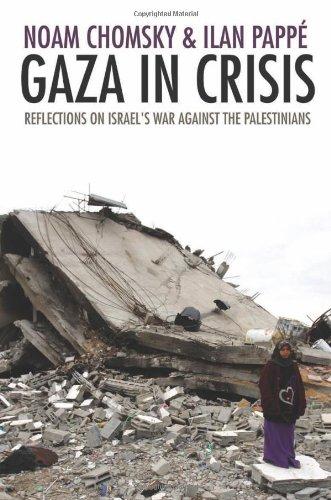
Gaza in Crisis: Reflections on Israel's War Against the Palestinians
by
Ilan Pappé
,
Noam Chomsky
and
Frank Barat
Published 9 Nov 2010
Ironically, most Israelis, according to 2006 polls, looked at Gaza as an independent Palestinian state that Israel has graciously allowed to emerge.12 The leadership, and particularly the army, saw it as a prison with the most dangerous community of inmates, which had to be managed ruthlessly one way or another. Thus, the ghettoization of the Palestinians in Gaza did not reap any dividends. The ghettoized community continued to express its will for life by firing primitive missiles into Israel. Ghettoizing or quarantining unwanted communities, even if they were regarded as dangerous, has never worked in history as a solution. The Jews know it best from their own history. The final strategy was not articulated and in its stead it seemed that the daily military activity began to emerge as the new strategy itself and thus the “punitive” tactics turned into genocidal strategy in 2006.
…
INVOLVEMENT IN THE PALESTINE QUESTION THE BLACKSTONE-SCOFIELD LEGACY THE KING-CRANE LEGACY THE LAGUARDIA AND KENEN LEGACY THE FIVE SISTERS’ LEGACY THE MORGENTHAU AND WALTZ LEGACY CONCLUSION THREE - STATE OF DENIAL: THE NAKBAH IN ISRAELI HISTORY AND TODAY THE ERASED CHAPTERS OF EVIL PROFESSIONAL REMEMBERING AND THE NAKBAH NAKBAH MEMORY IN THE PUBLIC EYE THE STRUGGLE AGAINST NAKBAH DENIAL NAKBAH DENIAL AND THE PALESTINE-ISRAEL PEACE PROCESS FUTURE PROSPECTS FOUR - “EXTERMINATE ALL THE BRUTES”: GAZA 2009 FIVE - BLUEPRINT FOR A ONE-STATE MOVEMENT: A TROUBLED HISTORY A TROUBLED HISTORY RESELLING THE PAST DECONSTRUCTING THE PEACE PROCESS PREPARING FOR THE FUTURE: THE MODULAR MODEL SIX - THE GHETTOIZATION OF PALESTINE: A DIALOGUE WITH ILAN PAPPÉ AND NOAM CHOMSKY SEVEN - THE KILLING FIELDS OF GAZA 2004-2009 MOVING TO A NEW STRATEGY, 2000-2005 2004: THE DUMMY CITY 2005: “FIRST RAINS” 2006: “SUMMER RAINS” AND “AUTUMN CLOUDS” 2007-2008: THE POLICY BECOMES A STRATEGY A GENOCIDAL POLICY?
…
Ignorance, the people, and by popular resistance and a refusal to remain silent were the first answers that came to mind. I sincerely believe that what is happening in Palestine would never have lasted this long if the public were properly informed about what had been really taking place in this part of the Middle East. Noam, Ilan, and I worked on the dialogue, now titled “The Ghettoization of Palestine,” again, gave it more insight, edited some questions, and added new ones. Ilan additionally contributed several articles addressing various crucial aspects of the Israel-Palestine question and Noam reworked his astonishing piece “‘Exterminate All the Brutes’: Gaza 2009.” Combining interviews and essays was important.
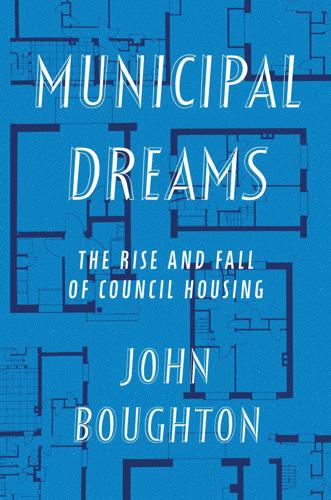
Municipal Dreams: The Rise and Fall of Council Housing
by
John Boughton
Published 14 May 2018
There were riots again in Tottenham in August 2011 after the police shot Mark Duggan, an estate resident, and allegedly mistreated an initially peaceful vigil protesting the killing outside Tottenham Police Station. Five days of looting and violence followed in urban centres across the country. An agonised inquest followed, but one ready response among Conservative politicians such as Iain Duncan Smith was to blame ‘ghettoised’ council estates.34 The analysis was reprised by Cameron as he launched his ‘blitz’ on poverty: The riots of 2011 didn’t emerge from within terraced streets or low-rise apartment buildings. As spatial analysis of the riots has shown, the rioters came overwhelmingly from these post-war estates.
…
But what stood out most was a widespread resentment of police behaviour – ‘a lack of respect as well as anger at what was felt to be discriminatory treatment’.37 These explanations were borne out in a close study of the rioting which took place on the Pendleton Estate in Salford: the riots were a ‘response, albeit lacking in a formal political articulation, to perceived injustices that relate to poverty, exclusion and oppressive policing’.38 At any rate, the reflex to blame the design of modernist council estates seems simplistic – and too convenient to those politicians seeking not only a scapegoat to blame for social disorder but an opportunity for a little real estate redevelopment. The charge of ‘ghettoisation’ has greater weight but it contains both a truth – as the preceding pages have demonstrated – and a further simplification. Social housing estates may well be one of the most potent symbols of current inequalities – though their reality is more diverse and complex – but the Brexit vote showed how widely felt are feelings of alienation and exclusion.
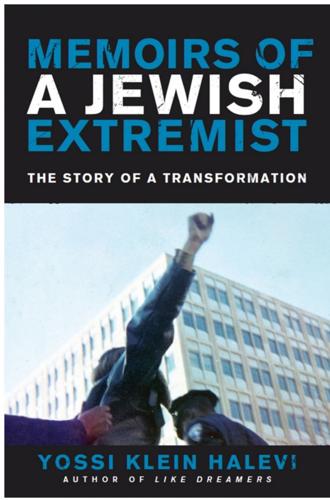
Memoirs of a Jewish Extremist: The Story of a Transformation
by
Yossi Klein Halevi
Published 13 Nov 1995
The repetition of the word “justice,” note the rabbis, is to remind us that not only ends but also means must be just. Inspired by the post-Holocaust Jewish renaissance, many young Jews of my generation—in America, the Soviet Union and throughout the Diaspora—rejected assimilation and adopted a Jewish identity. My journey worked differently: from the heart of Jewish self-ghettoization to an attempt to make peace with the world, embracing not only my Jewish identity but also my place within humanity. For many Holocaust survivors and their children, being a part of humanity was by no means a given. The message of the war against the Jews, unfolding unimpeded for over a decade in the heart of Europe, was exactly as the Nazis intended: Jews were wholly other.
…
But now, a vicarious Israeli, I bopped to the back of the bus, where Italian kids in leather jackets pushed each other for fun and yelled at the passing streets. I took a window seat, propped my foot against the seat before me, and slumped, nonchalant, demonstratively oblivious to danger. BTA was modern Orthodox. Its main premise was that an Orthodox Jew could enter “the world” by becoming a professional, yet still remain mentally ghettoized. Unlike students at ultra-Orthodox yeshivas, we were permitted to go to movies and basketball games, to watch Gentiles from a distance; but actually fraternizing with them was unthinkable. The spirit of modernity—a curiosity about foreign cultures—didn’t penetrate our Judaism. The school transmitted opposite messages.
…
Israel’s isolation struck at the most tender part of the Jewish psyche: our sense of abandonment, the suspicion that not only the Nazis but the onlookers, too, had wanted us dead, that the killing went on unimpeded for six years because humanity was secretly grateful to Hitler. Only Israel’s existence, our antidote to the Holocaust, had prevented most Jews from rejecting the world in bitter self-ghettoization. But now the pretense of normalcy was over. There could be no crueler irony for Jews than transforming Israel into a ghetto. Inevitably, the suppressed rage from the Holocaust was released; and Israelis began seeing their hope in the grim Revisionist outcasts, in Menachem Begin and his right-wing Likud party.
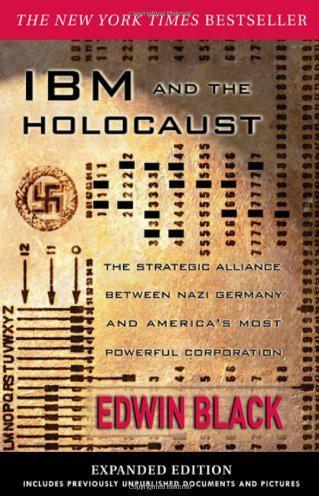
IBM and the Holocaust
by
Edwin Black
Published 30 Jun 2001
The status of each of his grandparents must be given and substantiated by evidence in case of inquiry.”2 Certainly, by May 1939, virtually every “practicing Jew” had been registered, surveyed, numbered, and sorted numerous times in a series of overlapping, often disjointed, campaigns. The purpose of the 1939 census was to identify the so-called “racial Jews” in Germany proper, add Jews of any definition in the new territories of the expanded Reich, and locate each individual before being ghettoized or subjected to other action. Indeed the ghettoization decrees had begun that very month. In addition, Germany was preparing for all-out war and without the census, it could not identify exactly where all its draftable men were, and which women would step into their economic shoes once mobilized.3 As such, the census was vital to Hitler’s two-front war—one against the Jews, and one against all of Europe.
…
When Hitler came to power, a central Nazi goal was to identify and destroy Germany’s 600,000-member Jewish community. To Nazis, Jews were not just those who practiced Judaism, but those of Jewish blood, regardless of their assimilation, intermarriage, religious activity, or even conversion to Christianity. Only after Jews were identified could they be targeted for asset confiscation, ghettoization, deportation, and ultimately extermination. To search generations of communal, church, and governmental records all across Germany—and later throughout Europe—was a cross-indexing task so monumental, it called for a computer. But in 1933, no computer existed. When the Reich needed to mount a systematic campaign of Jewish economic disenfranchisement and later began the massive movement of European Jews out of their homes and into ghettos, once again, the task was so prodigious it called for a computer.
…
Preliminary analyzed results were ready by November 10, 1939, the one-year anniversary of Kristallnacht, and, more importantly for Hitler, the anniversary of Germany’s surrender in the Great War.10 Intense demand to access the final information on racial Jews came from competing Nazi organizations as well as state and national government bureaus. But anxious local and state agencies would have to wait. For example, municipal officials throughout Saxony asked their regional statistical offices if they could examine the census data first to speed their ghettoization and confiscation campaigns. But the Reich Statistical Office in Berlin said no. Greater priority was granted to the SD and Adolf Eichmann’s Referat II 112, which both received copies of all census registration lists.11 The census yielded exactly the data Nazi Germany needed, including data for the areas beyond Germany.
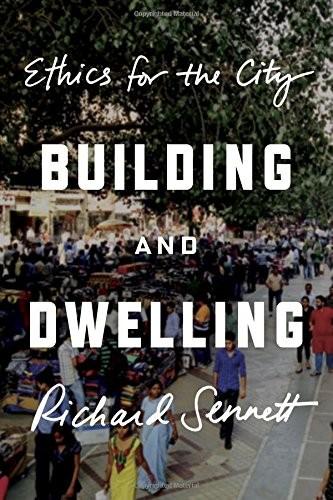
Building and Dwelling: Ethics for the City
by
Richard Sennett
Published 9 Apr 2018
The Venetian ghetto did not aim at conversion; the enclosing of the Jewish community marked the irremediable difference of their being Jewish. Exclusion of the Venetian sort was seemingly easy. It required only a space which could be totally isolated and sealed off. The essential element of built form is the containing wall. Water made the isolating wall around the islanded Jews then, just as now the ‘security’ fence made of steel ghettoizes Palestinians. But exclusion of an Other who is nonetheless needed in the city makes this kind of construction not so straightforward; the wall can enable the Other to prosper internally, whereas the dominant culture wants only to maintain it in conditions of bare survival. Jews gained bodily security, within the walls of the ghetto, so long as they stayed there.
…
The strands of Renaissance Judaism were woven of very different social materials: Ashkenazi Jews did not speak the same language as Sephardic Jews, nor share a common culture, and the doctrinal differences between them were great. Levantine Jews in turn were composed of several schismatic sects. Once ghettoized, constrained to live in the same space, they had to learn how to mix with one another, and to live together. In part, this involved speaking as ‘Jews’ to the outside world, cooperating to protect their interests, even while continuing to disagree among themselves. In the Venetian ghetto, as shortly afterwards in the Roman ghetto, the Jews formed fraternal organizations which met in synagogues, but these dealt with purely secular matters concerning the ghetto.
…
If theologically the hyphen represents the neighbour condition, it also represents the neighbour condition among men and women – at once adjacent and separate.13 For over 3,000 years the Jews had survived in small cells mixed among alien, oppressive peoples, sustained in their faith no matter where they lived. Now ‘being Jewish’ became a shared spatial identity, even as Judaism continued to divide Jews religiously. The circumstances of ghettoization forced upon the Venetian Jews a necessary fiction – that of speaking with one voice. The space of the ghetto forced on them habits shared in common, but dwelling together also prompted them, along Levinas’s lines, to think of themselves as neighbours. As for the oppressors, hut and ghetto represent two ways of shunning people.
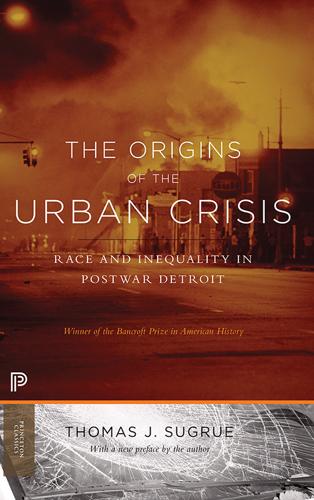
The Origins of the Urban Crisis
by
Sugrue, Thomas J.
Despite the supposedly liberal mores of the North, despite successful court challenges to housing market discrimination, despite open housing advocacy and legislation, northern cities experienced rates of segregation that barely changed between the 1940s and the present. Segregated housing compounded the urban crisis. The combination of deindustrialization, white flight, and hardening ghettoization proved devastating. Residence in the inner city became a self-perpetuating stigma. Increasing joblessness, and the decaying infrastructure of inner-city neighborhoods, reinforced white stereotypes of black people, families, and communities.14 Racial conflict and tension surfaced as a persistent refrain in the lives of urban Americans in the postwar era.
…
If they were, they would not have had such extraordinary staying power. In the postwar city, blackness and whiteness assumed a spatial definition. The physical state of African American neighborhoods and white neighborhoods in Detroit reinforced perceptions of race. The completeness of racial segregation made ghettoization seem an inevitable, natural consequence of profound racial differences. The barriers that kept blacks confined to racially isolated, deteriorating, inner-city neighborhoods were largely invisible to white Detroiters. To the majority of untutored white observers, visible poverty, overcrowding, and deteriorating houses were signs of individual moral deficiencies, not manifestations of structural inequalities.
…
Likewise, tenants who could barely afford to make rent payments had few resources to maintain their apartments in decent condition. The high turnover of tenants meant that few had any long-term commitment to the quality of life in their buildings. The result was detrimental to all concerned. Members of a group representing apartment dwellers in a West Side neighborhood described the self-perpetuating cycle of ghettoization: “When apartment buildings are poorly maintained, the whole neighborhood is downgraded. When rents are exorbitant, people cannot long afford to pay; this leads to a constantly changing community rather than to stable neighborhood relations.”78 Detroit’s housing shortage and its racial boundaries held firm for most of the 1940s.
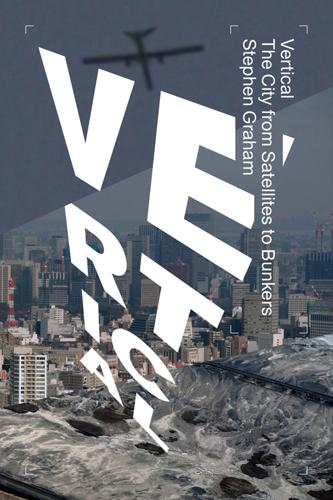
Vertical: The City From Satellites to Bunkers
by
Stephen Graham
Published 8 Nov 2016
In the fierce debates about the design and management of vertical mass housing that developed in France, the UK, the US and elsewhere from the late 1960s, vertical mass housing began to be read off as an (often racialised) proxy for pathologically rooted ‘urban problems’: crime, poverty, gang violence, ghettoisation and drug misuse. Jane Jacobs, the most influential critic of all, complained of the ‘great blight of dullness’ in the cheap and poorly designed US public housing projects.18 Dutch planner John Habraken, meanwhile, criticised modernist planners and architects for being ‘bewitch[ed] by partially understood technical possibilities’ which resulted in a soul-destroying ‘“automatism” and uniformity in housing design.’19 Certainly, the forcible and arrogant rehousing and removal of populations into warrens of cell-like apartments within badly sited, poorly designed and under-landscaped housing towers was often socially disastrous.
…
Even in their ruinous condition, they can still offer a sense of possibility which decades of being told that ‘There is No Alternative’ has almost beaten out of us.’35 Successes in vertical social housing have occurred when design, maintenance and management have been of a high quality; where residents have been able to maintain their economic fortunes amid dramatic processes of urban restructuring; and where residents have had continued inputs into the design and management of their homes. The careful integration of socially rented housing and avoidance of ethnic ghettoisation have also often also been crucial. In nations where mass high-rise housing has been organised for whole populations – as in Singapore and Hong Kong – high levels of maintenance, rent regulation and the provision of mass transit, decent public and commercial services and quality landscaping have helped to make tower living relatively popular, even for families.
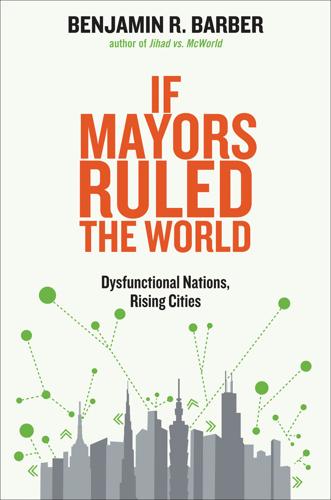
If Mayors Ruled the World: Dysfunctional Nations, Rising Cities
by
Benjamin R. Barber
Published 5 Nov 2013
Take for example, newly gated neighborhoods blocked off from major thoroughfares by traffic diversions; or gentrification in the name of integration that actually allows market forces to push poor people out. Thus, we have recently seen what Alan Ehrenhalt has understood as a restratification or “inversion” in which ghettos give way to postindustrial centers of upscale-living downtowns, while suburbs become ghettoized—trends obvious in Paris and Chicago alike.40 If the persistence of ghettos is the bad news, the city itself as a form of human community inherently inclined to integration is the good news. Carl H. Nightingale has wisely remarked on the contradiction: “Despite centuries of segregation,” he writes, “cities have always been the site for the largest-scale interactions between people from different parts of the world, and they are responsible for most of the mixing of peoples and cultures in world history.”41 Nightingale sees the late nineteenth and early twentieth centuries as the high point of urban segregation everywhere, remarking on how the neighborhoods around the grand imperial monuments in Delhi and the beaux-arts boulevards in Algiers or Buenos Aires act as cordons sanitaires keeping out the poor.
…
The same economic trends are everywhere evident in the developing world, but they too play out in distinctive cultural and religious settings. In Europe, it is not skin color but Islam, both as religion and culture, that occasions segregation, bigotry, and inequality. Muslims have not been as completely ghettoized by geography and polarization as African-Americans once were in the United States, but the inequalities attending their economic, educational, and residential status have made for sharp divisions and an insidious reactionary politics of fear that creates ghettos of the mind more perverse than physical ghettos.
…
The new technology allows us to assemble en masse anywhere and at the speed of light, but the billion on the Internet gather only as individuals in small coteries of friends and family; others, aliens, and enemies are not welcome. The web removes all physical limits from deliberation and common decision making but seems to reinforce social ghettoization and groupthink, as Eli Pariser shows in The Filter Bubble, his book on Google and search engines.21 Enthusiasts cite the Arab Spring and Occupy Wall Street as exemplars of how technology can catalyze democracy. The culture of the web, they say, is embedded in the genes of contemporary rebels, defining not just how dissidents organize as free agents but how they think, how they understand their freedom.
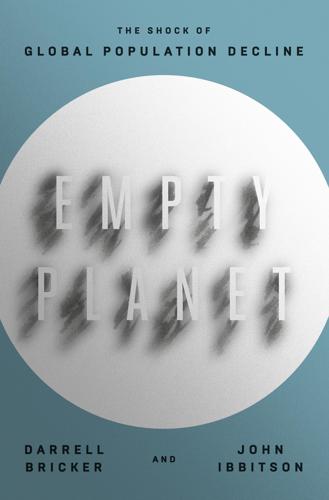
Empty Planet: The Shock of Global Population Decline
by
Darrell Bricker
and
John Ibbitson
Published 5 Feb 2019
As those lines blur and begin to dissolve, the Census Bureau will have the challenging task of trying to define what ethnicity or combination of ethnicities a person might be. The final stirring of the melting pot will be happily underway.345 A caveat: “We are becoming a more diverse society, but not a post-racial one,” the sociologist Richard Alba noted. The history of slavery, segregation, ghettoization, and other forms of discrimination are still too raw to airily dismiss. “But we need to admit that these categories are at best rough approximations when it comes to understanding who we are becoming,” he adds. “Our society, transformed by immigration and new forms of assimilation, hasn’t yet developed the vocabulary to capture the nuanced realities of this evolution.”346 Whatever hopeful signals a declining birth rate might send for future racial reconciliation, the fact remains that aging, low-fertility populations face deep challenges as their workforce and then their entire population begins to shrink.
…
The Vietnamese quickly integrated into society; people joked that every corner store seemed to be owned by a Vietnamese husband and wife; two decades later, it seemed as though every top-of-the-class student in the country’s universities was the son or daughter of those grocery-store owners. Second, private sponsorship was an excellent way to integrate refugees, who were dispersed across the country and who were well supported by the local community, preventing ghettoization. Private sponsorship became a permanent facet of Canada’s refugee program, especially during times of crisis. About half of the fifty thousand Syrian refugees who came to Canada in 2015 and 2016 were privately sponsored. There were far more volunteers ready and willing to sponsor refugees than there were properly vetted candidates.
…
We have a hunch that the really exciting music and theater, the truly groundbreaking innovations, the revolutionary new thinking in the last decades of this century will more likely come from Lagos or Mumbai than from Paris or Tokyo. Even the least fertile countries in Europe and Asia could, if they wanted to, stabilize their populations by accepting immigrants. But this view may be naive. Immigration without multiculturalism, as we’ve said, is a recipe for exclusion, ghettoization, marginalization, violence, and ultimately, the worst of fates: the collapse of the public square, the inability of different groups within a society to share space and assumptions and values together. It’s all well and good to say newcomers are welcome, so long as they adapt to our ways. But for immigration to work, each side has to adapt; each side has to give.
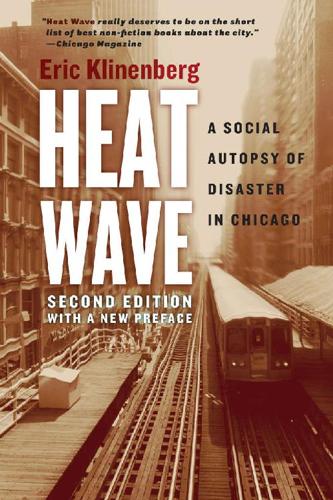
Heat Wave: A Social Autopsy of Disaster in Chicago
by
Eric Klinenberg
Published 11 Jul 2002
Douglas Massey and Nancy Denton capture part of the process in their argument that North Lawndale “became a wasteland” while Little Village evolved into “a beehive of commercial activity” because of “the degree of segregation” in North Lawndale.67 Yet the differences between the two areas—both of which are dominated by so-called minority populations and had few whites—clearly extend beyond segregation. Unlike African Americans in North Lawndale and several other Chicago community areas, Latinos in Little Village did not experience the particular constraints of ghettoization, the rapid and continuous abandonment of institutions and residents, or the arson and violence that contribute to the destruction of the local social ecology.68 The second crucial reason that Little Village developed into a commercial and residential hub is that since the 1960s the area has become a magnet for Mexican and Central American migrants and immigrants as well as for Mexican Americans already in Chicago, groups whose presence in the city has increased dramatically while the population of whites and blacks has declined.69 The continuous migration of Mexican Americans to this community area has replenished its human resources and regenerated the commercial economy of retailers and small local businesses, such as food stores, travel agencies, health-care providers, and telecommunications companies.
…
As is typical in contemporary health research and public policy discourse, much of the discussion about the group-specific health outcomes during the heat wave has been cast in ethnic or racial terms, with ethnic difference or cultural variation serving as explanations for ethnic mortality rates. The tale of the neighborhoods suggests that a key reason that African Americans had the highest death rates in the Chicago heat wave is that they are the only group in the city segregated and ghettoized in community areas with high levels of abandoned housing stock, empty lots, depleted commercial infrastructure, population decline, degraded sidewalks, parks, and streets, and impoverished institutions.82 Violent crime and active street-level drug markets, which are facilitated by these ecological conditions, exacerbate the difficulties of using public space and organizing effective support networks in such areas.
…
In ideal-typical terms, a ghetto may be characterized as a bounded, racially and/or culturally uniform socio-spatial formation based on (1) the forcible relegation of (2) a ‘negatively typed’ population . . . to a (3) reserved, ‘frontier territory,’ in which this population (4) develops under duress a set of parallel institutions” that (5) duplicate dominant institutions “at an incomplete and inferior level while (6) maintaining those who rely on them in a state of structural dependency.” According to Wacquant, in U.S. cities only African-Americans have been subjected to unmatched levels of each of the five “elementary forms of racial domination: prejudice, discrimination, segregation, ghettoization, and violence.” 69. According to 2000 figures from the U.S. Bureau if the Census, the official Hispanic population in Chicago grew by more than 200,000 between 1990 and 2000, while the number of whites fell by 150,000 and the African-American population fell by 20,000. Hispanics also accounted for 69 percent of the new residents in the six-county metropolitan region. 70.

Melting Pot or Civil War?: A Son of Immigrants Makes the Case Against Open Borders
by
Reihan Salam
Published 24 Sep 2018
Until recently, African Americans were excluded from it, often violently, as were other nonwhite groups. Today, rising rates of intermarriage and residential integration suggest that a growing minority of blacks are finding a place in the mainstream. But it’s still just a minority: most blacks, burdened by the legacy of enslavement and segregation, find themselves ghettoized in segregated social networks. Among newcomers of Asian and Latin American origin, we are seeing a range of experiences. In a study of Mexican Americans, Alba, Tomás Jiménez, and Helen Marrow found that at one end of the economic spectrum, Mexican immigrants and their descendants are being incorporated into the mainstream.5 However, at the other end of it, we’re seeing the emergence of (some) Mexican Americans as a marginalized minority, which suffers from persistently low levels of educational attainment and income.
…
Drawing on the work of some of the aforementioned scholars, I find it useful to distinguish between amalgamation, in which intermarriage and other forms of cultural intermingling cause the ethnic boundaries separating different groups of Americans to blur to the point of insignificance, and racialization, in which a minority group finds itself ghettoized in segregated social networks. Two Immigrants, Two Kinds of Assimilation Consider the lives of two Spanish-speaking immigrants from Mexico. Patricia is a highly educated bilingual professional who enters the United States on a skilled worker visa, and who works alongside a diverse group of English-speaking colleagues.
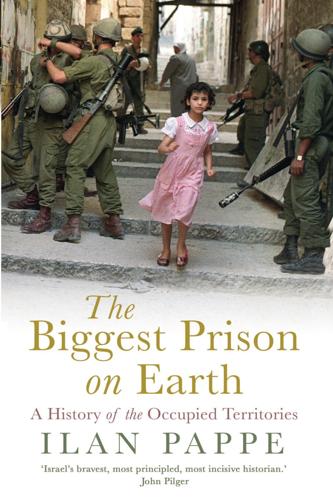
The Biggest Prison on Earth: A History of the Occupied Territories
by
Ilan Pappé
Published 21 Jun 2017
Israel did not covet any chunk of land in the Strip, as it did in the West Bank; nor did the Strip have a hinterland, like Jordan, to which the Palestinians of Gaza could have been expelled. As mentioned before, ethnic cleansing was an ineffective option here. Up to 2007, the salient strategy in Gaza had been ghettoizing the Palestinians there, but this was no longer working. The ghettoized community continued to express its zest for life by firing primitive missiles into Israel. Ghettoizing or quarantining unwanted communities, even if they were regarded as sub-human or dangerous, had historically never been a solution. The Jews knew it best from their own history. Hamas’s counter-operation culminated in the capture of the Israeli soldier Gilad Shalit on Gaza’s soil in June 2006.
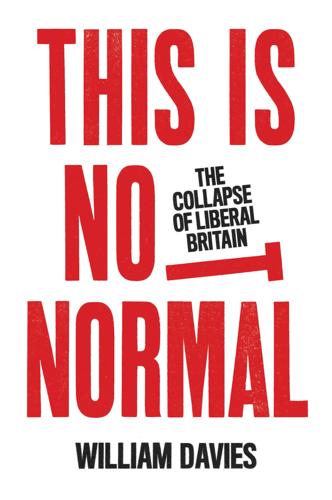
This Is Not Normal: The Collapse of Liberal Britain
by
William Davies
Published 28 Sep 2020
The data deluge The current threat to democracy is often seen to emanate from new forms of propaganda, with the implication that lies are being deliberately fed to a naive and over-emotional public. The simultaneous rise of populist parties and digital platforms has triggered well-known anxieties regarding the fate of truth in democratic societies. Fake news and internet echo chambers are believed to manipulate and ghettoise certain communities, for shadowy ends. Key groups – millennials or the white working class, say – are accused of being easily persuadable, thanks to their excessive sentimentality. This diagnosis exaggerates old-fashioned threats while overlooking new phenomena. Over-reliant on analogies to twentieth-century totalitarianism, it paints the present moment as a moral conflict between truth and lies, with an unthinking public passively consuming the results.
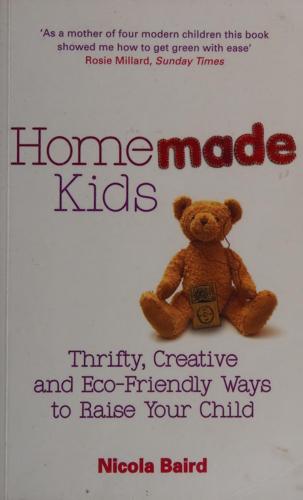
Homemade Kids: Thrifty, Creative and Eco-Friendly Ways to Raise Your Child
by
Nicola Baird
Published 14 Sep 2010
Babies are fabulously portable, they will not insist on attending music, swimming and singing classes during your maternity leave or childcare days. What they want is to be with you. It’s not always easy in a baby-unfriendly culture to manage this so consider the options and aim for the babyfriendly choice. That doesn’t mean ghettoising yourself for all those pre-school years in places only children go, it’s just a suggestion that babies and children are an inspiring part of our lives so keep that enthusiasm by opting to be part of the events and activities that give that feeling back to you too. 230. Valuing Local Life Small O Try out a One O'Clock club (or other local meeting point for families with 0—-5-year-olds).
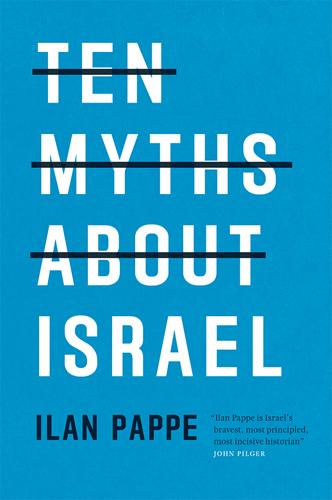
Ten Myths About Israel
by
Ilan Pappe
Published 1 May 2017
It remains in the hands of Hamas, while the Palestinian Authority seems to run the fragmented West Bank with Israeli and American blessing. There is no chunk of land in the Strip that Israel covets and there is no hinterland, like Jordan, into which it can expel the Palestinians. Ethnic cleansing as the means to a solution is ineffective here. The earliest strategy adopted in the Strip was the ghettoization of the Palestinians, but this was not working. The besieged community expressed its will to life by firing primitive missiles into Israel. The next attack on this community was often even more horrific and barbaric. On September 12, 2005, Israeli forces left the Gaza Strip. Simultaneously, the Israeli army invaded the town of Tul-Karim, made arrests on a massive scale, especially activists of the Islamic Jihad, an ally of Hamas, and killed a few of its people.
…
It seems that nothing is going to stop Israel now from completing its colonization of the West Bank and continuing its siege on Gaza. This might be achieved with international blessing, but there are quite enough politicians in Israel who seem willing to proceed without that blessing. In either case, Israel will need to use brutal force to implement its vision of a “solution”: annexing half of the West Bank, ghettoizing the other half as well as the Gaza Strip, and imposing an apartheid regime of a sort on its own Palestinian citizens. Such a situation will render any discourse on the two-states solution irrelevant and obsolete. In ancient times, the dead were buried with their beloved artifacts and belongings.
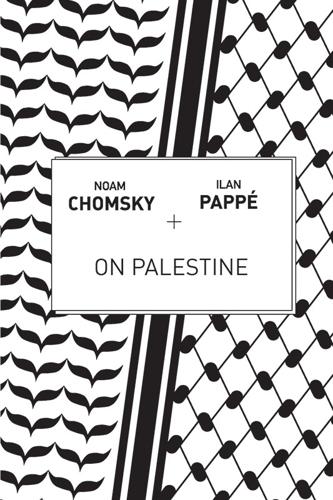
On Palestine
by
Noam Chomsky
,
Ilan Pappé
and
Frank Barat
Published 18 Mar 2015
Israelis do not find it therefore at all bizarre or unacceptable that determining the results of a democratic process by first determining by force who makes up the electorate gets the desired result: a purely Jewish state in a binational country. This charade is still marketed successfully in the West: Israel is a democracy because the majority decides what it wants, even if the majority is determined by means of colonization, ethnic cleansing, and, recently, by ghettoizing the Palestinians in the Gaza Strip, enclaving them in Areas A and B in the West Bank and in isolated villages in the Greater Jerusalem area, the Jordan Valley, and the Bedouin reservations in the Naqab. Israeli Jews need to safeguard the existence of the Palestinians, threatened daily by their government and army, before nourishing the project of coexistence.
…
The geopolitical location of the West Bank creates the impression in Israel, at least, that it is possible to achieve this without anticipating a third uprising or too much international condemnation. The Gaza Strip, due to its unique geopolitical location, did not lend itself that easily to such a strategy. Ever since 1994, and even more so when Ariel Sharon came to power as prime minister in the early 2000s, the strategy there has been to ghettoize Gaza and somehow hope that the people there—1.8 million as of today—would be dropped into eternal oblivion. But the ghetto proved to be rebellious and unwilling to live under conditions of strangulation, isolation, starvation, and economic collapse. There was no way it would be annexed to Egypt, either in 1948 or in 2014.
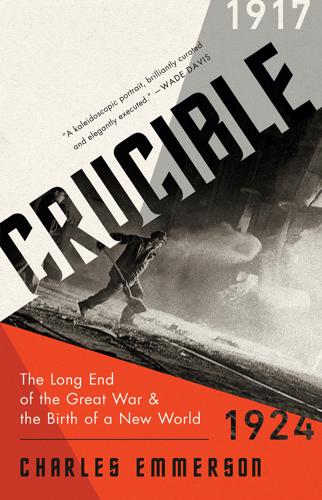
Crucible: The Long End of the Great War and the Birth of a New World, 1917-1924
by
Charles Emmerson
Published 14 Oct 2019
White workers in the city’s booming war industries protest that new black immigrants fleeing poverty and violence in the rural South are holding down wages and introducing crime into the city. In May, a white man is shot by a black man during a hold-up, prompting a downtown riot. Soon after, black labourers at a meat-packing plant are beaten up as they leave work. Whites move out of the neighbourhoods where black families move in. The city is ghettoised. One Sunday in July, the tensions explode. In the course of a sweltering day, a string of assaults take place. White youths in a Ford motor car cruise along Market Avenue, unloading a gun at random into black houses and shops as they drive by. That night, a police automobile, perhaps mistaken for the same Ford, comes under fire from black residents.
…
‘It is the white race, roaming the world, that has left its trail of bastards and outraged women and then raised its hands to high heaven and deplored race mixture.’ It is quite wrong to suggest that two individuals, of whatever race, may not marry if they so desire. A creed of race separateness can only lead to ghettoisation. It encourages the awful rise of the Ku Klux Klan. It encourages Garvey. ‘The day black men love black men simply because they are black is the day they will hate white men simply because they are white’, he writes: ‘and then, God help us all!’ SFAYAT, TUNISIA–ISTANBUL: Over a year now since Wrangel’s fleet left Crimea.
…
He declares that Garveyism is a ‘bubble’ which now finally has burst, however appealing the ideas behind the Black Star Line or the undoubted appeal of the back-to-Africa refrain. The two men have never even met. Du Bois hears the same dismal message from all over the world, he writes: the warning that race war is inevitable and that segregation, ghettoisation, emigration and separation is the future. Racism has always been there, but now new and dangerous theories of race have arisen, to be exploited by the unscrupulous and the foolish, white and black, from the pavement pundits of Harlem to the beer-hall orators of Munich. Race superiority has become a cult, and its acolytes are everywhere.

Is It Just Me?
by
Miranda Hart
Published 14 Apr 2012
At a dinner party you can initiate rowdy games of ‘Would You Rather’ at one end of the table, whilst people are earnestly discussing the new wave of young women playwrights at the other. So as they’re asking, whilst leaning forward, glasses on nose, mouth puckered: ‘But don’t you think that the whole concept of a new wave constitutes a ghettoisation of female talent?’ you’ll be asking, leaning back in your chair, giggling, a bit pissed: ‘Would you rather have an elbow on your ear, or an ear on your elbow?’ Which is a question that does need asking, I rather strongly feel. Other questions in the ‘Would You Rather’ category might include: ‘Would you rather have squirrels for feet or hamsters for hands?

The New Nomads: How the Migration Revolution Is Making the World a Better Place
by
Felix Marquardt
Published 7 Jul 2021
When considering how and on what basis, Louis Blanc’s phrase, often attributed to Karl Marx, ‘from each according to their ability, to each according to their needs’, seems like a wise rule of thumb. With this in mind, I think that centralised governments often do a terrible job of settling refugees. With numbers concentrated in large metropolises, refugees become ghettoised and isolated. They learn little about the place they have ended up, and have few opportunities to start rebuilding their lives away from the designation ‘refugee’. Thoughtfully and sensibly distributed around a nation, however – particularly to places in urgent need of younger people – we can prolong the process of that seamless infusion which has been going for millennia, rather than give rise to fears of an ‘invasion’.
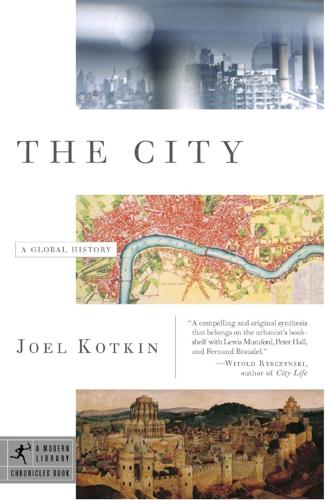
The City: A Global History
by
Joel Kotkin
Published 1 Jan 2005
Table of Contents Title Page Dedication Praise PREFACE Modern Library Chronicles CHRONOLOGY Acknowledgments INTRODUCTION: - PLACES SACRED, SAFE, AND BUSY PART ONE - ORIGINS: THE RISE OF CITIES IN A GLOBAL CONTEXT CHAPTER ONE - SACRED ORIGINS MESOPOTAMIA EGYPT INDIA AND CHINA THE AMERICAS CHAPTER TWO - PROJECTIONS OF POWER—THE RISE OF THE IMPERIAL CITY SARGON: THE CREATOR OF THE IMPERIAL CITY BABYLON: THE FIRST URBAN COLOSSUS SECURITY AND URBAN COLLAPSE CHINA: THE ENDURING URBAN ORDER CHAPTER THREE - THE FIRST COMMERCIAL CAPITALS THE RISE OF PHOENICIA “WHOSE MERCHANTS ARE PRINCES” THE ROOTS OF PHOENICIAN DECLINE PART TWO - CLASSICAL CITIES IN EUROPE CHAPTER FOUR - THE GREEK ACHIEVEMENT CRETE MYCENAE: GREEK PRECURSOR THE CLASSICAL POLIS THE GREEK DIASPORA THE TWILIGHT OF THE CITY-STATES ALEXANDER AND THE HELLENISTIC CITY ALEXANDRIA: THE FIRST GREAT COSMOPOLIS UNRAVELING OF ALEXANDER’S VISION CHAPTER FIVE - ROME—THE FIRST MEGACITY “THE VICTORIOUS ROMANS” THE MAKING OF THE IMPERIAL CITY ROME: THE ARCHETYPAL MEGACITY “A CONFEDERATION OF URBAN CELLS” CHAPTER SIX - THE ECLIPSE OF THE CLASSICAL CITY THE CITY OF MAN VERSUS THE CITY OF GOD “ALL IS NEGLECT” CONSTANTINOPLE: URBAN SURVIVOR PART THREE - THE ORIENTAL EPOCH CHAPTER SEVEN - THE ISLAMIC ARCHIPELAGO MUHAMMAD’S URBAN VISION THE NATURE OF THE ISLAMIC CITY DAMASCUS: PARADISE ON EARTH BAGHDAD: “CROSSROADS OF THE WORLD” CAIRO’S GOLDEN AGE FROM NORTH AFRICA TO THE BORDERS OF CHINA INDIA’S ISLAMIC REBIRTH CHAPTER EIGHT - CITIES OF THE MIDDLE KINGDOM URBAN TRADITION IN AN AGRICULTURAL SOCIETY “THE ASTRAL CENTER OF THE UNIVERSAL ORDER” “GREAT CLOUDS IN THE SKY” CHAPTER NINE - OPPORTUNITY LOST THE PROBLEM OF PROSPERITY THE LIMITS OF AUTOCRACY THE SUPPRESSION OF ENTREPRENEURS EUROPE’S REEMERGENCE PART FOUR - WESTERN CITIES REASSERT THEIR PRIMACY CHAPTER TEN - EUROPE’S URBAN RENAISSANCE THE SACRED ROOTS OF THE RENAISSANCE THE RETURN OF THE CITY-STATES VENICE: “JEWEL BOX OF THE WORLD” FLORENCE AND THE EMERGENCE OF MODERN URBAN POLITICS IMPERIAL CITIES OVERCOME THE CITY-STATES THE IBERIAN ASCENDANCY PARIS: THE ULTIMATE EUROPEAN CAPITAL CITY CHAPTER ELEVEN - CITIES OF MAMMON EUROPE’S EXPANDING URBAN ORDER THE FAILURE OF THE IBERIAN EMPIRES THE EMERGENCE OF THE NORTH AMSTERDAM: THE FIRST GREAT MODERN COMMERCIAL CITY LONDON THE WORLD CAPITALIST CAPITAL PART FIVE - THE INDUSTRIAL CITY CHAPTER TWELVE - THE ANGLO -AMERICAN URBAN REVOLUTION LANCASHIRE: ORIGINATOR OF THE REVOLUTION “WITH COGS TYRANNIC” “HERO OF THE AGE” URBANIZING THE “GARDEN OF THE WORLD” NEW YORK’S NINETEENTH-CENTURY INDUSTRIAL AGE EMERGENCE CITIES OF THE HEARTLAND THE CHALLENGE OF “PROGRESS” NEW YORK: THE ULTIMATE VERTICAL CITY “LIKE A WITCH AT THE GATE OF THE COUNTRY” AMERICA GOES HIGH-RISE CHAPTER THIRTEEN - INDUSTRIALISM AND ITS DISCONTENTS THE GLOBAL IMPLICATIONS OF INDUSTRIALISM JAPAN’S SUDDEN INDUSTRIALIZATION “THE IRON MONSTER” RECONSTRUCTING JAPANESE CITIES THE NAZI EXPERIMENT RUSSIA: THE THIRD ALTERNATIVE THE ROAD TO REVOLUTION THE SOVIET SYSTEM “SHARPENING OUR AXES” COMMUNISM’S URBAN LEGACY PART SIX - THE MODERN METROPOLIS CHAPTER FOURTEEN - THE SEARCH FOR A “BETTER CITY” THE PROMISE OF LOS ANGELES A SHORT HISTORY OF SUBURBIA “ONIONS FIFTY TO A ROPE” A NEW URBAN VISION “A SIX ROOM HOUSE WITH A BIG YARD” CHAPTER FIFTEEN - SUBURBIA TRIUMPHANT THE “SLEEP OF DEATH” SKYSCRAPERS AFLAME “GRAND ACHIEVEMENTS” AND THEIR LIMITATIONS THE FINAL AGONIES OF THE INDUSTRIAL CITY THE “UNIVERSAL ASPIRATION” ARGENTINA AND AUSTRALIA BRITAIN AND THE MODERN “GARDEN CITY” SUBURBANIZATION IN WESTERN EUROPE THE GHETTOIZATION OF EUROPEAN CITIES EVEN IN PARIS JAPANESE “GARDEN CITIES” CHAPTER SIXTEEN - THE POSTCOLONIAL DILEMMA THE COLONIAL LEGACY “THE URBANIZATION OF THE COUNTRYSIDE” “EUROPEAN MICROCOSMS” “THE HALCYON DAYS” A FATEFUL BREAK IN URBAN HISTORY THE RISE OF SQUATTER CITIES AFRICA’S URBAN TRAGEDY “SOCIAL TIME BOMBS” CHAPTER SEVENTEEN - “QUEENS OF THE FURTHER EAST” INDIA’S URBAN REVOLUTION EAST ASIA BREAKS THE MOLD SEOUL’S EMERGENCE BRITAIN’S SUCCESSFUL OFFSPRING SINGAPORE: ASIA’S MODEL CITY THE REVITALIZATION OF CONFUCIAN DISCOURSE CHINESE CITIES UNDER MAOISM THE FOUR MODERNIZATIONS AND THE REVIVAL OF CHINESE CITIES SHANGHAI’S RESURGENCE SUBURBIA COMES TO EAST ASIA CONCLUSION - THE URBAN FUTURE NOTES SUGGESTED READING THE MODERN LIBRARY EDITORIAL BOARD About the Author ALSO BY JOEL KOTKIN Copyright Page TO MY BROTHER, MARK Praise for THE CITY “Provocative . . .
…
Hamburg experienced a similar pattern.36 As in Britain or America, this outward movement reflected the “universal aspiration” for home ownership, which increasingly could be achieved only in new housing developments on the periphery. The home in suburbia was not so much a rejection of the metropolis, noted one German scholar, as a step “forward to a happy life.”37 THE GHETTOIZATION OF EUROPEAN CITIES Negative factors, notably fear of crime, also began to accelerate in the dispersion from Europe’s major cities.38 In some cities, this growing sense of insecurity stemmed in large part from an influx of immigrants, mainly from Africa and the Middle East. These newcomers had been recruited to Europe during labor shortages in the 1950s and 1960s, but many remained, increasingly underemployed or out of work, as the continent’s economy stagnated.39 In several places, such as Rotterdam and Amsterdam, where immigrants accounted for as much as 30 and 40 percent of the population, they represented an increasingly angry and sometimes violent element in what long had been remarkably peaceful urban areas.40 As the immigrants increasingly dominated large parts of the inner city, many native-born Netherlanders began moving out to prosperous suburban developments in the periphery.41 A similar pattern of suburban migration and increasingly immigrant-dominated inner cities also evolved in nearby Brussels.42 EVEN IN PARIS Even Paris, long the bastion of urban centralization, began to experience an outward movement.
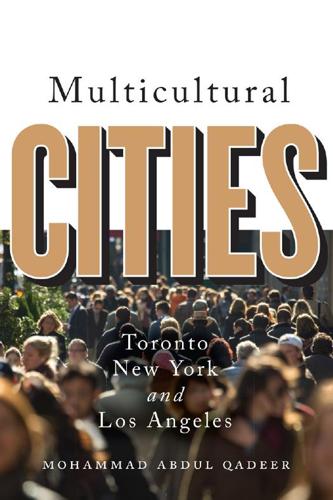
Multicultural Cities: Toronto, New York, and Los Angeles
by
Mohammed Abdul Qadeer
Published 10 Mar 2016
While the structural conditions of a city’s market do frame the choices, there is no guiding hand or systemic discrimination that herds 60 Multicultural Cities an ethnic group into a particular area. In this respect, enclaves normally represent the promise of modern multiculturalism, namely, ethnic minorities exercising their civil and human rights to live where they can afford to and feel comfortable. Enclaves, Ghettos, and Citadels The history of racial discrimination leading to the ghettoization of racial minorities haunts the discussions on enclaves. Aren’t enclaves just ghettos of immigrant minorities? It is a question often raised in public discussions. Newspapers and television often paint enclaves as breeding grounds for poverty, exclusion, and even crime.8 Yet the same media in their reporting of a city’s places of colour and excitement laud ethnic enclaves.
…
They colour social relations within ethnic and racial communities. Multiracial and multi-ethnic urban areas are affected by various processes of social differentiation, ranging from stratification, clustering, and concentration and to the structures of inequality, namely, segregation and polarization, ghettoization, and gentrification.8 Cities differ in terms of the prevalence and scope of these processes. Family, Neighbourhood, and Social Relations Where one lives is an entry point into the social life of a place. From a home a network of social relations radiate out; from casual but regular contacts with store operators, daycare workers, teachers, and neighbours to intimate and persistent relations with friends, relatives, and co-workers.
…
Yet many of those espousing the rights of minorities and the disadvantaged find multiculturalism to not be fulfilling its promise of equality and fairness. For them, it ignores the racism that has long afflicted minorities by shifting the focus onto culture instead of race and class. Another criticism from this perspective is that multiculturalism ghettoizes minorities and freezes them in primordial identities, thereby reinforcing conservative mores in community cultures.13 In the same vein, multiculturalism is said to be promoting the exoticism of song and dance rather than liberal values and human rights. Some argue for a post-multiculturalism and post-ethnicity that promotes human rights and ethno-racial equality without herding individuals into ethnic enclosures.14 The underlying theme of these criticisms is that multiculturalism goes only part way towards achieving equality of diversity.
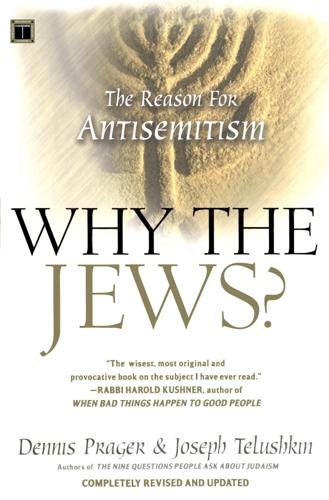
Why the Jews?: The Reason for Antisemitism
by
Dennis Prager
and
Joseph Telushkin
Published 1 Nov 2007
The marking of Jewish clothes with a badge, Fourth Lateran Council, Canon 68 (copied from Islamic legislation that had decreed that Christians wear blue belts and Jews, yellow belts). Decree of Sept. 1, 1941, authorizing that Jews are required to wear yellow star. Christians not permitted to attend Jewish ceremonies, Synod of Vienna, 1267. Friendly relations with Jews prohibited, Oct. 24, 1941. Compulsory ghettos, Synod of Breslau, 1267. Order by Reinhard Heydrich for ghettoization of Jews, Sept. 21, 1939. Christians not permitted to sell or rent real estate to Jews, Synod of Ofen, 1279. Decree providing for compulsory sale of Jewish real estate, Dec. 3, 1938. Jews not permitted to obtain academic degrees, Council of Basel, Sessio XIX. Law against Overcrowding of German Schools and Universities, April 25, 1933.
…
. … That night the Polish inhabitants of the village attacked the rabbi, beat him up, and stole his last pennies.They stole the money from the rest of the exiles as they were leaving the village. The crowd cheered them all and emptied their pockets” (October 26, 1939). Another example: Kaplan noted that in the early days of the occupation, before the Nazis had ghettoized the Jews and when Jews and Poles waited on bread lines for food, the Poles, “even though … they do not know German … have nevertheless learned to say ‘Ein Jude’ in order to get [a Jew] thrown out of line” (October 5, 1939). But what may most reveal the depth of Polish antisemitism is that most of the Poles in the anti-Nazi underground refused to help Polish Jews even during the Jews’ revolt in the Warsaw Ghetto.
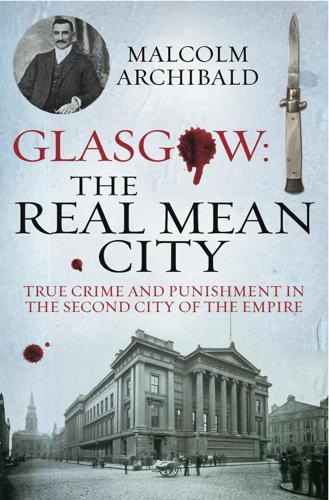
Glasgow: The Real Mean City
by
Malcolm Archibald
Published 31 Mar 2013
From at least the 1820s and perhaps particularly in the 1840s, so many Irish people immigrated into Glasgow that it had the second largest expatriate Irish community in the world, with only New York’s being greater. In 1848 1,000 Irish arrived a week. They added to the cultural mix in Glasgow – not always amicably, as religious differences and poor housing combined to create tensions that could explode into violence. Glasgow became nearly ghettoised as different religions, backgrounds and levels of employment drove people into separate areas of the city. These incomers were housed in hastily erected tenements containing houses of one and two rooms, and frequently lacking sanitation. The middle-class speculators minted money by cramming families into these hovels and charging rents that could sometimes only be afforded by sub-letting, leading to unhealthy overcrowding.

Migrant City: A New History of London
by
Panikos Panayi
Published 4 Feb 2020
This apparent universalization of settlement based upon ethnic lines reflected the increasing numbers of migrants moving to London, as well as the growing diversification of these newcomers. Ethnic concentration seems the easiest way of understanding the migrant settlement in London, perpetuated by contemporary observers racializing and exoticizing new arrivals. Ghettoization, to the extent that it exists, offers just one way of understanding the living patterns of migrant populations in London. The ghetto remains a temporary phenomenon, at least for the ethnic group which settles within it, as social mobility means that migrants and their offspring usually move to more prosperous parts of London, epitomized by the East European Jews who initially settled around Whitechapel at the end of the nineteenth century but would gradually, by the middle of the twentieth, form concentrations in a variety of suburban areas.
…
While people from the same part of the world live in close proximity throughout the capital in the twenty-first century, mixed-residence patterns have increasingly become the norm, providing a good indication of the existence of cosmopolitanism, with roots not simply in Soho but also in the East End, as one migrant group replaces another. THE HOMELESS MIGRANT Ghettoization, suburbanization and cosmopolitanism reflect the settlement of migrants in London, but so does homelessness, displaying patterns of life in the capital which characterize all ethnic groups, both majorities and minorities, partly explained by the movement of migrants, whether internal or international, who fall on hard times.
…
However, such spaces replicate themselves throughout the capital, whether in the case of, for example, Bangladeshi Spitalfields, or the settlement of Sikhs in Southall and other locations in West London such as Hounslow and Slough, leading to the type of nostalgia which characterized the Jewish East End symbolized by the film Bend it Like Beckham.126 The London borough of Ealing, in which Southall lies, had become concerned about the concentration of Sikhs from the 1960s, to the extent that it implemented a policy of ‘busing’ pupils to schools in other parts of the borough. This was a short-lived policy which broke down due to resistance from anti-racist groups in particular, although it did continue on a limited scale until 1981.127 THE SUBURB Ghettoization offers just one way of understanding the history of migrant settlement in the metropolis. Despite the level of concentration which occurred amongst the Jewish population in Stepney immediately before and after the First World War, ‘the American ghetto model of hypersegregation is not present’ in early twenty-first-century London, certainly not in the same way as black concentration in the United States,128 despite the concerns of academics and politicians,129 who simply repeated earlier anti-Irish and antisemitic discourse.

Ground Control: Fear and Happiness in the Twenty First Century City
by
Anna Minton
Published 24 Jun 2009
The result is that those who are known to cause trouble are excluded from social housing and left to the slums of the private rented sector, which are fast turning into ghettoes, in contrast to the high-security environments of public housing, fortified by Secured by Design policies. A parenting officer told me how ‘enforcement-led evictions’ were making things worse. ‘It’s been led by housing and it increases ghettoization, creating enclaves of poor-quality private rented housing, which means that things become even more polarized,’ he said, a comment which reflects crime figures looked at in the next section, which shows that crime is highest in areas of private rented housing. There is no security. Tenants who complain about poor conditions face the risk of eviction, a catch-22 the Citizens Advice Bureau revealed in its report of 2007: The Tenants’ Dilemma: Warning, Your Home is at Risk if You Dare Complain. 6 Many are what’s known as ‘HMOs’ – Houses in Multiple Occupation – which are bedsits with high concentrations of economic migrants, who may be forced to share mattresses in shifts.
…
Under Local Housing Allowance new, much larger market areas have been drawn up, which means that tenants living in more expensive parts of the city are likely to find their benefit pooled with cheaper areas, bringing benefit levels down. Shelter warns this ‘may force claimants to cluster in particular areas’ and ‘worsen the effects of marginalization’, which means that the pattern of ghettoization will increase.8 Local Housing Allowance was introduced in 2008 and at the time of writing it is too early to tell what its effects will be, but the early signs are not encouraging; figures obtained from the Department of Work and Pensions suggest that more than 63,000 people across England could be priced out of their homes.9 Equally disturbing are the accusations that the government is riding roughshod over the legal system after the House of Lords found in favour of a test case by Sheffield tenant Daniel Heffernan, who argued that his benefit had been unfairly reduced and that the Sheffield-wide market area was too large.

The Full Catastrophe: Travels Among the New Greek Ruins
by
James Angelos
Published 1 Jun 2015
This left an abundance of empty apartments that migrants began to inhabit, changing the demographics of the neighborhood rather quickly. Giannatou sipped on her coffee and pithily summarized the change for me like this: “We went to bed in Athens and woke up in Kabul.” Around the time they sent the letter, residents also planned a demonstration. “No to the ghettoization of our area,” read a flyer advertising the event. “No to the unconditional surrender of our lives.” Leftist groups from the area heard of the planned gathering, however, and, considering the committee’s tone to be one of “racism and fascism,” planned their own counterdemonstration on the square.
…
“Greece belongs to the Greeks.” Many residents greeted the formation with cheers and whistles. “Bravo! Bravo!” some yelled, and joined in the chants. “Foreigners out of Greece!” The entrants tossed leaflets pledging their intention to defend the homeland and urging Greeks to “wake up” and “resist the ghettoization of our neighborhoods.” The black-clad men held up their flags and sang the national anthem. Some raised their arms in a manner that looked to newspaper reporters present like a Nazi salute, but was, rather, as least according to the group the men belonged to, an ancient Greek salute. Before the men departed, they chanted: “Blood, honor, Golden Dawn.
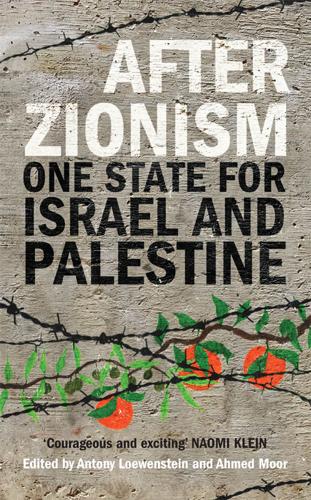
After Zionism: One State for Israel and Palestine
by
Antony Loewenstein
and
Ahmed Moor
Published 14 Jun 2012
They suffered an actual policy of expulsion up to the mid-1950s and were then submitted to a ruthless military rule that made life quite unbearable for many until the abolishment of that rule in 1967.3 The successful Israeli fragmentation of the Palestinian existence caused one huge concern for the Israelis. There were many Palestinian “problems” to deal with and each required a different treatment. Yet, however one reviews the policies towards the various Palestinian existences – as citizens in Israel, as occupied in the West Bank, ghettoised in the Gaza Strip, or exiled as refugees elsewhere – all these policies rest on an ideological infrastructure that can be defined as ethnic cleansing. The military rule over the Palestinians in Israel until 1966 and the spatial policies and comprehensive legal, economic and cultural discrimination ever after are the manifestation of that policy towards the Palestinians in Israel.
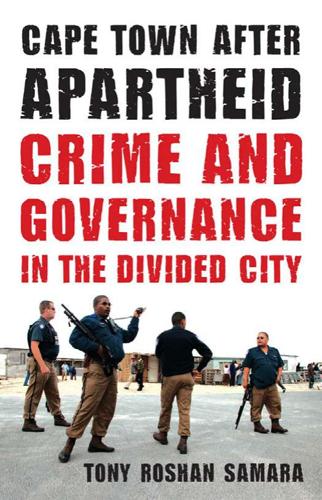
Cape Town After Apartheid: Crime and Governance in the Divided City
by
Tony Roshan Samara
Published 12 Jun 2011
An assessment of the NCPS after its first year found that virtually no action has been taken on the two “social pillars” of the strategy, with all the available funding to date already devoted to the reform of the criminal justice system, and to border patrol. . . . [T]he original national priorities have not been tackled with equal vigor—crimes against women and children were subsumed under the national victim empowerment programme. This reflects the traditional ghettoisation of issues affecting women, children, and victims, and indicates a lack of interest in what are probably the most prevalent violent crimes in South Africa.24 The assessment found similar deficiencies in the areas of rehabilitation of offenders and corruption in the criminal justice system. What these 36╇ ·â•‡ Security and Development in Postapartheid South Africa developments suggested is that from the start, the ideals of “Ready to Govern” and other early documents were rapidly being overtaken by a more “pragmatic” state relationship to crime.
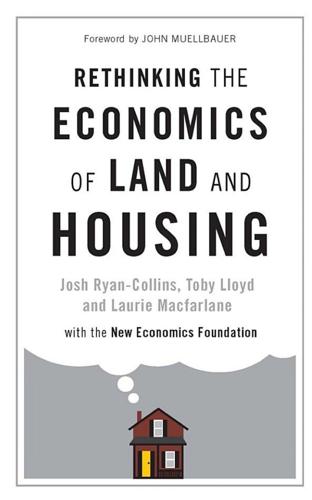
Rethinking the Economics of Land and Housing
by
Josh Ryan-Collins
,
Toby Lloyd
and
Laurie Macfarlane
Published 28 Feb 2017
This is because, at present, owner-occupation is highest among those in their forties, fifties and early sixties, and the large cohort of people who became homeowners in the 1980s are not yet old enough to pass on their wealth to future generations but will do at some time in the future. Spatial dynamics One of the feedback loops in this trend is increasing socioeconomic sorting into neighbourhoods, or ‘ghettoisation’, and an increased polarisation of house prices between areas (New Economics Foundation, 2014). Houses in more attractive neighbourhoods come to be treated as luxury goods as people are willing to pay excessively high prices to access them. Inequality levels are in turn exacerbated by the land value appreciation of homeowners in these increasingly affluent areas.
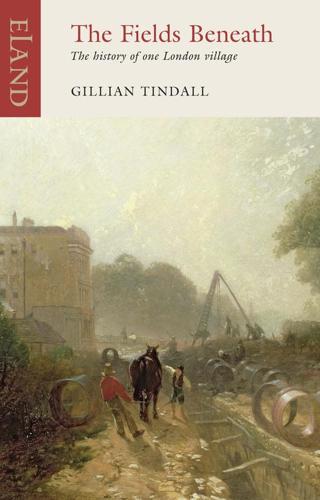
The Fields Beneath: The History of One London Village
by
Gillian Tindall
Published 1 Oct 2002
Excepting, of course, places such Kelly Street and the Crimea enclave: these, once narrowly saved from demolition, are now carefully conserved, worlds away in character though not in distance from the ill-designed housing blocks and litter of Malden Road. East Kentish Town has, by good luck, avoided such obvious ghettoisation. Here a whole grid-pattern of streets was initially bought by the local authority for demolition, but a belated change of heart meant the terrace houses were then rehabilitated as flats and maisonettes for Council tenants (see pages 231–2). These proved very popular, with the inevitable result that since the right-to-buy legislation of 1980, many of the properties have passed out of the Council’s stock of homes and into private ownership.
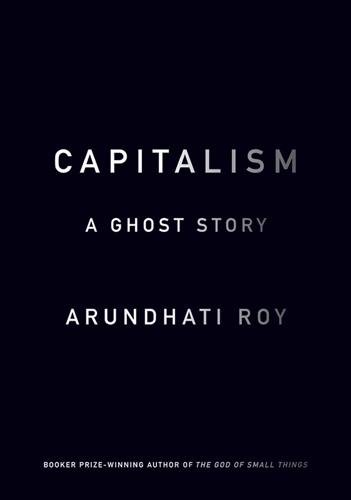
Capitalism: A Ghost Story
by
Arundhati Roy
Published 5 May 2014
From their ranks have come good scholars and academics but also the prime ministers, finance ministers, economists, corporate lawyers, bankers, and bureaucrats who helped to open up the economies of their countries to global corporations. Scholars of the foundations-friendly version of economics and political science were rewarded with fellowships, research funds, grants, endowments, and jobs. Those with foundation-unfriendly views found themselves unfunded, marginalized, and ghettoized, their courses discontinued. Gradually, one particular imagination—a brittle, superficial pretense of tolerance and multiculturalism (that morphs into racism, rabid nationalism, ethnic chauvinism, or warmongering Islamophobia at a moment’s notice) under the roof of a single overarching, very unplural economic ideology—began to dominate the discourse.

QI: The Second Book of General Ignorance
by
Lloyd, John
and
Mitchinson, John
Published 7 Oct 2010
This explains the complex pattern of Romani dialects that are found all across Europe. For most of the last thousand years, the ability of the Romani to move and adapt has only been matched by the persecution they have suffered at the hands of the sedentary populations they encountered. Forced into slavery in Eastern Europe, ghettoised in Spain, marked out by head shaving and ear removal in France and England, they have been discriminated against legally and socially in every state they have travelled through. Their painful history culminated in the Nazi regime’s attempt at genocide, known as the Porjamos (‘the devouring’ in Romani).
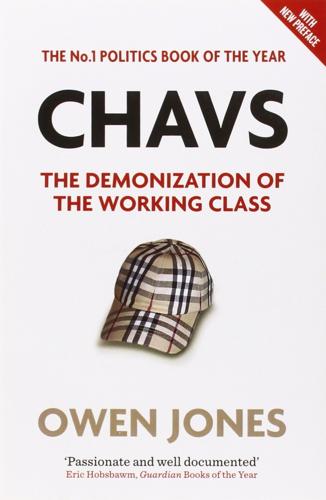
Chavs: The Demonization of the Working Class
by
Owen Jones
Published 14 Jul 2011
The idea of a 'normal' middle-class majority versus a problematic underclass was ubiquitous in post-riot commentary. According to Conservative Work and Pensions Secretary lain Duncan-Smith, 'Too many people have remained unaware of the true nature of life on some of our estates. This was because we had ghettoised many of these problems, keeping them out of sight of the middle-class majority.' In the febrile atmosphere that followed the riots, the government proposed that rioters living in council homes should be evicted, along with their families: in other words, collective punishment. It 'should be possible to evict them and keep them evicted', Cameron told MPs, and local councils-such as Nottingham, Salford and Westminsterannounced their intention to do precisely that.

The Trouble With Brunch: Work, Class and the Pursuit of Leisure
by
Shawn Micallef
Published 10 Jun 2014
How many times have we seen politicians, looking for instant connections to a particular ethnic community, use that community’s restaurants or cultural events as a convenient backdrop? (The cheeky name of the Toronto-based web magazine Ethnic Aisle, which wittily explores ethnicity and race throughout the city and country, alludes to a related ghettoization in grocery stores.) Ternikar grew up in Tampa, Florida, a mid-sized city a little bigger than Windsor, though lacking its industrial base. When she left for graduate school in Chicago, which had and continues to have an extensive brunch scene, she noticed the same difference I did between brunch back home and brunch in her new city.
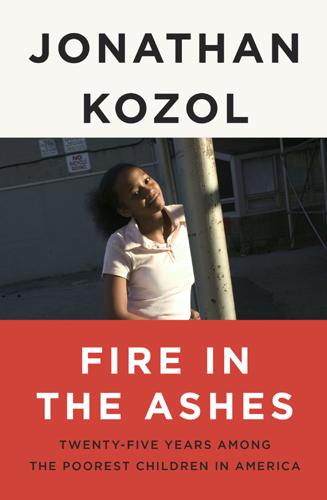
Fire in the Ashes: Twenty-Five Years Among the Poorest Children in America
by
Jonathan Kozol
Published 27 Aug 2012
There is an intimidating rhetoric of cultural defensiveness in many inner-city neighborhoods like those of the South Bronx, which sometimes has the power to inhibit any actions that might tend to break down racial borders and to stigmatize the people who propose them as “invasive” or “paternalistic.” There is a kind of mantra that one often hears from local power brokers in neighborhoods like these that the way to “fix” a ghettoized community is, first of all, never to describe it in such terms and, second, to remain there and do everything you can to improve it and promote its reputation. Those who choose to leave are seen as vaguely traitorous, and those who help them leave are often seen as traitorous as well. Sometimes ideology and rhetoric like this can introduce an element of complicated and neurotic inhibition into issues that should be decided by the people they will actually affect.
…
Unhealthy and self-destructive inclinations are not the “special illnesses” of young men and women who grow up in inner-city neighborhoods. I recall, from my father’s sixty years of practicing psychiatry, that he treated many affluent young people who seemed “hell-bent,” as he put it, “on finding any way they can to ruin their own lives,” and some of them attempted suicide repeatedly. But, for the children of a ghettoized community, the pre-existing context created by the social order cannot be lightly written off by cheap and facile language about “parental failings” or by the rhetoric of “personal responsibility,” which is the last resort of scoundrels in the civic and political arena who will, it seems, go to any length to exculpate America for its sins against our poorest people.
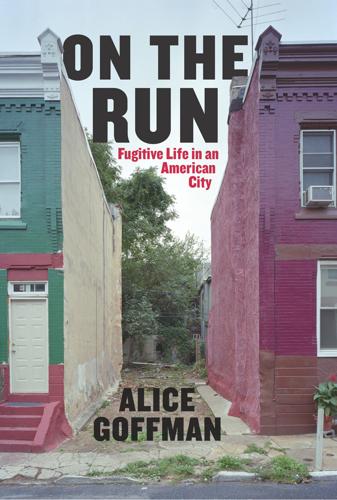
On the Run: Fugitive Life in an American City
by
Alice Goffman
Published 30 Apr 2014
Under the second Bush administration, the near unanimous endorsement of tough-on-crime policies by police and civic leaders accompanied the mushrooming of federal and state police agencies, special units, and bureaus.1 These policies increased the sentences for violent offenses, but they also increased the sentences for prostitution, vagrancy, gambling, and drug possession.2 The tough-on-crime era ushered in a profound change in how the United States manages ghettoized areas of its cities. For most of the twentieth century, the police ignored poor and segregated Black neighborhoods such as 6th Street. Between the 1930s and the 1980s, an era which saw the Great Migration, restrictive racial housing covenants, the Civil Rights Movement, growing unemployment, the erosion of social services, an expanding drug trade, and the departure of much of the Black middle class from the poor and segregated areas of major cities,3 reports from firsthand observers paint the police in segregated Black neighborhoods as uninterested, absent, and corrupt.4 This began to change in the 1960s, when riots in major cities and a surge in violence and drug use spurred national concern about crime, particularly in urban areas.
…
As officers raid women’s houses, threaten to arrest them or get them evicted, and take their children away, they must decide between their own safety and the freedom of the men they hold dear. Women’s pledges to protect the men in their lives dissolve under sustained police pressure, and some find they become the unwilling accomplices of the authorities. This descent from trusted partner to snitch or abandoner causes considerable personal anguish as well as public humiliation. In ghettoized communities there has long been distrust between men and women, and also between people living respectably and those living on the edge. The divide between members of respectable society and those oriented toward the fast life or criminal activity has long been noted. But generosity and trust, and bonds of family and friendship, also have endured through great duress.
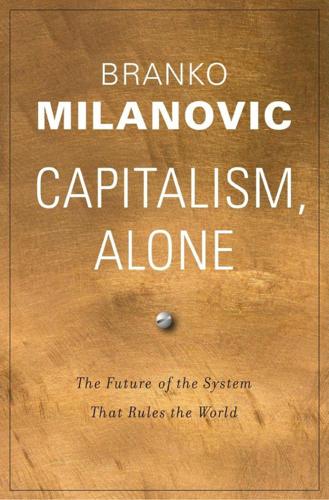
Capitalism, Alone: The Future of the System That Rules the World
by
Branko Milanovic
Published 23 Sep 2019
The most serious is probably the creation of an underclass that, even if not always composed of the same individuals (in the case of circular migration), would exist without ever being absorbed into the native community. It is possible to think that this would lead to the development of local ghettoes, high crime, and a general feeling of alienation from the native population (and vice versa). The problem of ghettoization may be less severe than it seems at first sight, as more skilled and well-paid migrants would mix more easily with native populations, but it is unlikely that the stigma and the problems of exclusion would ever be entirely eliminated. It would also require robust and possibly violent enforcement of exits when the time was up, and big changes in countries that do not have national ID cards.
…
See also Rich; Upper class Ellul, Jacques, 208–209 Employee stock ownership plans (ESOPs), to deconcentrate capital ownership, 48 The End of History and the Last Man (Fukuyama), 70 Engels, Friedrich, 1, 2, 3, 114, 224 Entrepreneurship, 25 Entry costs, rich and, 33–34 Equilibrium corruption, 121 Escaping Poverty (Vries), 115 Ethical imperialism, 126 Ethical vs. legal, 182 Ethics of ruling class, 66 Europe, performance of socialist vs. capitalist economies in, 84–85 Export pessimism, 149–150 Extractive institutions, 73 Fallacy: of the lump of labor doctrine, 198–199; of lump of raw materials and energy, 200–201; that human needs are limited, 199 Family, decreased usefulness of, 187–190 Fascism, explaining rise of, 70–72 Feldstein, Martin, 33 Ferguson, Niall, 72 Financial assets, rich and rate of return on, 32–33 Financial centers, corruption and global, 169–170 Financial deregulation, 183 Financial settlements, amorality and, 183–184 Finland, universal basic income in, 202 First Congress of the Peoples of the East, 223 Fischer, Fritz, 72 Fisher, Irving, 48 Fixed investment in China, 89–90 France: inherited wealth in, 62; minority support for globalization in, 9; share of capital as percent of national income in, 15 Frank, André Gunder, 148 Fraser, Nancy, 195 Freeman, Richard, 144, 198 Freund, Caroline, 50, 161–163 Fu, Zhe, 102 Fukuyama, Francis, 68, 70, 115, 120 Functional distribution of income, 233 Funding of political parties and campaigns, control of political process by rich and, 57–58 Future, inability to visualize, 197–201 GDP per capita: for China and India, 8, 211, 212; in countries with political capitalism, 97; decline in global inequality and, 213; growth rate in China, Vietnam, and United States, 86; household net wealth and, 27, 30, 31; in socialist vs. capitalist economies in Europe in 1950, 83–84; universal basic income and, 203 Gender, ruling class and, 66 Geopolitical changes, global inequality and, 211–214 Germany: cracking down on tax evasion in, 173; inequality in income from capital and labor in, 26–27, 29; limits of tax-and-transfer redistribution in, 44–45; migration and, 137, 242n47; share of global GDP, 9, 10; subcitizenship in, 136 Gernet, Jacques, 105–106, 115 Ghettoization, of migrants, 146–147 Gig economy, 190, 192, 194 Gilens, Martin, 56 Gini coefficients, 6, 27, 231, 241–242n40 Gini points, 6, 7, 239n22, 240n30 Gintis, Herbert, 209–211 Giving Pledge, 242n44 Global attractiveness of political capitalism, 112–113; Chinese “export” of political capitalism and, 118–128 Global capitalism, future of, 176–218; amorality of hypercommercialized capitalism, 176–187; atomization and commodification, 187–197; fear of technological progress and, 197–205; global inequality and geopolitical changes, 211–214; leading toward people’s capitalism and egalitarian capitalism, 215–218; political capitalism vs. liberal capitalism, 207–211; war and peace, 205–207 Global capitalism, globalization and, 153–155 Global GDP: China’s share of, 9, 10; Germany’s share of, 9, 10; India’s share of, 9, 10; United States’ share of, 9, 10 Global inequality, 6–9; decline in, 257n36; geopolitical changes and, 211–214; history of income inequality, 6–9; measurement of, 231–233 Global Inequality (Milanovic), 102 Globalization: capitalism and, 3; eras of, 150–155; facilitating worldwide corruption, 107; inequality in liberal meritocratic capitalism and, 22; malaise in the West about, 9–10; scenarios for evolution of, 209–211; support for in Asia, 9; tax havens and, 44; welfare state and, 50–55, 155–159; welfare state in era of, 50–55; worldwide corruption and, 159–175.
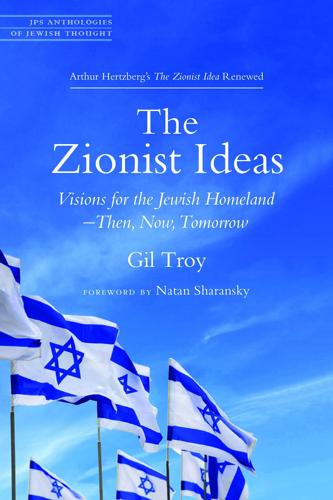
The Zionist Ideas: Visions for the Jewish Homeland—Then, Now, Tomorrow
by
Gil Troy
Published 14 Apr 2018
Yet, “Jewish normalcy” would also help Jews cultivate their enlightened and traditional selves, saving the world—and perhaps even saving Judaism. Labor Zionism: The utopian yet pragmatic Zionism of the kibbutz and the moshav championed rebuilding the Jewish self by working the land. Thinkers such as A. D. Gordon and Berl Katznelson grounded the intellectual, urbanized, ghettoized European Jew in the challenging practicalities of agriculture, while injecting dollops of Marxism and universalism. Although passionately secular, Labor Zionism fostered an enduring love for Eretz Yisra’el, the Land of Israel. Kibbutznikim became Bible-quoting amateur archaeologists. At the same time, the socialists among these Laborites harnessed the prophetic tradition, the messianic impulse, fostering social justice, envisioning the New Jews as a socialist vanguard.
…
By leading the Mizrachi movement in the United States and Israel, he helped synthesize Zionism and Orthodoxy. While attending his first Zionist Congress, Berlin spearheaded the Religious Zionist opposition to Herzl’s Uganda plan. Eventually coining the Mizrachi slogan “The land of people for the people of Israel according to the Torah of Israel,” Berlin envisioned a truly Jewish state that did not ghettoize religion. Instead, the “spirit of Torah” would resonate “in the thoroughfare, on the street, upon the masses and within the state.” After a decade of leading Mizrachi in the United States—launching over one hundred chapters there—Berlin immigrated to Palestine in 1926. Now heading international Mizrachi, he opposed partitioning Palestine, established the Religious Zionist newspaper HaTzofeh, and appeared before the U.S.
…
Something radical will happen to Judaism when we are challenged to have our economic and social order mirror the Sabbath’s celebration of the world as a creation and of human beings as creatures and not absolute masters over nature or other human beings. . . . The rebirth of Israel marks the repudiation of the hal’akhic ghetto as the means for guarding Jewish survival in history. Israel not only argues against the ghettoization of Judaism, but is also a rejection of the mistaken universalism that characterized the assimilationist tendencies that affected many Jews as a result of the breakdown of the ghetto. The birth of the third Jewish commonwealth teaches all of Jewry that being rooted in a particular history and tradition need not be antithetical to involvement and concern with the larger issues affecting the human world. . . .

Palo Alto: A History of California, Capitalism, and the World
by
Malcolm Harris
Published 14 Feb 2023
Vincent Bevins, The Jakarta Method: Washington’s Anticommunist Crusade and the Mass Murder Program That Shaped Our World (Public Affairs, 2021), 243. Section III 1945–1975 “Strike Against the Stanford Empire” (1970) April Third Movement archive Chapter 3.1 Space Settlers Missile Economics—Real Estate—Ghettoization of East Palo Alto—Paul Baran and the Red Scare—The Cold War University Thanks to the militant anti-Roosevelt sentiment in the reigning Hoover cabal, Stanford—and by extension, Palo Alto—remained rural into the 1940s. Eschewing the race for big government war contracts, the school bided its time.
…
But 2 percent of the first 150 families were black, which meant the feds wouldn’t insure building loans, which meant banks didn’t issue them.25 On policy, Bank of America and others didn’t make construction loans the FHA refused to back, even if it was a very good investment, like a 260-acre subdivision next to Stanford in 1948. The association gave up and sold the land to a developer that agreed to the FHA’s conditions: whites only. The Ladera subdivision is still there; as I write, there have been 26 sales over the last 12 months, averaging between $3 million and $4 million. Ghettoization, or blockbusting, was a parallel process, another one designed by real estate interests in association with the government, and again Palo Alto was exemplary. Into the 1950s, the new rules made it hard for nonwhites to find housing, even just to meet labor demand. (Recall Chinese-American HP recruit Art Fong’s fruitless search for a Palo Alto rental when he returned from the war.)
…
After the Freedom Summer, Palo Alto’s civil rights organizations followed the national groups into a Black Power orientation, and they relocated from Stanford–Palo Alto to East Palo Alto. This shift was concurrent with a change in the leadership composition, from elite college students and respected community members to junior college students and ghettoized teenagers. The era of silent marches and church leadership was over; from a purely descriptive perspective, the movement was looking closer to what RAM theorized than the left wing of the Roosevelt coalition that led the South Bay organizations. The Marxist anticolonialists may have seemed all talk to Bobby and Huey, but they played an important role preparing the ground.
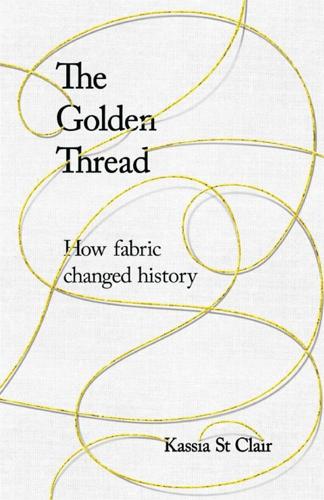
The Golden Thread: How Fabric Changed History
by
Kassia St Clair
Published 3 Oct 2018
When I studied eighteenth-century dress at university, I was constantly confronted with the stubborn belief that clothing was frivolous and unworthy of notice, despite its evident importance to the society under discussion. When I went on to write about contemporary design and fashion I encountered similar snobbery. Examination of fabrics is often ghettoised. Even when it is the principal focus of mainstream attention, it is usually the appearance and desirability of the end product being discussed, rather than the constituent raw materials and the people who fashion them. This book invites you to take a closer look at the fabrics that you surround and clothe yourself with each day.
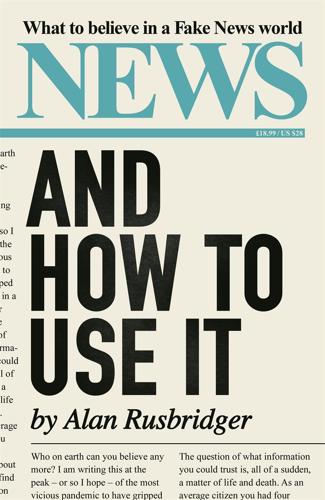
News and How to Use It: What to Believe in a Fake News World
by
Alan Rusbridger
Published 26 Nov 2020
It was no longer just about health: it was about business, transport, jobs, security, the economy, immigration, communications, defence, food, banking, sport. And it was too late to stop it. In four months we had a compressed version of how climate change has been playing out in the media over four decades. Ignore; deny; underplay; ghetto-ise; marginalise; question; disparage; balance; shrug; pay attention; pivot; reassess; jump. The greatest long-term crisis of our time is, naturally, the greatest challenge for the news. How can it be reported accurately? What attitude should a newsroom take? What proportion of the news should be dedicated to it?
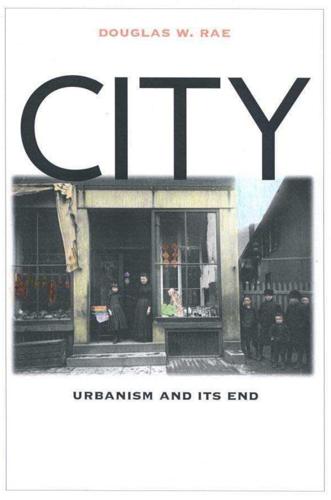
City: Urbanism and Its End
by
Douglas W. Rae
Published 15 Jan 2003
Nor are these small movements: a fivefold decline in wage flow coincides with a fivefold increase in the minority percentage of the city’s population. Arwildie Howard (her married name) is now in her early sixties and living with her daughter in the Atlanta suburb of Decatur. Having spent half a century in New Haven—living mostly in the increasingly ghettoized Dixwell area, working mostly in dead-end jobs while caring for her family (which later included several grandchildren), Ardie says she “just got tired.” She had arrived very near the crest of New Haven’s population wave in 1943 but well after the most vibrant years of economic expansion, and just before the era of population decline.
…
As Douglas Massey and Nancy Denton write, “For our purposes, a ghetto is a set of neighborhoods that are exclusively inhabited by members of one group, within which virtually all members of that group live. By this definition, no ethnic or racial group in the history of the United States, except one, has ever experienced ghettoization, even briefly. For urban blacks, the ghetto has been the paradigmatic residential configuration for at least eighty years.”51 The intense marginalization of black ghettos is an inescapable element in the end-of-urbanism story. It is a symbolic fact of great significance, causing some suburban drivers to lock their car doors while in or even near such dreaded places.
…
See religious congregations Church Street project, 323 Church Street South, 383 Ciaburri, Joseph, 467 cities capital investment in, 41–42, 54–56, 66 citizens of, 113–15 decentralization of, 16 population patterns in, 12, 63–64, 70 – 71 Barton, Bob, 179–80 Basset, George, 164 Batelli, Enrico, 76 Bean, Ed, 78 Beaver Hills, 268 Bechel Bros., 85 Beecher, Wheeler, 187 Beecher & Sons, 109 Bello, Ralph (Rocky), 308–9, 418 Benson, Lorin, 4 Berg, Christian J., 4 Bigelow Company, 109 Billiau, Oscar G., 4 Black Panther Party, 386–88 blacks displacement of by urban renewal, 340 –41 exclusion of from New Haven politics, 355 –57 ghettoization of, 280 –81 in New Haven, 255–60, 405, 414 in public housing, 279–80, 341 Blake, Henry T., 135 B’nai Jacob, 381 Boardman Trade, 170 Bonefacio, Bea, 251 Booth Prep, 170 Boyd, Anne, 385 Bradley, Lewis, 230 Branford, Conn., 48–49, 50, 64, 375, 403, 443, 473 Braudel, Fernand, 29, 43, 434, 441 Breuer, Marcel, 332 Brewer, C.

Letters to My Palestinian Neighbor
by
Yossi Klein Halevi
Published 14 May 2018
But in our long and improbable history, nothing can quite compare to the resurrection Jews managed in the twentieth century. It’s as if all that came before was mere prelude, practice for the moment when Jews had to choose between continuity and extinction. My father survived the war in a hole in the forest. When the Jews of his town were ghettoized, as the final stage before deportation to Auschwitz, he escaped with two friends. A forest keeper, who’d once worked for my grandfather, an owner of vineyards, occasionally brought food to the three young men. In 1945, when the war ended, my father returned home and found a Jewish wasteland. Together with the few young Jews who began trickling back from the death camps, he spent those first weeks of freedom drinking.
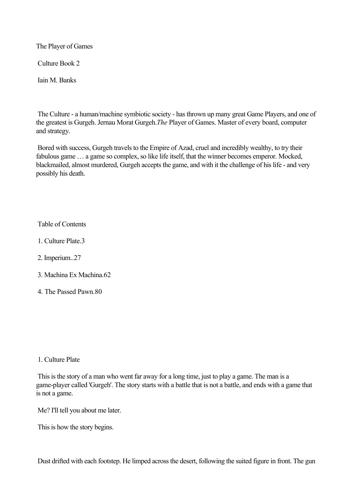
The Player of Games
by
Iain M. Banks
Published 14 Jan 2011
The Hole was a set of vast artificial caverns burrowed out of the chalk centuries ago to store natural gas in; the gas had long since run out, the city ran on other forms of energy, and the set of huge, linked caves had been colonised, first by Groasnachek's poor, then (by a slow process of osmosis and displacement, as though - gas or human - nothing ever really changed) by its criminals and outlaws, and finally, though not completely, by its effectively ghettoised aliens and their supporting cast of locals. Gurgeh and Za's car drove into what had once been a massive above-ground gas-storage cylinder; it had become the housing for a pair of spiralling ramps taking cars and other vehicles down into and up out of the Hole. In the centre of the still mostly empty, ringingly echoing cylinder, a cluster of variously sized lifts slid up and down inside ramshackle frameworks of girders, tubing and beams.

Against Technoableism: Rethinking Who Needs Improvement
by
Ashley Shew
Published 18 Sep 2023
Indeed, “Nazi Germany [was] IBM’s most important customer outside the U.S.,” Black writes: IBM and the Nazis jointly designed, and IBM exclusively produced, technological solutions that enabled Hitler to accelerate and in many ways automate key aspects of his persecution of Jews, homosexuals, Jehovah’s Witnesses, and others the Nazis considered enemies. Custom-designed, IBM-produced punch cards, sorted by IBM machines leased to the Nazis, helped organize and manage the initial identification and social expulsion of Jews and others, the confiscation of their property, their ghettoization, their deportation, and, ultimately, even their extermination. Among the items counted and cited by IBM data was information about ages [at which people had certain] viruses, racial characteristics, disease, and disabilities (such as lupus, syphilis, diabetes, influenza); IBM engineers and Nazi welfare experts used Hollerith Punch Cards to tabulate and sort this information.
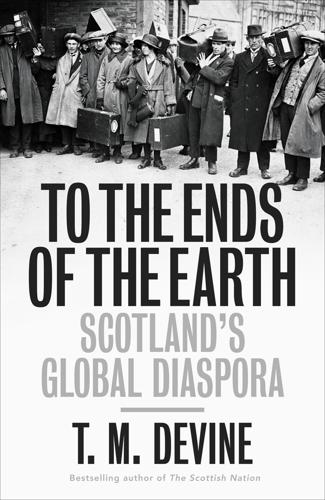
To the Ends of the Earth: Scotland's Global Diaspora, 1750-2010
by
T M Devine
Published 25 Aug 2011
I also believe that it is vital, whenever possible, to situate the Scottish experience in a comparative and international context in order to at least reduce some of the dangers of parochialism, introspection and exceptionalism. In addition, there seems to me to be a pressing need for Scottish historians to relate their specific discussions to the wider historiographical issues which currently attract the interest of international scholarship – to avoid so doing is to threaten the ghettoization of a subject which deserves to be part of such a wider discourse. Equally, the emigration saga of the Scots contains much which can enlighten historians of empire, settlement, identity, globalization, European expansion, relations with native peoples and many other topics. In my view another clear principle, obvious because it should be at the heart of all history writing, is to react as honestly as one can to the complexities and ambiguities of the evidence of the past when coming to interpretation and judgement.
…
The Catholic Irish were unambiguously alien, ‘the other’, not only because of their faith but as poor and unskilled and, especially during the famine years and afterwards, arriving destitute in such massive numbers that they inevitably caused immense social problems in the American cities where they first settled. The Scots, on the whole, like the English and Welsh, shared the Protestant traditions of the American majority, were much fewer in number and tended not to concentrate in semi-ghettoized urban areas. Five million Irish entered the United States between 1820 and 1930. The Scots numbered one-seventh of that, or 726,000 immigrants over the same period. Indeed, the peak percentage of the US population of Scottish birth was reached as early as 1791. Thereafter, it was a mere 3.1 per cent in 1850, 2.4 per cent in 1900 and 1.9 per cent in 1920.

Fool Me Twice: Fighting the Assault on Science in America
by
Shawn Lawrence Otto
Published 10 Oct 2011
This segregation may have worked well in the large, well-staffed newsrooms of the mid-twentieth century, when multiple reporters could cover the same story from different angles, but the policy has since become a problem. Science is now central to most of our major policy challenges. Segregating it has, in effect, taken a large portion of the political discussion off the table. No other major human endeavor is so ghettoized. The religion and ethics beat has long since crossed over into the politics pages, as has the business and economics beat. And of course military and foreign policy have been there all along. This segregation is also unique among Western democracies. In Europe it was the journalists themselves, joined together as the European Union of Science Journalists’ Associations under the leadership of Hanns-J.
…
They offered economic plans even though they had little knowledge of economics. They talked about morality and religion even though they were not pastors or priests. But they refused to debate on science—the issue that is having some of the most profound effects on Americans’ lives. THE GREAT DUMBING DOWN Partly, this ghettoization is due to economics. Facing increased competition from cable TV and a free model for news on the Internet, American news media have been trimming costs. Among the first things to go were investigative and science reporters. A Joan Shorenstein Center on the Press, Politics and Public Policy report from 2005—early in the science news crisis—showed that from 1989 to 2005, the number of major newspapers with weekly science sections fell from ninety-five to thirty-four.
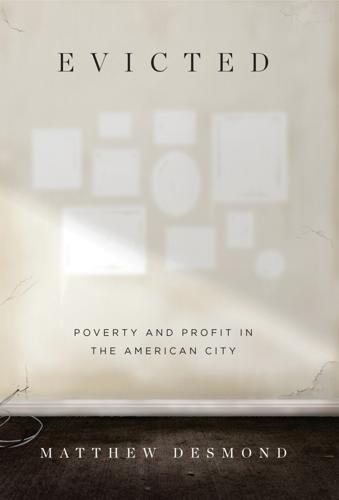
Evicted: Poverty and Profit in the American City
by
Matthew Desmond
Published 1 Mar 2016
On social programs designed to combat “social isolation,” see US Department of Housing and Urban Development, Moving to Opportunity for Fair Housing Demonstration Program: Final Impacts Evaluation (Washington, DC: Office of Policy Development and Research, 2011); US Department of Housing and Urban Development, Mixed-Income Housing and the HOME Program (Washington, DC: Office of Policy Development and Research, 2003). For canonical theories about poverty and community life holding that spatial isolation (residential ghettoization) brings about social isolation (network ghettoization), see William Julius Wilson, The Truly Disadvantaged: The Inner City, the Underclass, and Public Policy, 2nd ed. (Chicago: University of Chicago Press, 2012 [1987]); Douglas Massey and Nancy Denton, American Apartheid: Segregation and the Making of the Underclass (Cambridge: Harvard University Press, 1993).
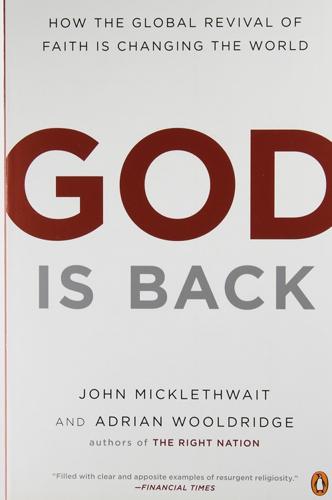
God Is Back: How the Global Revival of Faith Is Changing the World
by
John Micklethwait
and
Adrian Wooldridge
Published 31 Mar 2009
Sophia, a middle-class lawyer who was also forced to retreat to “little Pakistan,” calls Togadia “a fanatic,” but she thinks most Muslims have given in: “They are too scared and poor to get anything.” Although Modi’s reputation has suffered—he was refused a visa to visit America in 2005—he was reelected comfortably in 2007. Ghettoization has radicalized the women of Sibbaka Bab. They go to the mosque more often and talk approvingly of Osama bin Laden. The otherwise mild Abeda is proud that her son is called Saddam (like the Iraqi leader “who died for Islam”) and she wishes a horrible death on Modi and his friends. Togadia has survived several assassination attempts.
…
Muslim immigrants are strengthening their commitment to their faith—or rediscovering a commitment that had begun to fade—and reasserting their unique cultural identity. Many Islamic communities are trying to build their own parallel universe of institutions, much as conservative Christians did in the United States. Ghettoization is part of this: from Bradford to Barcelona, Muslims are segregated. There is also an element of collective self-help, understandable when the jobless rate is 24 percent among Turks in Germany and 39 percent among North Africans in France.19 But such self-help also has the effect of creating an all-embracing religious cocoon that separates its inmates from wider society and reinforces a sense of cultural exclusiveness.
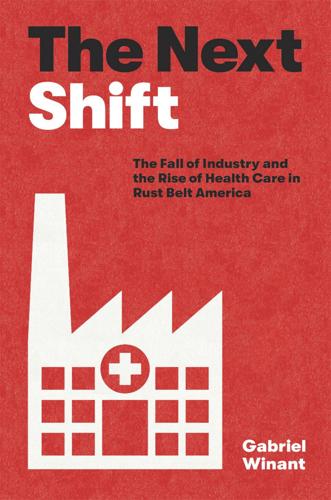
The Next Shift: The Fall of Industry and the Rise of Health Care in Rust Belt America
by
Gabriel Winant
Published 23 Mar 2021
Ten years later, the population was 1,425, and the African American population was up to 20 percent. By 1970, the population had fallen by a few hundred more, and the African American population had risen to 31.2 percent.37 The areas of Hazelwood and Homestead examined here indicate the classic phenomena of white flight and ghettoization. But these local histories also show something else: a slow shift in the demographic balance toward a gradually rising Black population alongside a white ethnic population that, in large measure, stayed put into the 1970s. These were working-class communities of common insecurity, unevenly racialized.38 No less than in cases of racial succession in other cities, the Pittsburgh pattern of slow change in communities segregated on a fine scale led to white hostility and violence against Black neighbors.
…
Pennsylvania Hospital, 150 Flaherty, Pete, 132, 174 Florida, 6, 88, 195 Foerster, Thomas, 173, 174 food stamps, 18, 119 foremen, 25, 32, 42–45, 53, 55, 62, 102, 183 foremen, “general” vs “turn,” 44 Fraternal Order of Eagles, 44 Freeman, Elizabeth, 50 Freedom House Ambulance Service, 165 Frick Hospital (Henry Clay Frick Community Hospital), 219, 221, 227 fringe benefits, 36 Gaydos, Joseph, 149, 173 gender: and African American women’s organizing, 128, 155; and community labor, 116–117; and deindustrialization, 17, 180, 184, 216; and division of labor, 35; and household, 68, 74–75, 95; and housework, 71, 91; and 1959 steel strike, 58–59; and postwar welfare state, 11, 15; and reproductive labor, 3, 240, 252, 257; and work in health care sector, 136, 213–214, 220, 239, 252 general strike of 1946, 9, 35 generational warfare, 23 Gephardt, Richard, 225 ghettos, 101, 115, 118 ghettoization, 112 Glen-Hazel housing project, 112–113 Gilded Age, the, 18 Godoff, Elliott, 153 Goree, Henrietta, 135 Gray Panthers,176 Great Depression, 9 great exception, the, 27. See also Cowie, Jefferson Great Society, the, 16, 147, 163 Greenlee, Dr. Charles, 126, 128, 153, 164–165 Haden, Bouie, 126, 164 Haraway, Donna, 241 Harff, Henry, 53 Harris, Edward, 52 Havrilla, Helen, 71, 76, 77 Hazelwood (neighborhood), 108–114, 125, 130, 135 Head Start, 199 Health Care Financing Administration, 226 health insurance: and collective bargaining, 136–137, 205; and failure of national health insurance proposals, 11, 139, 247; and postwar welfare state, 12, 18, 140, 150, 224.
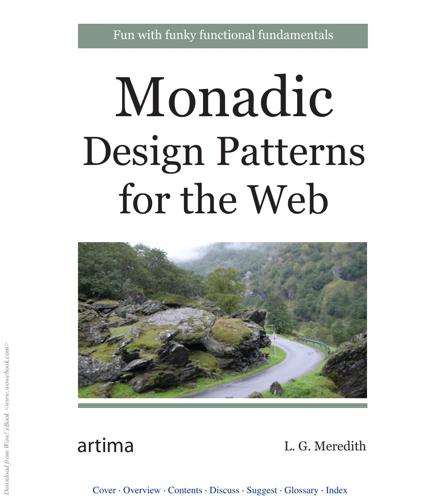
Monadic Design Patterns for the Web
by
L.G. Meredith
From this combo, the modern means of specifying a language was born. While the roots of specifying a language this way can be found in linguistics, computing, and mathematics – which should have made this technology approachable from several fields – quite surprisingly the approach has remained more or less ghetto-ized as a kind of folklore in small pockets of theoretical computer science. It is not more widely utilized by the communities who could benefit from the basic complexity management properties these techniques enjoy. On yet another thread, the category theory community was discovering similar ideas, but finding powerful means to package and present them.
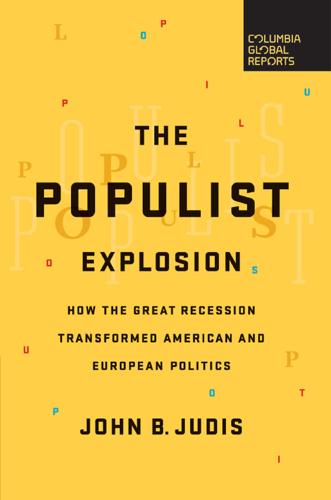
The Populist Explosion: How the Great Recession Transformed American and European Politics
by
John B. Judis
Published 11 Sep 2016
Social democracy does not necessarily require ethnic homogeneity. But when ethnic heterogeneity takes the form of an immigrant underclass, then it can make citizens less willing to pay taxes to support social benefits. By the same token, as French sociologist Olivier Roy has warned, the existence in countries like France of a ghettoized underclass can also be a seedbed for political extremism and terrorism. Rightwing populists wrongly look at Islam the religion as the cause of extremism, and advocate the public suppression of Islam, but they at least acknowledge there is a problem with these communities that must be addressed.

Goliath: Life and Loathing in Greater Israel
by
Max Blumenthal
Published 27 Nov 2012
Toward the Gaza Strip, where Netanyahu had vowed to “crush the rule of Hamas,” the Israeli military would “mow the lawn,” an expression used to describe periodic assaults on the enclave’s civilian and military infrastructure, hoping to whittle away at Hamas’s deterrence capacity while battering the besieged population into submission. In the Negev Desert and the Galilee, the Israeli government ramped up its strategy of “Judaization,” planting new, exclusively Jewish communities around, and sometimes in place of, ghettoized Arab towns. Judaization also formed the basis of Israel’s approach to the mixed cities in the interior, creating unbearable pressure on Arab city dwellers to move. On Netanyahu’s watch, evidence of a clear and comprehensive plan to control all space—and the lives of all people—between the river and the sea was clearer than ever.
…
Indeed, the wall was intended primarily as a means to consolidate Israel’s Jewish demographic majority without risking the removal of the major settlement blocs that encircled Palestinian East Jerusalem, and severed it from the West Bank. Rather than delivering a viable country to the Palestinians, it became the backbone of a policy of forced ghettoization that would guarantee a one-way peace while limiting the Palestinian Authority to a realm of disjointed Bantustans. The process of drafting a blueprint for the wall began beneath the media’s radar, under the first government of Benjamin Netanyahu. During the late 1990s, when Ariel Sharon, the so-called “Bulldozer,” served as foreign minister in the government of Netanyahu, he became acquainted with a professor with a long basset hound-like face who claimed he could tell his future.
…
As the British journalist Jonathan Cook reported, the town had even produced a few millionaires, beneficiaries of what had once been a roaring agricultural business and factories providing soda and gas to Palestinians who lived in and around Ramallah. But in the year since my first visit to Ni’lin, Israel had completed the section of the wall the protests had attempted to obstruct, consolidating the first stage in the process of ghettoization. The next phase would come with the tunnels, which would drive Ni’lin’s factories into ruin by blocking access to Highway 446, turning the town into a replica of Qalqilya, which had seen an exodus of thousands of residents since being surrounded on all sides by the wall. And that was the point.
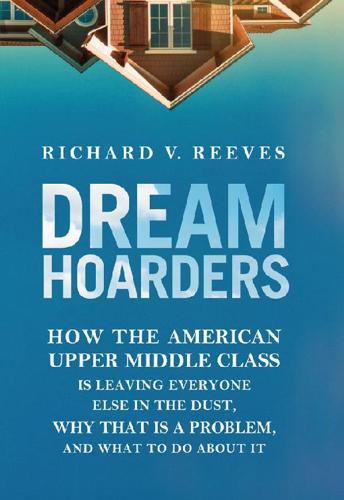
Dream Hoarders: How the American Upper Middle Class Is Leaving Everyone Else in the Dust, Why That Is a Problem, and What to Do About It
by
Richard V. Reeves
Published 22 May 2017
Home ownership remains vivid in the American imagination; hence homeowners’ highly favorable (but deeply regressive) tax status. The physical segregation of the upper middle class noted in chapter 2 is, for the most part, not the result of the free workings of the housing market. This inverse ghettoization is a product of a complex web of local rules and regulations regarding the use of land. The rise of “exclusionary zoning,” designed to protect the home values, schools, and neighborhoods of the affluent, has badly distorted the American property market. As Lee Anne Fennell points out, these rules have become “a central organizing feature in American metropolitan life.”9 Land is scarce by definition.
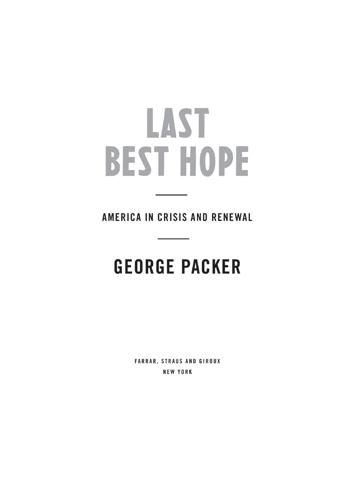
Last Best Hope: America in Crisis and Renewal
by
George Packer
Published 14 Jun 2021
The riots of the mid to late sixties and the threat of backlash made both needs more urgent (Rustin went to the burned-out streets of New York and Los Angeles to urge nonviolence, but now no one listened). He deplored the growing cultural separatism. “I am very much opposed to separatism under any circumstances and I’m also opposed to black studies,” he wrote. He thought that it would ghettoize Black students, depriving them of the education they badly needed for real equality. Black history should be taught at the heart of American history. “In this country, to try to separate the Black experience from the American experience is ridiculous,” Rustin wrote in the same vein as Albert Murray’s Omni-Americans.
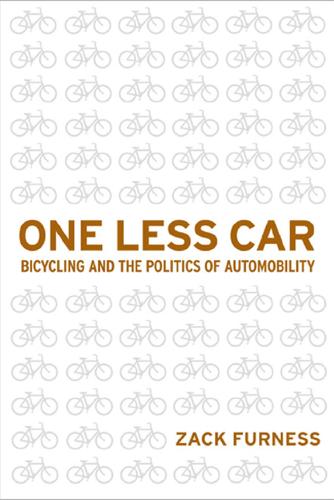
One Less Car: Bicycling and the Politics of Automobility
by
Zack Furness
and
Zachary Mooradian Furness
Published 28 Mar 2010
On the basis of self-interest, the roadway users—cyclists and motorists—should be in one corner and the anti-traffic forces—political bicyclists, residentialists, and environmentalists—in the other. . . . assume, until you know otherwise, that those who have initiated contact with you are political bicyclists, and that real cyclists have seen no useful reason to contact government.124 instead of praising cyclists for taking an active role in the political process or working toward a more egalitarian vision of mobility, Forester and his supporters frame government-funded bicycle facilities as restrictive, choosing to champion equality as a reaganite ethos of every man for himself: “Same roads—Same rights—Same rules.”125 Equality, in this sense of sameness, is conceived not as the rectification of a national problem whereby one form of mobility (auto transportation) dominates public thoroughfares, receives a grossly disproportionate amount of government subsidies, and poses undue physical threats to pedestrians, cyclists, the elderly, children, and people of color. rather, it functions as an ideological and political rationale for voluntary cyclists (those who ride out of choice as opposed to low income) to legitimize their participation in an already unequal matrix of public spaces.126 The idea that the street is somehow a space of equality, or neutrality, that one accesses by simply disciplining and ultimately demonstrating one’s cycling skill is a premise that holds true only if one decontextualizes, if not totally ignores, all the relevant socioeconomic, physical, material, and cultural factors that influence—and in most cases dictate—everyday transportation choices. it virtually mirrors the claims of cyclists in the nineteenth century who, by virtue of their socioeconomic and/or racial status, could easily ignore the cultural restraints on public mobility because they were never subject to them in the first place. not coincidentally, it is a group of mainly white, middle- to upper-class men who now reproduce this same ideology with recourse to similar vulgar psychological explanations. The main difference now is the brazen manner in which vC proponents use racially loaded terms like segregationists (bikeway advocates) and ghettoization (being forced into bike lanes) while they promote a paradigm that explicitly, and openly, condemns what they see as “affirmative action” policies.127 One can peruse the archives of the Chain Guard, an online discussion list for vC advocates, to see just how pointedly the issue of bicycle transportation is framed in such terms.
…
See also Bike messengers Urbanism, 54; and urban driving, 48–49 Urban Mass Transportation act (1964), 52 Urban planning, 53; and capitalist ideology, 54 Urban repair Squad, 96 Urban space, 12; and automobility, 50, 83; and bicyclists, 49; and driving, 88; semiotics of, 92–93; and skateboarding, 83 Urban Underground, 62, 245n75 Urry, John, 6, 87 van Bree, Miriam, 57 van Der Tuin, patrick, 97 van Duyn, roel, 55 vans and punk music, 147–148 vant, andré, 18, 25 vehicular cycling (vT) advocacy, 71–72, 74–76; and use of terms segregationists and ghettoization, 73 vehicularists, 72–73 velocipower, 25 vélomobility, 48, 76 vélorution, 13, 47, 170 viera-Gallo, José antonio, 246n97 vietnam, 217 village Bicycle project (vBp), 187–188, 191, 194 visual resistance, 97 voelcker, Jake, 268n117 voeten, Teun, 242n39 volti, rudi, 16 Wachs, Martin, 100 Wald, 168 Wallace, Christopher, 101–102 Ward, Benjamin, 264n65 War production Board (WpD), 120 Washington area Bicyclist association, 63, 68 Watt, Mike, 147, 272n26 Wehr, Kevin, 127 Westfield Manufacturing Company, 262n47 Wheelman (magazine), 23 White privilege: and public events, 101–102; and public mobility, 103 Whole Earth Catalog, 67–68 Wieler, aaron, 154 Wilcher, aaron, 25, 41 Willard, Carla, 21 Willard, Frances, and corset as rhetorical metaphor, 20 Williams, “Fast” Eddie, 165 Williams, lee, 89 Wilson, Owen, 113 Winner, langdon, 192, 218 Wish image, 44 Wolf, Wilhelm, 38 Woman’s rescue league, 20 WOMBaTS (Women’s Mountain Bike and Tea Society), 185 Women: and bicycling, 19–20, 230n39, 282n34; and bike culture, 185–186; as bike mechanics, 184–185; and gender divide and intimidation factor, 181–183 Women’s national Council of the United States, 20 The Worker-Cyclist (newspaper), 34 Worker’s Cycling Federation: Solidarity (arbeiter-radfahrerbund Solidarität), 33–34, 37 Working Bikes, 191, 200 Working Bikes Cooperative, 175 Worksman Cycles, 168 World Bank, 189, 190 World Bicycle relief, 199 World naked Bike ride, 105 World’s Fair (1939), 50 Xtracycle, 154 yohans, yini, 259n18 You, Me and Dupree (film), 112–113 young, iris Marion, 177 youth Bicycle Education network, 171 yukon, 4 yunus, Muhammad, 199–200 Zaire, 196 Zerzan, John, 205 Zo, Eric, 168

The Rough Guide to Vienna
by
Humphreys, Rob
Far more imposing, though, is the Italianate facade of the Dominikanerkirche, further south along Postgasse; the vast interior is an orgy of early Baroque stucco and frescoes, rebuilt in the 1630s following damage in the first Turkish siege. 65 Dr-Ignaz-Seipel-Platz and Heiligenkreuzerhof THE INNE RE S TADT | East of Rotenturmstrasse 66 One block west of Postgasse along Bäckerstrasse lies Dr-Ignaz-Seipel-Platz, named after the leader of the Christian Socialists, who became the country’s chancellor in 1922. Son of a cab driver, a trained priest, and, ironically, one-time professor of moral theology, Seipel was one of the city’s most vociferous antiSemites, who openly flirted with re-ghettoizing the Jews. Given the eventual fate of Austria’s Jews, this rather attractive little square might have been better left as Universitäts Platz, since its east side is still taken up by the Alte Universität (Old University), founded by Rudolf IV in 1365, and thus the second oldest (after Prague’s) in the German-speaking world.
…
At the same time, the much larger assimilated Jewish population, who were prominent in the arts, the media and the SDAP, became the target of vicious anti-Semitism from the Christian Social and Pan-German parties. The cleric Ignaz Seipel, head of the Christian Socials and among the most vociferous anti-Semites, flirted with the idea of re-ghettoizing the Jews. This sort of rhetoric was a permanent feature of the First Republic, which the SDAP consistently failed to tackle head-on. In the municipal elections of May 1919, the Social Democrats won 54 percent of the vote, and Vienna got its first Socialist mayor, Jakob Reumann. The party held power in the capital for nearly fifteen years, a period which has gone down in history as Rotes Wien or “Red Vienna” (see p.185).
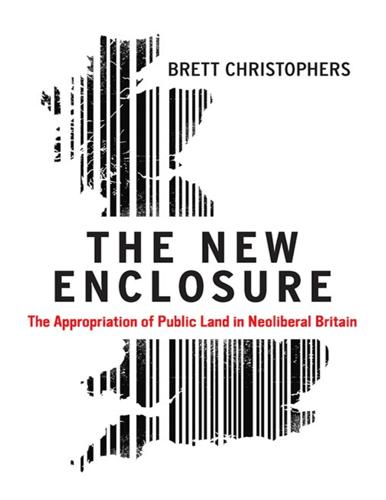
The New Enclosure: The Appropriation of Public Land in Neoliberal Britain
by
Brett Christophers
Published 6 Nov 2018
Identifying London’s Broadgate and Canary Wharf, both of which had previously been public land, as prominent early examples of ‘private ownership of public space under a single landlord’, Minton claimed that these ‘private–public’ places – privately owned, but professing to offer public space – were ‘sterile, uniform places, which inhibit genuine public access and lack the diversity and humanity of traditional street life, while also displacing social problems into neighbouring ghettoised enclaves’.1 To understand why this particular form of socially dislocating market failure occurs, it helps to understand why the private sector would use land for the provision of quasi-public space in the first place. ‘Investors and developers’, the Planning and Housing Committee of the Greater London Authority (GLA) explained in a report on London’s public space, see public space of some sort as ‘integral to the success and value of their sites’.2 But this must be not just any type of public space: the quality of such space is deemed crucial.
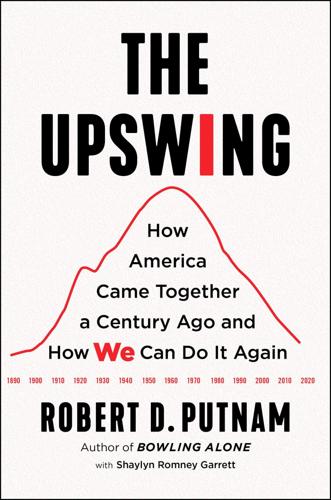
The Upswing: How America Came Together a Century Ago and How We Can Do It Again
by
Robert D. Putnam
Published 12 Oct 2020
African American homeownership was on the rise during this time, as we saw in Figure 6.5. But black families attempting to buy homes in white neighborhoods were met with massive resistance. White residents used a variety of tools to preserve the racial character of their neighborhoods and confine black residents to ghettoized enclaves, including restrictive housing covenants, violence, and such real estate practices as racial steering. When black residents did manage to successfully relocate, block-busting and white flight ensued, causing entire neighborhoods to flip their racial makeup in an incredibly short period of time.
…
According to McAdams and Kloos, by the mid-1960s “the degree of racial polarization in the country had grown to such an extent that for a candidate to openly court the black vote was to invite significant defections among his or her white constituents,” who increasingly saw Great Society programs through a racial lens.132 The Kerner Commission, appointed by President Johnson in July 1967 following riots in Detroit and Newark, reported in February 1968 that the riots were indisputably the result of African Americans’ justified outrage at rampant racism, police brutality, and inescapable poverty. But Johnson rejected the commission’s recommendations of sweeping reforms to end the ghettoization of African Americans and increase federal investments in poverty reduction, suggesting that his fine-tuned political sensitivity had detected a sea change in white attitudes in the seven months after he created the commission.133 Indeed, in 1968, just months after Dr. King was killed, Alabama governor George Wallace (who just three years earlier had presided over Bloody Sunday) ran for president and captured 13.5 percent of the popular vote.
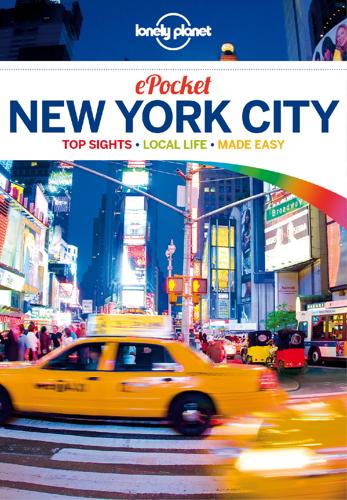
Pocket New York City Travel Guide
by
Lonely Planet
Published 27 Sep 2012
(Click here) Village Vanguard WALTER MCBRIDE/CORBIS © Best LGBT The future has arrived in NYC: men seek out other men using apps with geolocators, drag queens are so ‘out’ that they’re practically ‘in,’ bouncers thumb through guest lists on their iPads and gay marriage is – at long last – legal. It’s time to hop in your time machine and join the fray. Mo Money, No Matter Although New York City has a smattering of neighborhoods that are infamous for their gay hangouts, the city’s LGBT scene is hardly segregated, let alone ghettoized. With one of the largest disposable incomes of any demographic, the gays seem to run the city, from the fashion runways and major music labels to Wall Street downtown. The new marriage laws of 2011 are a further acknowledgement that here in New York it’s totally ‘in’ to be ‘out’. Weekdays are the New Weekend Here in the Big Apple, any night of the week is fair game to paint the town rouge – especially for the gay community, who attack the weekday social scene with gusto.
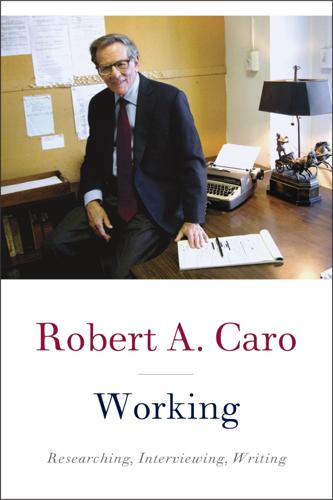
Working
by
Robert A. Caro
Published 8 Apr 2019
And, since the people he evicted were overwhelmingly black, Hispanic, and poor, the most defenseless of the city’s people, and since he refused, despite the policy of the city’s elected officials, to make adequate provision (to make any substantial provision at all, really) for their relocation, the policies he followed created new slums almost as fast as he was eliminating old ones and, tragically, were to be a major factor in solidifying the already existing ghettoization of New York—the dividing up of its residents by color and income. Immense as was Robert Moses’ physical shaping of New York, however, his influence on the city’s history cannot be measured merely by the physical. All told, during the decades of his power he used that power to bend the city’s social policies to his philosophical beliefs, skewing, often despite the wishes of its mayors and other elected officials, the allocation of the city’s resources to the benefit of its middle, upper-middle, and upper classes at the expense of the city’s lower middle class and its poor, and particularly at the expense of the new immigrants.
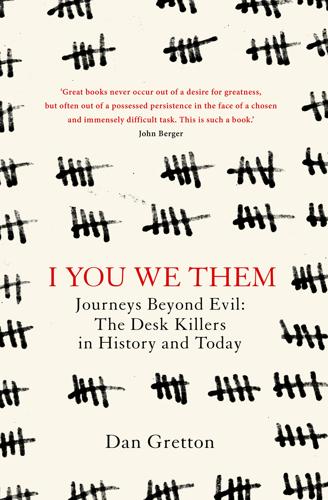
I You We Them
by
Dan Gretton
Then, over several pages, he lists all the institutions of government, Civil Service, business, the military and the judiciary that were necessary to co-ordinate the Holocaust: Reich Chancellery: Co-ordination of laws and decrees Interior Ministry: Definition of the term ‘Jew’; prohibition of mixed marriages; decrees for compulsory names; dismissals from the Civil Service; deprivation of property Churches: Supply of proof of non-Jewish descent Justice Ministry: Elimination of Jewish lawyers; inheritance questions; divorce questions; regulation of names of enterprises Party Boycott Committee: Boycott of Jewish enterprises Party Chancellery: Participation of decisions involving the status of Jews Reich Chamber of Culture: Dismissals of musicians, artists and journalists and barring of writers Education Ministry: Elimination of Jewish students, professors and researchers Propaganda Ministry: Suggestions to the press Economics Ministry: Regulation for the acquisition of Jewish firms Dresdner Bank and Other Banking Concerns: Intermediaries in takeovers of Jewish firms Various Firms in Retailing, Wholesaling, Manufacturing, and Construction: Acquisitions of Jewish firms; dismissals of Jewish employees; utilisation of Jewish forced labour in cities, ghettoes and camps; contracting for measures of destruction such as supply of poison gas Finance Ministry: Discriminatory taxes; blocked funds; confiscation of personal belongings; special budgetary allocations, such as clearing Warsaw Ghetto ruins Foreign Office: Negotiations for deportations of Jews in foreign countries and of foreign jews in the Reich Transport Ministry: Transports to ghettoes and camps; utilisation of forced Jewish labour; acquisitions of Jewish personal property Armed Forces: Logistic support of killing operations in the occupied USSR; direct killings in Serbia and the occupied USSR; ghettoisation in the occupied USSR; discriminatory measures and deportations from France, Belgium, and Greece; regulation of forced Jewish labour in armament plants; employment of forced Jewish labour by army offices; transport questions Municipal Authorities in the Greater German Reich: Movement and housing restrictions Protektorat Administration in Bohemia and Moravia: Anti-Jewish measures patterned on those of the Reich General Government in Occupied Central Poland: Confiscations; ghettoisation; forced labour; starvation measures; preparations for deportations Ministry for Eastern Occupied Territories: Anti-Jewish measures patterned on those of the Reich Reichskommissariat of the Netherlands: Anti-Jewish measures patterned on those of the Reich Führer Chancellery: Staffing of the Belzec, Sobibor and Treblinka death camps Reich Security Main Office: Marking of Jews in the Reich; supervision of the Jewish communities; in the Reich and Protektorat; Einsatzgruppen killings in the occupied USSR; preparations of European-wide deportations Main Office Order Police: Guarding of ghettoes, trains and camps; participation in round-ups and shootings Economic-Administrative Main Office: Administration of Auschwitz and Majdanek (Lublin) Higher SS and Police Leaders in Occupied Poland: Deportations to death camps; administration of the Chelmno (Kulmhof), Belzec, Sobibor, and Treblinka death camps Higher SS and Police Leaders in Occupied USSR: Shootings All of these agencies combined to create the most systematic and industrialised act of mass murder ever carried out; each of these organisations’ contributions were essential to the process; hundreds of thousands of men and women, from Germany and occupied countries, took part in this process.
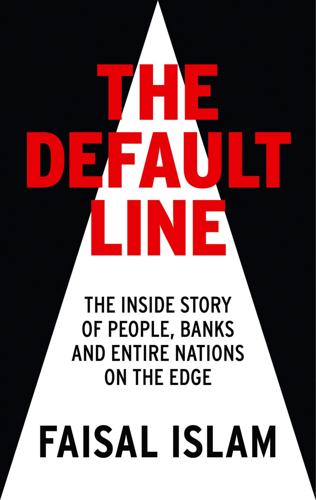
The Default Line: The Inside Story of People, Banks and Entire Nations on the Edge
by
Faisal Islam
Published 28 Aug 2013
Official measures of poverty reached all-time highs, with one in six Germans now beneath the poverty line. More than one in three children in Berlin relied on a Hartz IV payment. The German dream of ‘prosperity for all’ is fractured, even if there are plenty of jobs. Hartz IV recipients were becoming ghettoised. It’s easy to see why southern Europe may not volunteer for a German blueprint that amounts to ‘Get Paid Less’. Hartz himself told me: ‘The reforms needn’t necessarily be accompanied by wage reductions.’ Does he accept that some of the Hartz reforms have led to more poverty, less social mobility, and declining living standards?

Among the Bohemians: Experiments in Living 1900-1939
by
Virginia Nicholson
Published 27 Nov 2003
It must have been delicious out on the downs in the afternoon sun, a thing I have often wanted to do… I imagine you, however, with your bare limbs intertwined with him and all the ecstatic preliminaries of Sucking Sodomy – it sounds like the name of a station… How divine it must have been… What would the parlourmaid have thought? Today we are worlds away from the atmosphere of restriction and taboo which both ghettoised and intensified the sexual leanings of Bohemia’s homosexuals in those days. Secrecy and stealth attended their movements. Public toilets and the ever-available Guards’ barracks were known meeting-places; more aspirant types might attend the meetings of the Fitzrovian ‘Psychological Society’ that doubled as a pick-up joint for homosexual aesthetes.
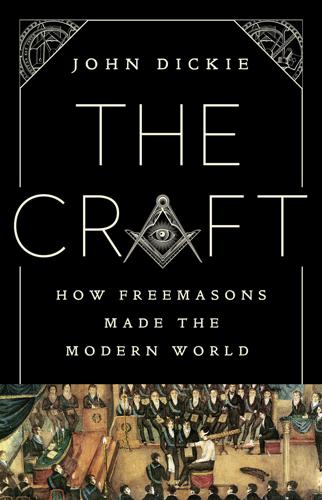
The Craft: How Freemasons Made the Modern World
by
John Dickie
Published 3 Aug 2020
In 1964, 42 per cent of Americans smoked–the statistical maximum. But in January of that year the Surgeon General’s report on the dangers of cigarettes proved to be a watershed in public attitudes. Tobacco was not the ‘magic of the future’ after all. In August 1965, six days of rioting in Watts, Los Angeles, exposed the ghettoisation resulting from racism in housing. Across America, laying down roads to reach all those fine new ranch homes in the suburbs had spurred white flight, leading to ‘chocolate cities and vanilla suburbs’–as funk musician George Clinton would later call them. Try as it might, the New York World’s Fair could not keep the tumult at bay.

Ctrl Alt Delete: Reboot Your Business. Reboot Your Life. Your Future Depends on It.
by
Mitch Joel
Published 20 May 2013
When a business claims to be moving in the direction of becoming a more social business, the brands that often fail are the ones that have a social media department within another department (usually marketing and/or communications); their work involves things like campaigns currently in-market or individual initiatives. This, in essence, is the ghettoization of the social business spirit and will ultimately lead to failure. When it’s implemented horizontally (across all departments), you have a top-down and bottom-up seismic shift that becomes a value-based system by which the corporation is governed. In plain English: Everyone has skin in the game.

But What if We're Wrong? Thinking About the Present as if It Were the Past
by
Chuck Klosterman
Published 6 Jun 2016
If so, a spiritual person might argue this means dreams are preparing us for something quite important; using the same information, a secular person might argue this means dreams are micro-versions of a massive chemical event that happens only at the very end of life. But either way, such a scenario should drastically alter the significance we place on the content of dreams. Right now, we don’t think the content of dreams matters at all. If we end up being wrong about the psychological consequence of dreaming, it will be the result of our willingness to ghettoize an acute cognitive experience simply because it seems too difficult to realistically study. The problem with studying the subject matter of dreams is straightforward: We can map the brain’s electrical activity, but we can’t see other people’s dreams. The only way we can analyze the content of a dream is to ask the dreamer what she remembers.
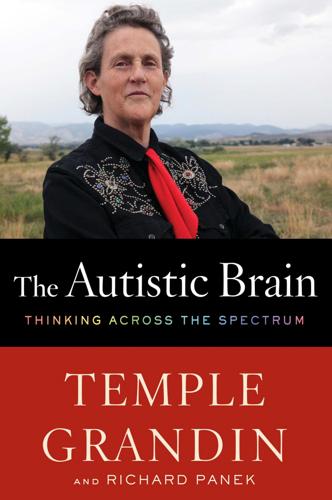
The Autistic Brain: Thinking Across the Spectrum
by
Temple Grandin
and
Richard Panek
Published 15 Feb 2013
I’ve been to their offices; I’ve seen the work force up close. Many of the hits on my home page come from Silicon Valley and other areas with a high concentration of tech industries. A generation ago, a lot of these people would have been seen simply as gifted. Now that there’s a diagnosis, however, they’ll do anything to avoid being ghettoized. Label-locked thinking can affect treatment. For instance, I heard a doctor say about a kid with gastrointestinal issues, “Oh, he has autism. That’s the problem”—and then he didn’t treat the GI problem. That’s absurd. Just because gastrointestinal problems are common in people with autism doesn’t mean that the GI problems are untreatable on their own.

Shadow Work: The Unpaid, Unseen Jobs That Fill Your Day
by
Craig Lambert
Published 30 Apr 2015
They analyzed 316,425 Yelp reviews of Boston restaurants and found that 16 percent were fraudulent, as identified by Yelp’s internal algorithm that flags suspicious posts. Yelp confirmed the study and even raised the ante, announcing that its filtering software in fact flagged about 25 percent of Yelp’s forty-two million reviews as fakes. Yelp doesn’t completely delete such notices but ghettoizes them as “Not Currently Recommended” reviews at the bottom of a business’s page and does not factor them into the establishment’s star rating. No one knows how many phony reviews escape the algorithm and mingle with the real ones. Professional forgers are definitely trying. The twenty-first-century term astroturfing takes its name from AstroTurf, the original artificial grass used on sports fields.
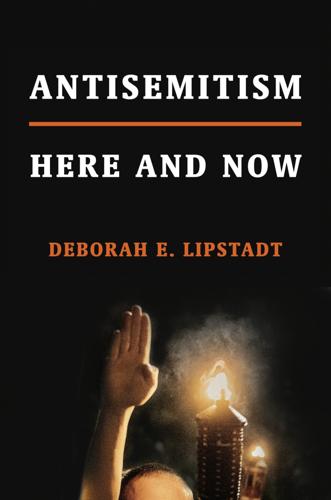
Antisemitism: Here and Now
by
Deborah E. Lipstadt
Published 29 Jan 2019
Weisman marveled at the fact that the RJC could equate with “a straight face” the trollers who issued overtly antisemitic statements, threatened reporters with rape and death, and depicted them being pushed into gas chambers with members of pro-Clinton and pro-Sanders groups who had done no such things.5 A particularly bizarre phenomenon is antisemitic white supremacists who express fervent admiration for Israel. At an appearance at the University of Florida in October 2017, alt-right leader and white nationalist Richard Spencer depicted Israel as an example of the “ethno-state” he would like to create in the United States—a state in which non-whites (which include, in his determination, Jews) would be ghettoized away from white people.6 He hates Jews but loves Israel. Being simultaneously antisemitic and pro-Israel seems to be possible in several European countries as well. In the summer of 2017, Hungarian prime minister Orbán began a concerted attack on George Soros, a billionaire Hungarian American Jew and Holocaust survivor who has funded pro-democracy and human rights groups in many former Soviet-bloc countries, including Hungary.

Only Americans Burn in Hell
by
Jarett Kobek
Published 10 Apr 2019
The most obvious place where this principle operated was within the publishing industry of the United States of America. Despite decades of effort, and thousands of Internet thinkpieces about the inclusion of marginalized voices, publishing was a dirty business that had done nothing to alleviate a system of ghettoizing its authors based on their physical appearances and socio-economic points of origins. The books of the publishing industry rested on a cheap shorthand, with each of its marketing demographics defined by the implicit prejudices of the American upper middle class. And if you think that’s an exaggeration, ask yourself this: how many well-received books of Literary Fiction published over the last thirty years do you remember being written by a poor person?
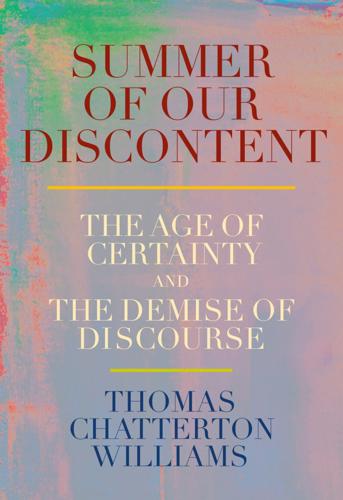
Summer of Our Discontent: The Age of Certainty and the Demise of Discourse
by
Thomas Chatterton Williams
Published 4 Aug 2025
*6 Touré is a writer, television personality, and podcaster who goes by one name, like Sinbad or Colette. The New York Times Book Review once described him as follows: “A graduate of the prestigious prep school Milton Academy in Massachusetts, and a formerly top-ranked amateur tennis player, Touré thinks blacks have too often embraced a hard-edged, ghettoized idea of what it means to be black in America.” “Up Front: Touré,” New York Times Book Review, May 1, 2009. *7 This was also the moment mainstream audiences were introduced to a very strange and novel mental contortion that would become increasingly common going forward. George Zimmerman, the momentary poster boy for white supremacy, was inconveniently not white, certainly not by any standard the genuine white supremacists of Till’s day would be able to imagine.
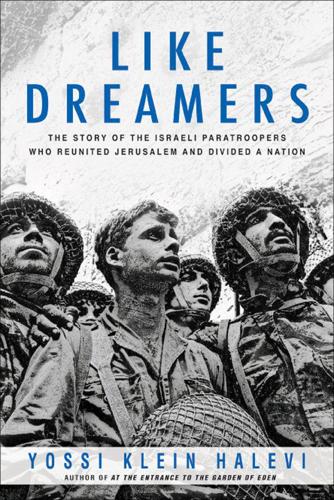
Like Dreamers: The Story of the Israeli Paratroopers Who Reunited Jerusalem and Divided a Nation
by
Yossi Klein Halevi
Published 4 Nov 2014
Give the Jews a state—a flag and postage stamps and marching bands—and they would become concretized, demystified. Normal. Zionism had been the Jews’ last desperate strategy for collective acceptance among the nations. And now that strategy had failed. Zionism had been turned against itself: the very means for freeing the Jews from the ghetto had become the pretext for their renewed ghettoization. Only Gush Emunim had a ready explanation for why this was happening. It was an old Jewish answer, and it first appeared in the Bible: “Lo it is a nation that shall dwell alone and not be reckoned among the nations.” Not that Hanan and Yoel and their friends welcomed Israel’s isolation. But it hardly fazed them.
…
But even as the Israelis of the coast were drifting away from their Jewish roots, the Israelis of the mountain were retreating into a self-enclosed provinciality. Religious Zionism had been founded as a mediation between modernity and tradition, but parts of the religious Zionist community were adopting ultra-Orthodox ghettoization. And they were replacing the messy engagement with reality—the essence of the Judaic approach to life—with a purist ideology that bypassed historical process. If the alienation between the mountain and the coast continued, Yoel now taught, Israel would, God forbid, face hurban, destruction. “The body pulls to excessive materialism, and the soul to detached spirituality,” he told a journalist.
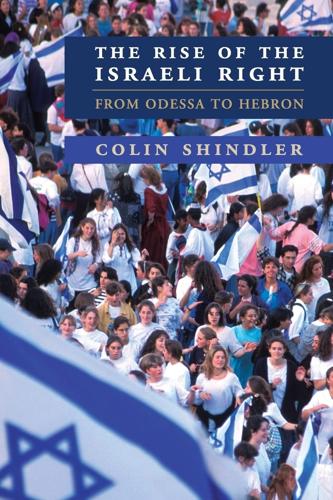
The Rise of the Israeli Right: From Odessa to Hebron
by
Colin Shindler
Published 29 Jul 2015
The Prospect of Partition 147 The broad opposition to partition was based on a plethora of reasons.59 Some indicated that Eretz Israel – the Land of Israel – was a single unit, historically and geographically, and that the River Jordan did not divide its parts but joined them. Given the proposed dimensions, such a state would not be economically viable. Water sources would be lost and it would effectively ghettoise the Jews such that a large army would be required to defend its borders. Moreover, its small size would not attract further Jewish immigration. On the other hand, if this proved incorrect and 100,000 immigrants a year did actually come, then the population would be three times as dense as that of England – the densest in Europe.
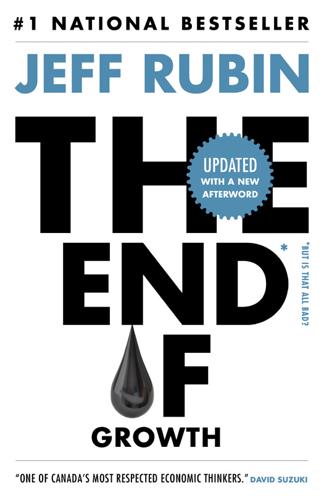
The End of Growth
by
Jeff Rubin
Published 2 Sep 2013
Concerns about Saudi Arabia aren’t just theoretical. In neighboring Bahrain, an absolutist monarchy sits tenuously atop a country divided by fundamental religious and economic differences. A Sunni elite minority lives in glass towers in the capital city of Manama, while a politically disenfranchised Shiite working class is ghettoized in suburban slums, shut out from high-paying jobs in government, the military and the private sector. A former British colony, the island kingdom of Bahrain was supposed to be a constitutional monarchy run by an elected parliament. At least, that was the plan when Britain turned over the island to home rule.
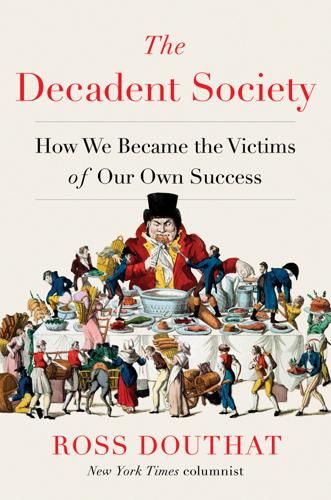
The Decadent Society: How We Became the Victims of Our Own Success
by
Ross Douthat
Published 25 Feb 2020
To the extent that Western decadence is shaped by Western Christianity’s mix of weakness and resilience, its internal stalemate in the debate over its confrontation with modernity, its preservationist but not dynamic position in the culture, then it’s hard to imagine a more decisive way to end this phase in history than with the full revival of the religious tradition that Christianity once displaced. A Western Islam? A Christian China? But, of course, Christianity has other rivals. If the return of paganism is one end-of-religious-decadence scenario, another obvious one would be the spread of Islam, in Europe especially, out of its current position as the ghettoized Other, and into the role of cultural inheritor that both radical and merely ambitious Muslims envision for their faith. As I argued in chapter 7, this is not presently happening: Islam is growing in the West through migration rather than conversion, and to outsiders it’s defined more by its ongoing convulsions and civil wars—and, of course, the threat of terrorism—than by its potential allure as an alternative to an incoherent secularism and a faded Christianity.
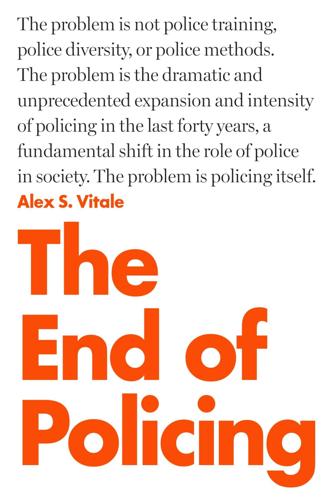
The End of Policing
by
Alex S. Vitale
Published 9 Oct 2017
Up until the 1960s, this was largely accomplished through the racially discriminatory enforcement of the law and widespread use of excessive force. Blacks knew very well what the behavioral and geographic limits were and the role that police played in maintaining them in both the Jim Crow South and the ghettoized North. Political Policing in the Postwar Era With the rise of the civil rights movement came more repressive policing. In the South police became the front line for suppressing the movement. They denied protest permits, threated and beat demonstrators, made discriminatory arrests, and failed to protect demonstrators from angry mobs and vigilante actions, including beatings, disappearances, bombings, and assassinations.
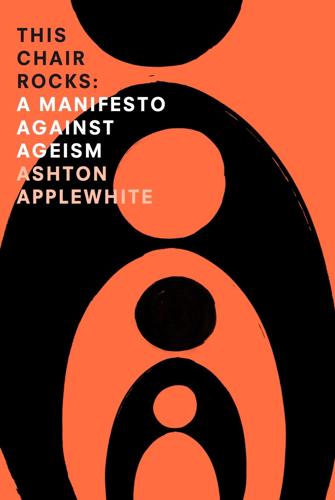
This Chair Rocks: A Manifiesto Against Ageism
by
Ashton Applewhite
Published 10 Feb 2016
It’s important to show up at that birthday party, not only because segregation impoverishes our lives but because the exchange of skills and experience across generations makes sense in so many arenas, from kitchen to conference room, from learning a language to mastering a sport, from art to astronomy. The list could go on forever, because it’s the natural order of things. In the United States, ageism has subverted it. And when people aren’t visible, whether ghettoized or homebound, whether by choice or reluctantly, so are the issues that affect them. Decouple identity and capacity Even when shame is held at bay, even when help is adequate and freely offered, it’s hard to negotiate the loss of independence. Especially as they head into their eighth or ninth decades, people worry, not without reason, about being whisked off to an institution if they encounter any difficulties managing on their own.

The Gene Machine
by
Venki Ramakrishnan
Unable to find a flat that weekend, I signed up for a dorm room and spent the first year living primarily on cheese sandwiches at the cafeteria. Notwithstanding its culinary disadvantages, the dorm room had the great benefit of allowing me to instantly acquire a group of friends and avoid the feeling of isolation and ghettoization so common to foreigners. My dorm mates quickly helped me assimilate into American college life. The first Saturday, we went to a football game. The pomp, with cheerleaders, bands, and the loud PA system, seemed to dwarf the game itself. The dorm also had the advantage of being close to the physics department, and several fellow graduate students lived in rooms nearby, so we were able to form a friendly study group and get used to graduate school together.
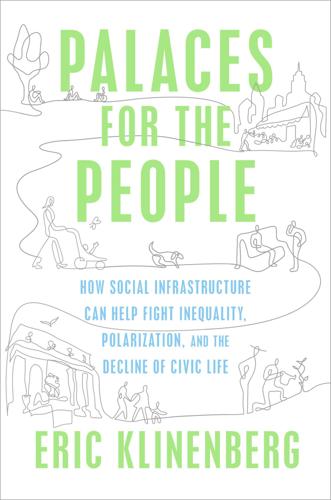
Palaces for the People: How Social Infrastructure Can Help Fight Inequality, Polarization, and the Decline of Civic Life
by
Eric Klinenberg
Published 10 Sep 2018
” * * * Stories like these help explain the popularity—or perhaps the necessity—of social infrastructures that serve as safe spaces for members of excluded groups that are subjected to prejudice, discrimination, and violence. Oppressed communities often endure extreme social and economic pressures that inhibit the formation of stable, enduring relationships. In the United States, as the Harvard sociologist Orlando Patterson has argued, the history of slavery, ghettoization, segregation, and mass incarceration has led to high levels of instability within the black community. “Afro-Americans are the most unpartnered and isolated group of people in America,” Patterson writes, “and quite possibly in the world.” Black Americans, and all other groups that face severe discrimination, need spaces that foster support and cohesion.
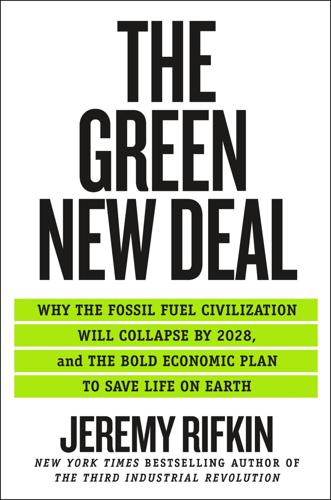
The Green New Deal: Why the Fossil Fuel Civilization Will Collapse by 2028, and the Bold Economic Plan to Save Life on Earth
by
Jeremy Rifkin
Published 9 Sep 2019
Mass transit, a vital means of transportation in inner cities, was allowed to atrophy across the North at the height of the auto age. Inner-city trolley systems and public bus systems were often scuttled to ensure exclusivity for automobile transport. Unemployed, on welfare, without mobility, and isolated and ghettoized, generations of African American families became wards of the state. Drug traffic, gang warfare, and the rest followed. * * * In 1977, my colleague Randy Barber and I began a conversation about the plight of American workers and small- and medium-sized businesses in the northeastern and midwestern tiers of the country.
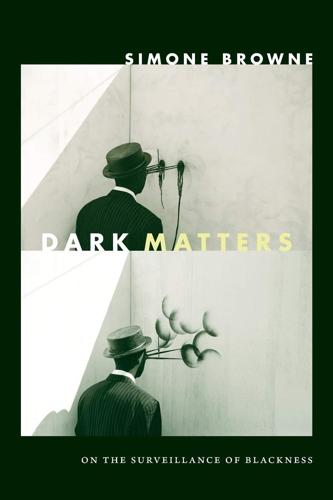
Dark Matters: On the Surveillance of Blackness
by
Simone Browne
Published 1 Oct 2015
Shaneesha Turner from Tracey Takes On . . . , South Park’s Officer Wiley, Shaniece and Jamiqua from Soul Plane, Ka-son on the sketch comedy series Mad TV, Black Cindy from Orange Is the New Black, Female Security Agent #2 in Malcolm in the Middle, and the TSA agent in a 2014 television ad for Old Navy jeans who exclaims, “Excuse me Miss, but I’m going to have to take a closer look,” as she ogles a passenger while waving her handheld metal detector are all striking for the ways that they highlight what Collins has explained as two of the ongoing dimensions of African American women’s oppression: labor exploitation as seen in their “longstanding ghettoization in service occupations,” and controlling images of black women that are stereotyped representations of certain ideologies around black womanhood that originated in slavery and endure in the present day.66 While the black and sassy TSA agent might be a signifier of state power, that power is merely perceived.

Monolith to Microservices: Evolutionary Patterns to Transform Your Monolith
by
Sam Newman
Published 14 Nov 2019
The one certainty is that not everything will go smoothly, and you will need to be open to reverting changes you make, trying new things, or sometimes just letting things settle for a moment to let you see what impact it is having. If you try to embrace a culture of constant improvement, to always have something new you’re trying, then it becomes much more natural to change direction when needed. If you ghettoize the concept of change or process improvements into discrete streams of work, rather than building it into everything you do, then you run the risk of seeing change as one-off transactional activities. Once that work is done, that’s it! No more change for us! That way of thinking is how you’ll find yourself in another few years way behind all your competitors and with another mountain to climb.
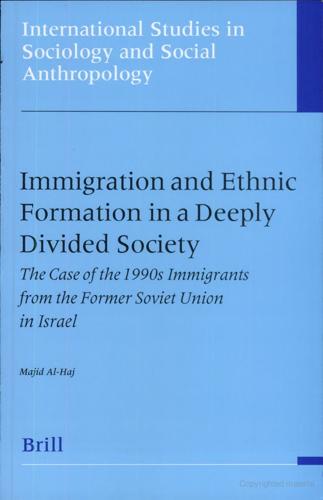
Immigration and Ethnic Formation in a Deeply Divided Society: The Case of the 1990s Immigrants From the Former Soviet Union in Israel
by
Majid Al Haj
Published 20 Nov 2003
The immigrants from the FSU: Segregation and integration. Jerusalem: Center for Social Policy Studies in Israel (Hebrew). ——— . 1999. The mass immigration of the fifties: The failure of the melting-pot policy. Jerusalem: Mossad Bialik (Hebrew). —— and Elazar Leshem. 1995. The Russian intelligentsia in Israel: Between ghettoization and integration. Israeli Affairs 2(1–2): 20–36. Litvak, Yoseph, Avraham Yehoshafat and Nono Magor. 1981. The Jews of Georgia, Bokhara and the Caucasus. Aliya potential for the 1980s. Jerusalem: The Ministry of Immigration Absorption, Section for Planning and Research (mimeographed) (Hebrew). 231 Livneh, Neri. 1999.
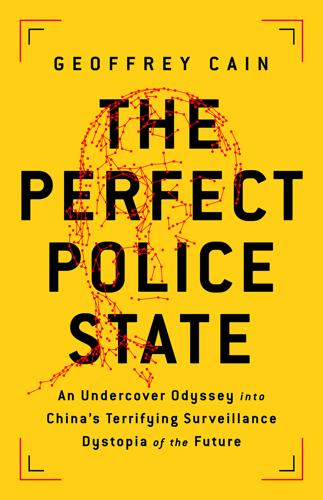
The Perfect Police State: An Undercover Odyssey Into China's Terrifying Surveillance Dystopia of the Future
by
Geoffrey Cain
Published 28 Jun 2021
More and more “convenience police stations” were also popping up on street corners in Kashgar; and soon there were more than 950 stations in Urumqi, where Maysem occasionally stopped on a layover for a flight to Ankara.1 “Changes are coming,” people told each other. Rumors were spreading that the Communist Party wanted harder, stronger leadership. Maysem wandered Kashgar, where she saw old neighborhoods where friends lived suddenly fenced in. Ghettoized, they had to show their ID cards to enter and exit. “Construction workers showed up suddenly, without telling anyone, and put fences around neighborhoods overnight. They woke up wondering what happened,” Maysem said.2 Purchasing simple household items like kitchenware and groceries became a hassle.
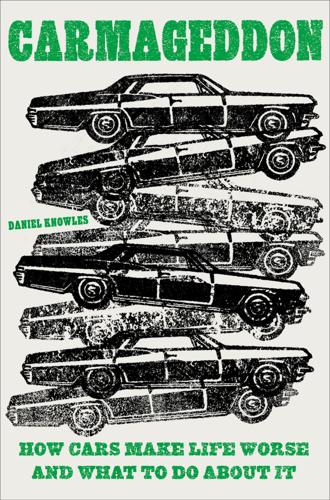
Carmageddon: How Cars Make Life Worse and What to Do About It
by
Daniel Knowles
Published 27 Mar 2023
The new subsidized suburbs were typically at the edges of cities, and only really accessible by automobile. But roads had to be built through existing neighborhoods—often precisely the ones that were redlined. Highway officials saw roadbuilding as an opportunity—not only to improve transportation but also to demolish what they called “slums”—in reality, generally the ghettoized neighborhoods where Black people were forced to live. Alfred Johnson, of the American Association of State Highway Officials, recalled that “some city officials expressed the view in the mid-1950s that the urban Interstates would give them a good opportunity to get rid of the local ‘niggertown.’ ” Detroit was a particular victim.

Heart of the Machine: Our Future in a World of Artificial Emotional Intelligence
by
Richard Yonck
Published 7 Mar 2017
At times certain subsets of the population will push for acceptance and a change of behavior across an entire society before a sufficient number of its members are prepared for such an adjustment. Sometimes this results in accelerating acceptance and thus normalization of those perceived differences through legislative means, before they would have otherwise been accepted. However, such acceleration can also backfire, giving rise to ostracism, ghettoization, and worse. We would be wise to look to the lessons of the uncanny valley in helping us to prepare for or, better, to avoid future conflicts such progress might bring about. To bring these ideas about the uncanny valley full circle, consider a future in which conscious, emotionally sentient machines exist.
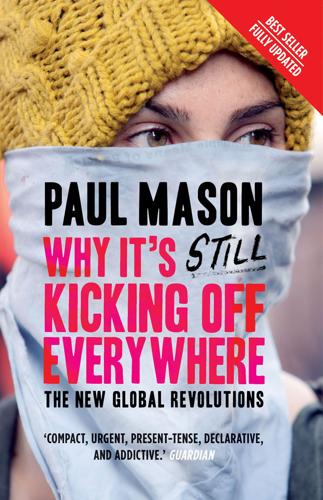
Why It's Still Kicking Off Everywhere: The New Global Revolutions
by
Paul Mason
Published 30 Sep 2013
As discussed in Chapter 7, the working class of a modern economy tends to be culturally divided between those exposed to global labour markets and technocratic conditions, and this beleaguered group oriented to traditional values and national economic solutions. Absent any solidarity between the plebeian right and the left intelligentsia, the protests against Putin would continue to be small, repressed and ghettoized. Sergei Udaltsov, the leader of the Left Front, would, in the twelve months before the 2011 election, spend a total of eighty-six days in detention. And for some the price of dissent could be higher still. Ask Alexander Litvinenko. Ask Sergei Magnitsky, the anti-corruption lawyer imprisoned without trial, who died in custody after being denied medical assistance.
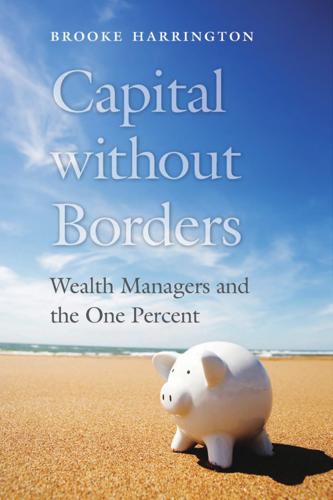
Capital Without Borders
by
Brooke Harrington
Published 11 Sep 2016
In medieval Europe, money changers were segregated from the rest of society: for example, in 1141, King Louis VII of France restricted the practice to a single bridge over the Seine, right next to a prison.26 Lending money at interest, an even more transgressive activity in light of the Catholic prohibition against usury, was famously the province of ghettoized Jews; although many European kings availed themselves of this service, the practitioners were relegated to the margins of civilization, like butchers and executioners.27 One of the major advances pioneered by OFCs was to turn this isolation—usually a source of shame—into an advantage. As they discovered, “a sovereign right to write the law … can be used as a competitive asset.”28 The “fiction of fragmentation” With the loosening of currency controls and the increasing ease of international travel and communication, wealth management strategies now hinge on scattering assets as far and wide as possible.
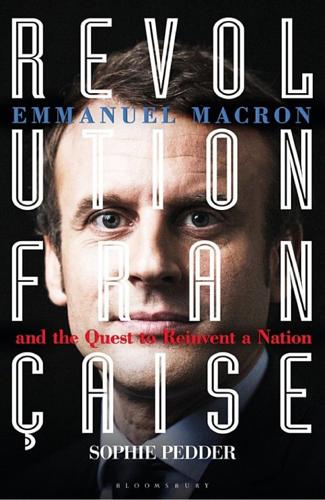
Revolution Française: Emmanuel Macron and the Quest to Reinvent a Nation
by
Sophie Pedder
Published 20 Jun 2018
Many of those who made the effort said that their applications got nowhere; they suspected that a foreign-sounding name, or the local postcode, put employers off. A report in 2004 by the Institut Montaigne exposed job discrimination on the basis of address or name on ‘an undreamed of’ scale. France has no monopoly on a ghettoized, isolated underclass, but its high unemployment rate makes life in its banlieues particularly difficult. ‘The only integration that means anything is a job,’ Samir Mihi, a youth worker at Clichy’s town hall whose parents came to France from Algeria, told me. Over the years, governments have appointed cities ministers, devised ‘Marshall plans’, and invested billions in regeneration schemes.
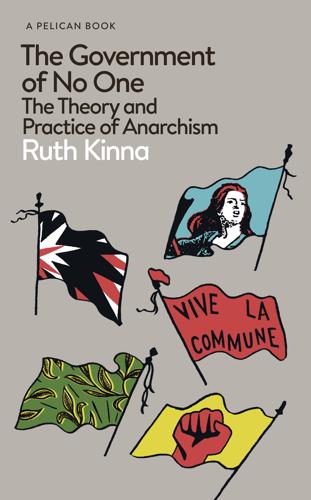
The Government of No One: The Theory and Practice of Anarchism
by
Ruth Kinna
Published 31 Jul 2019
Noted for mixing self with sociological analysis, Goodman wrote about his sense of anomie from the vacuity of American consumerism and suburban living and the effects of corporate advancement, rationalization, affluence and bureaucratic welfare systems in post-war America. These were almost entirely detrimental and he used the term ‘the empty society’ to describe the prevailing culture. Some of the most obvious symptoms of the ‘empty society’ were middle-class withdrawal into the suburbs, the urban ghettoization of poor and Black American populations, the growth of public media and the concomitant depletion of intelligent news reporting, social breakdown and delinquency. America, he argued in 1966, was ‘on a course’ heading towards ‘empty and immoral empire or to exhaustion and fascism’.64 These seismic sociological shifts were played out in education.

Coding Freedom: The Ethics and Aesthetics of Hacking
by
E. Gabriella Coleman
Published 25 Nov 2012
Equally crucial was that free software production was never easily shackled to a Right versus Left political divide, despite numerous attempts early in its history by its critics to portray it as communist. In an era when identification with Right or Left, conservative or liberal, often functions as a politically paralyzing form of ideological imprisonment, F/OSS has been able to successfully avoid such polarization and thus ghettoization. Even if some hackers write and release free software for political reasons, many developers tend to divorce an official, broadly conceived political stance outside software freedom from their collective laboring (with the exception of free software projects defined primarily by political aspirations).
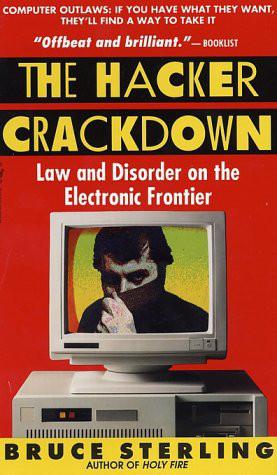
The Hacker Crackdown
by
Bruce Sterling
Published 15 Mar 1992
As a cultural artifact, the thing approaches poetry. Underground groups—subcultures—can be distinguished from independent cultures by their habit of referring constantly to the parent society. Undergrounds by their nature constantly must maintain a membrane of differentiation. Funny/distinctive clothes and hair, specialized jargon, specialized ghettoized areas in cities, different hours of rising, working, sleeping.... The digital underground, which specializes in information, relies very heavily on language to distinguish itself. As can be seen from this list, they make heavy use of parody and mockery. It's revealing to see who they choose to mock.

Antonio-s-Gun-and-Delfino-s-Dream-True-Tales-of-Mexican-Migration
by
Unknown
Mexicans got used to expecting the PRI 184 / CHAPTER SIX government to give them all sorts of things: housing and hospitals, basketball courts and soccer fields, clinics for the elderly and handicapped, eyeglasses for children. On this list was support for the arts. The PRI also discouraged social involvement by the private sector; business’s job was business, and the private sector avidly accepted its ghettoization. There were isolated cases of businessmen helping to build parks or low-income housing. For example, in December , without government help, a coalition of businesses held Mexico’s first nationwide telethon, to raise money for a handicapped children’s clinic—now an annual event. But years of PRI paternalism created an addiction to government aid that many arts groups still haven’t shaken.
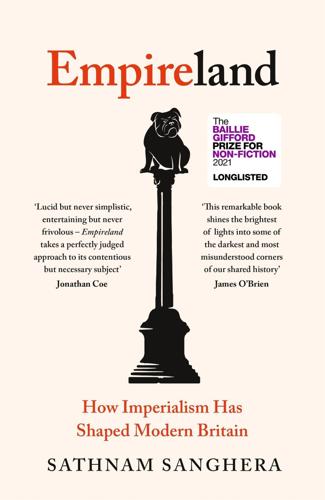
Empireland: How Imperialism Has Shaped Modern Britain
by
Sathnam Sanghera
Published 28 Jan 2021
Institutions like the Migration Museum in Lewisham and the International Slavery Museum in Liverpool are doing important work in their spheres, and William Dalrymple’s suggestion that Britain set up a ‘museum of colonialism’ is inspired,8 though it would of course be better if national institutions integrated these themes into what they already do, the risk with specialized institutions being that such history gets ghettoized. Activists like Alice Procter have done such a fine job of highlighting alternative narratives about museum artefacts that places like the British Museum have been forced to change. Other activists behind the Rhodes Must Fall Campaign have done productive work putting on imperial tours of places like Oxford, which have received positive reviews from unlikely places.
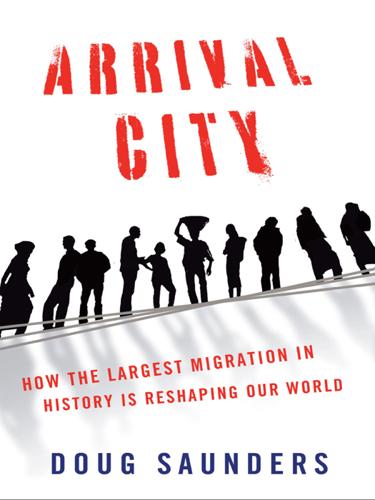
Arrival City
by
Doug Saunders
Published 22 Mar 2011
There has long been a tendency to refer to the neighborhoods on the Paris outskirts, and similar neighborhoods across the West, as “immigrant ghettos” or “ethnic enclaves,” and to attribute their failings and eruptions to a perceived racial and ethnic segregation. When you examine them as arrival cities, though, the distinguishing thing about Les Pyramides and its even uglier siblings is not ethnic ghettoization but extreme heterogeneity. The sociologist Loïc Wacquant has built his career on proving that the French banlieues and other “neighbourhoods of relegation” across Europe are not at all segregated in the sense of classic American black ghettos but are, instead, “anti-ghettos,” places that are, in fact, very multi-ethnic—and this, he argues, is precisely the problem: these neighborhoods are places of “advanced marginality” that haven’t been able to form any sort of community at all, ethnic or otherwise.
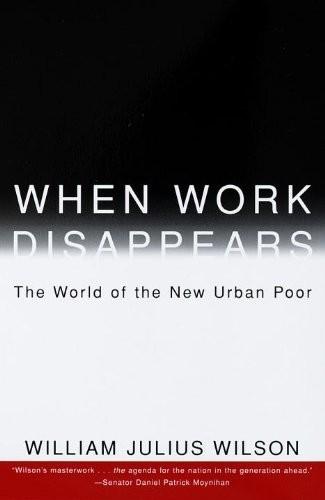
When Work Disappears: The World of the New Urban Poor
by
William Julius Wilson
Published 1 Jan 1996
The trends in western cities were similar to those of the South—declines in the number and proportion of the poor in ghetto census tracts during the 1970s and a substantial increase during the 1980s, including an 80 percent growth in the number of ghetto poverty tracts. 12 The number of such tracts has more than doubled since 1970: Between 1970 and 1990, the prevalence of ghetto tracts increased from 6 percent of the total number of census tracts in the nation’s one hundred largest cities to 13.7 percent of the total (Kasarda 1993b). 13 Paul Jargowsky’s research: Jargowsky (1994). Jargowsky arrived at this figure using a slightly modified measure of ghetto poverty that does not obscure the real degree of ghettoization among blacks who live in census tracts in which a significant proportion of the residents are white. Because of the high level of racial segregation in American cities, most census tracts are nearly all black or all white. However, a growing percentage of tracts include a considerable number of both blacks and whites.
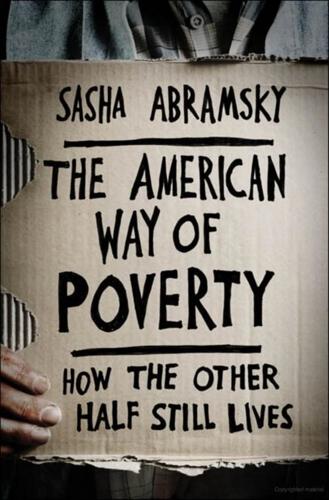
The American Way of Poverty: How the Other Half Still Lives
by
Sasha Abramsky
Published 15 Mar 2013
As the stories accumulated, three things struck me with particular force. The first is the sheer loneliness of poverty, the fact that profound economic hardship pushes people to the psychological and physical margins of society—isolated from friends and relatives; shunted into dilapidated trailer parks, shanties, or ghettoized public housing; and removed from banks and stores, transit systems and cultural institutions. The poor live on society’s scraps—a few dollars in government assistance or charity, donated food, thrift-store clothes. They can afford neither transport to venture out of their communities nor simple luxuries such as movies or a cup of coffee with friends in a café.
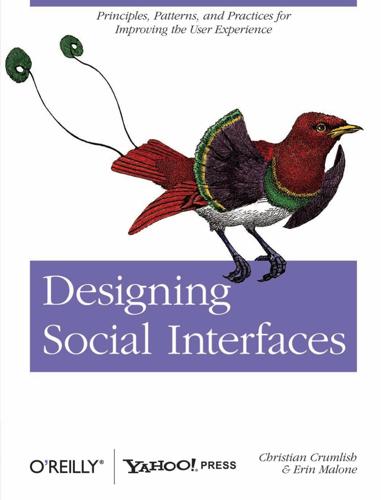
Designing Social Interfaces
by
Christian Crumlish
and
Erin Malone
Published 30 Sep 2009
Some of them are amazingly inventive, and others are downright weird. With all these different opportunities and rehashes of social features, just where should designers be paying attention? The breadth of software being developed for consumers today is only half the story. Opportunities lie with mashups and open software. Areas that traditionally have been ghettoized in traditional web software design are mobile and enterprise. Often forgotten or addressed as an afterthought, these areas provide rich and interesting challenges to creating social experiences. If you want to see the future of interactive interfaces, look to gaming. Game designers have the liberty to experiment and Darwinian competitive pressures.
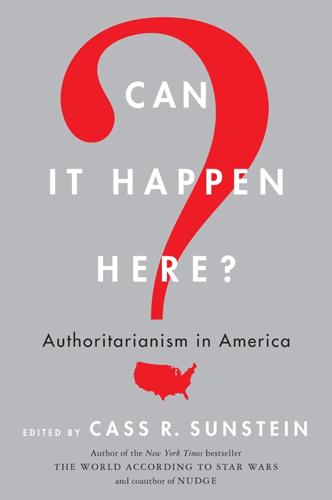
Can It Happen Here?: Authoritarianism in America
by
Cass R. Sunstein
Published 6 Mar 2018
To delve into the deeper causes of a widespread public disenchantment with democracy, we should focus not on inequality or the growing gap between rich and poor in liberal-democratic societies, but rather on economic insecurity, in the sense of fear of downward social mobility, and the mutual ghettoization of social classes, a disconnect that makes ordinary citizens feel that they have lost all leverage over their national elites. The Cold War gave economic elites in the West a strong motive to make capitalism seem legitimate in the eyes of ordinary people.39 This became much less true after the Cold War ended.

Green Philosophy: How to Think Seriously About the Planet
by
Roger Scruton
Published 30 Apr 2014
Yet real oikophilia, like charity, begins at home, and it is precisely in this respect that American environmentalism has been deficient. Urban sprawl is only part of the problem; far more serious, as I suggested, is the collapse of the inner city, under the impact of zoning laws, inhuman building styles and ghettoization. Again, however, we should recognize that the problem is no sooner brought into prominence than the civic initiatives begin that promise to mitigate it. In reaction to the wilderness culture there has arisen an agrarian culture represented by writers like Wendell Berry and Allen Carlson, and by associations like the National Family Farm Coalition and the Food Family Farming Foundation.341 In reaction to the devastation of the cities there has arisen the New Urbanism movement I discussed earlier, itself anticipated by the seminal Country Club House development of J.

Confessions of an Eco-Sinner: Tracking Down the Sources of My Stuff
by
Fred Pearce
Published 30 Sep 2009
Christopher Alexander, professor of architecture at the University of California, Berkeley, saw neighbourhoods not just as irrelevant, but as ‘military encampments designed to create discipline and rigidity’. The subtext was clear: socialist neighbourhoods bad, capitalist freedom good. But the result of this infatuation was not total freedom, but gridlock, suburban blight, the ghettoization of people without cars, and burgeoning crime and social dislocation in bleak nightmarish urban landscapes. More Clockwork Orange than Broadacre City. Milton Keynes is a British national joke, and Brasilia is surrounded by the favelas it was supposed to replace. As a non-driver, quite at home in London, I despair at the sheer impossibility of getting round many other modern cities without a car.
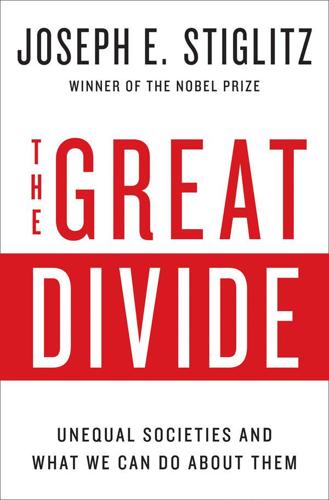
The Great Divide: Unequal Societies and What We Can Do About Them
by
Joseph E. Stiglitz
Published 15 Mar 2015
Combine this urban sprawl with inadequate public transportation systems and you have a blueprint for transforming working-class communities into depopulated ghettos. Adding to the problems that would inevitably arise from such poorly designed urban agglomerations is the fact that the Detroit metropolitan area is divided into separate political jurisdictions. The poor are thus not only geographically isolated, but politically ghettoized as well. The result is a separate, poorer inner city with a dearth of resources, made even worse because the industrial plants that had provided the core of the tax base are shut down. The decision to file for Chapter 9 municipal bankruptcy protection was made by Kevyn D. Orr, the nonelected emergency manager appointed by Gov.

Smart Cities: Big Data, Civic Hackers, and the Quest for a New Utopia
by
Anthony M. Townsend
Published 29 Sep 2013
“There are indeed relevant studies on urban behavior and urban dynamics,” he wrote, “but to identify these is a large and separate task.” With no formal training in urban planning, based solely on his computer simulation, Forrester recommended the demolition not only of slums but of federally subsidized public housing as well, which the model showed became poverty traps for their inhabitants. While the ghettoization of the poor in housing projects is now widely recognized, it was obvious failures like the disastrous Pruitt-Igoe complex in Saint Louis (which was torn down in the 1970s) and painstaking fieldwork by a generation of social scientists that made the case in the end.55 Urban Dynamics was perhaps the most ambitious effort of that generation of computer-based urban simulations.

Surveillance Valley: The Rise of the Military-Digital Complex
by
Yasha Levine
Published 6 Feb 2018
He became convinced that the carrot was much less effective than the stick: social programs—things like building roads and health clinics and providing jobs—designed to “buy” hearts and minds simply didn’t work. But harsh, punitive measures did (Jason DeParle, “Daring Research or ‘Social Science Pornography’?: Charles Murray,” New York Times, October 9, 1994). He would apply that logic in the United States to the difficult socioeconomic problems faced by black ghettoized communities. Reducing poverty and inner-city crime—these were not problems that could be solved through welfare and social programs. In fact, anything the government did to support and nudge people in the right direction didn’t work; they had the opposite effect: they only encouraged the very behavior they were aimed at curbing.
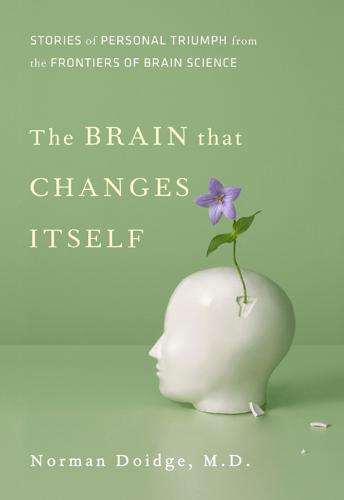
The Brain That Changes Itself: Stories of Personal Triumph From the Frontiers of Brain Science
by
Norman Doidge
Published 15 Mar 2007
Only with the spread of democratic ideals of individualism did the idea that lovers ought to be able to choose spouses for themselves take firmer hold and gradually begin to seem completely natural and inalienable. It is reasonable to ask whether our sexual plasticity is related to neuroplasticity. Research has shown that neuroplasticity is neither ghettoized within certain departments in the brain nor confined to the sensory, motor, and cognitive processing areas we have already explored. The brain structure that regulates instinctive behaviors, including sex, called the hypothalamus, is plastic, as is the amygdala, the structure that processes emotion and anxiety.
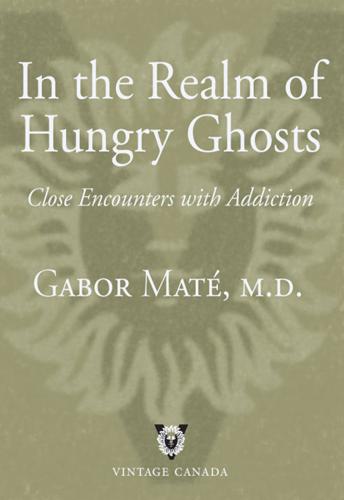
In the Realm of Hungry Ghosts: Close Encounters With Addiction
by
Gabor Mate
and
Peter A. Levine
Published 5 Jan 2010
I’ve had a small taste of it, having been stopped by cops on my Hastings Street rounds—once for jaywalking and once for riding my bicycle on the sidewalk. An officer’s tone shifts instantly from curt and contemptuous to polite when he realizes I’m not a Downtown Eastside resident. How utterly helpless I would feel, I have thought at such times, if I didn’t have a respectable address on my driver’s licence; if I lived in a restricted, ghettoized domain where a uniformed and armed force was the omnipresent power; if I depended on substances the police had to suppress and on activities they were obliged to prosecute; if I couldn’t count on reliable friends and family to advocate for me if ever I got into trouble. I have also witnessed officers treat my clients calmly and with kindness, but I know that’s not the face they always turn toward the addict.
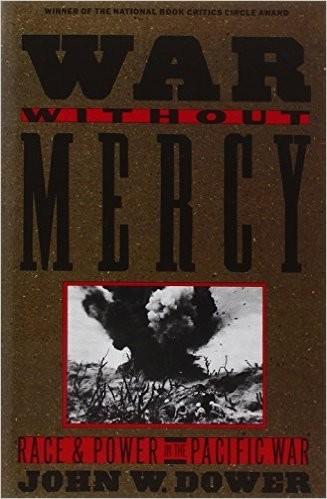
War Without Mercy: PACIFIC WAR
by
John Dower
Published 11 Apr 1986
They informed their Asian audiences not only about the exclusion policy itself, but also about the harassment of Chinese at detention centers (where, a Tokyo broadcast to China declared, they were “practically treated like a class apart from the rest of humanity”), the social pressures that forced Chinese into ghettoized “Chinatowns” in the poorer residential areas, and the discrimination that relegated most of them to “the most menial of occupations, despised and mistreated and at best patronizingly tolerated with a contemptuous humor.”28 One congressman referred to this as “drivel” dished out by “chattering monkeys,” another spoke of “the childish fury of this propaganda,” but virtually no one, including President Roosevelt, denied its potential effectiveness.
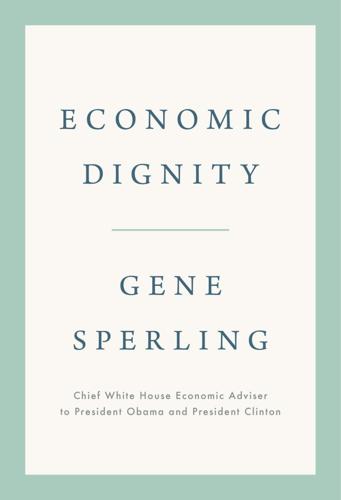
Economic Dignity
by
Gene Sperling
Published 14 Sep 2020
Stern also cites and quotes extensively Michael Tanner, a senior fellow at the libertarian Cato Institute, about how “we’ve been spending more and more money developing more programs, without getting any additional benefit, for over forty years. Maybe we need to re-think the whole approach.” He adds, “According to Tanner, the biggest problem with current anti-poverty programs is that they ‘infantilize’ the poor. ‘We treat poor people like they’re three years old.’ . . . Tanner also says that the welfare system ‘ghettoizes’ the poor. ‘It forces them to live in the one area of town that offers them free public housing, grocery stores that accept food stamps, and doctors who take Medicaid.’” Raising the Floor, 186. Also consider activist Scott Santens, who approvingly cites a misleading Weekly Standard piece to suggest that “basic income is entirely affordable given all the current and hugely wasteful means-tested programs full of unnecessary bureaucracy that can be consolidated into it.”
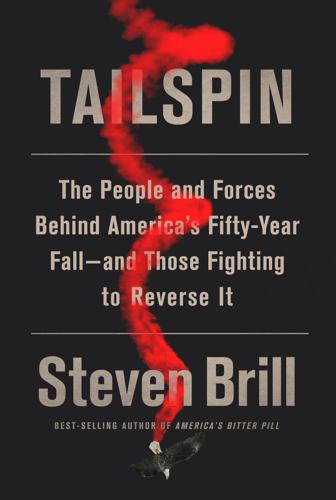
Tailspin: The People and Forces Behind America's Fifty-Year Fall--And Those Fighting to Reverse It
by
Steven Brill
Published 28 May 2018
As portrayed in Robert Caro’s classic biography, The Power Broker, Moses was the brilliant but arrogant czar of New York’s infrastructure in the middle of the last century. He developed a massive network of highways, parkways, parks, public housing, and beaches, but he destroyed innumerable neighborhoods and ghettoized the poor in the process. The environmental laws and the court decisions that began to take hold toward the end of his reign, starting with a 1971 Supreme Court ruling blocking a federally funded highway from cutting through a Memphis park, made sense—before they were carried too far and bottled up almost any significant construction.
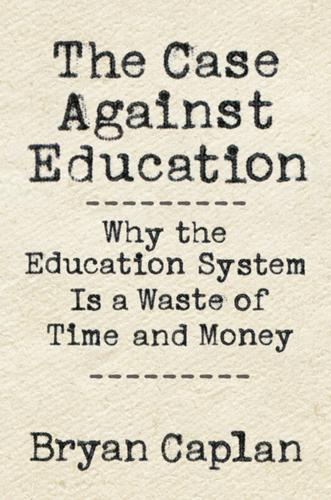
The Case Against Education: Why the Education System Is a Waste of Time and Money
by
Bryan Caplan
Published 16 Jan 2018
See thinking skills Regnerus, Mark, 252 relevance, 14, 28, 35, 50, 59 religion, impact of education on, 251–52 Republicans, 46, 195, 247–48, 332n26, 333n30, 333n36 retention, 39–40 reverse causation, 116–17 Riddell, W., 309n5, 309n10 Roksa, Josipa, 65 Rose, Stephen, 311n35–36 Ross, Catherine, 318n53 Rothman, Stanley, 332n26 Rothstein, Donna, 331n25 Rouse, Cecilia, 307n3, 309n9, 323n116 Rowe, Mike, 236 Rozell, Elizabeth, 306n86 Ruhm, Christopher, 331n24–25 Ryan, Ann, 306n87 Sagan, Carl, 193 Salomon, Gavriel, 50–51 Salvanes, Kjell, 317n26 Sass, Tim, 332n11 Sawhill, Isabel, 323n118 Schelling, Thomas, 14, 16 Schmidt, Frank, 306n80, 315n95 Schneider, James, 31 Schneider, W., 300n89 Schoenhals, Mark, 331n25 schoolcraft as soulcraft, 199 science, knowledge of, 47–48 Scott-Clayton, Judith, 329n33 Segerstrom, Jan, 330n9 selfish return to education, 5, 285; ability and, 145–48, 271–72; college quality and, 149–51; doubts about the guidance offered, 163–64; feelings about school versus work, 153–54; gender and, 153–55; for the Good Student, 130–44 (see also Good Student, calculating the return on education for); guesswork required to calculate, 129–30, 162, 164, 274; identifying all benefits and costs, 128–29; majors and, 147–49; marriage and, 154–58; out-of-pocket costs and, 151–53; practical guidance for prudent students, 160–62; a primer on calculating the return, 125–28; social perspective versus, 124–25; spreadsheets, personalizing, 164; vocational education, applied to, 227–28; workforce participation and, 158–60 Shakespeare, William, 285 sheepskin effects: for advanced degrees, 309n5; as careers progress, 110; criminal activity and, 179–80; distinguishing human capital from signaling with, 269–70; education and crime, 326n55; estimates with explicit degree measures, 308–9n42; estimates with no explicit degree measures, 307n2; for a Good Student, 130–31; marriage and, 156; the master’s degree and, 163; signaling and, 97–102, 121–22, 168 Siddique, Zahra, 306n94 signaling model of education: academic success as labor market signal, 3, 13–14, 26, 263–64, 288; basics of, 14–15; Cautious versus Reasonable scenarios of, 167–69, 183–86, 190, 192–93, 207–8; conformity, 267–68 (see also conformity); criminal activity and, 178–80; earnings premium, human capital/signaling split of (see human capital/signaling split of the earnings premium); economic premium, explanation of, 113–14; employer learning and, 110–13; facts inexplicable without, 26–30; ghettoization of, 16; labor economists versus, 121–23, 270; learning and earning, reconciling the facts of, 39, 70, 94–97; locked-in syndrome of education and, 19–22; malemployment and, 103–8; objections to, 22–26; online education, the problem with, 220–21; personal versus national education and, 114, 117–18; policy to reverse wasteful spending on education (see education policy); productivity and, 167–70; sheepskin effect and, 97–102, 121–22, 168; signaling as “significant fraction” of education, 4; social justice and, 213–15; social return to education and, 165, 183–90 (see also social return to education); solving a great neglected social mystery with, 7; statistical discrimination, special case of, 15, 108–9; test scores and, 119–20; traits that are signaled, 16–19, 266; vocational education and, 226–29 (see also vocational education); workforce participation and, 177 Simmons, Solon, 332n23 Smith, Jeffrey, 322n108 Smith, Nicole, 310n29 Snyder, Howard, 326n56 Snyder, Thomas, 297n3, 314n80, 320n74, 324n19, 324n22, 328n16 Social Desirability Bias, 222–24, 226, 269, 280, 287, 289 socialization: school ethic versus work ethic, 64–66 social justice, signaling and, 213–15 social return to education, 285; by ability, Cautious signaling and, 184–85; by ability, Reasonable signaling and, 186–87; dismal returns and the Educational Drake Equation, 194; doubts that require further study, 192–93; gender and, 190–92; the Good Student, Cautious signaling and, 183–84; majors/skill acquisition and, 190; marital implications, 166; a primer on, 166; selfish perspective versus, 124–25, 165, 272–73; by varied ability, years of education, and signaling share, 187–90; vocational education, applied to, 228–29 social return to education, identifying the factors: from compensation to productivity, 167–70; completion probability, 174; employment, 170; experience, accounting for, 173; health, 171–72; job satisfaction, happiness, and the joy of learning, 170–71; taxes and transfers, 170; tuition and other expenses, 172–73 social return to education, purely social benefits, 174; crime reduction, 177–80, 193; economic growth, 174–75; family ripple effects, quality of children as, 180–82; family size, 182; political participation, 180; workforce participation, 176–77 sociology, discipline of, 97, 121–22, 262, 276, 287, 315n97 Solon, Gary, 315n100 Somin, Ilya, 298n26 Sondheimer, Rachel, 333n41 Soto, Marcelo, 313n69, 313n74 soul: claimed benefits of education for (see nourishing mother, education as); play as beneficial for, 256–59 special education, 172 Spence, Michael, 14, 16, 121 Stanley, Marcus, 328n21 statistical discrimination, 15, 108–9 Stephens, Melvin, 304n37 Stiglitz, Joseph, 14, 16, 323n4 Stinebrickner, Ralph, 315n101 Stinebrickner, Todd, 315n101 Stone, Chad, 317n24 Strayer, Wayne, 296n21, 309n9 Strayhorn, Terrell, 336n22 Strohl, Jeff, 310n29 student debt, 210–11 students: “finish your degree, rest on your laurels,” 98; focus on grades, reason for, 30; learning as an educational benefit for (see learning); rejoicing when classes are canceled, 29–30 subtle learning, 28 Sullivan, Arthur, 96 Sum, Andrew, 325n41 Tabarrok, Alex, 329n47 Taber, Christopher, 302n8, 303n17 Taubman, Paul, 302n9, 323n3 taxation: education and, 273; education tax, objections to, 218–19; libertarian objection to, 215–16; paid by a Good Student, 133–34; social return to education and, 170; workforce participation and, 176 teachers: dubious claims by, 59; shaping or judging students, question of, 30; teaching impractical skills and the old joke about, 287–88; teaching interests and students’ needs, disconnect between, 12–13 Tenn, Steven, 333n41 Terpstra, David, 306n86 Tesch-Romer, Clemens, 301n93 test preparation, 60 thinking skills: college attendance and, 53; college majors and specific kinds of reasoning, 56–58; informal reasoning, effect of education on, 53–54; learning, claims for and reality of, 58–59; as the product of coursework, 50; statistical reasoning and, 54–55; “transfer of learning” as a developmental measure of, 50–52 Thurow, Lester, 10 Toma, Eugenia, 328n20 Toole, John Kennedy, 64 Topel, Robert, 315n101 Torr, Berna, 334n53 Tracy, Joseph, 305n61 transfer of learning, 50–59 transfer programs: the Good Student and, 133–34; social return to education and, 170; workforce participation and, 176–77 transformative education, 259–61 Trostel, Philip, 323n113 Turner, Sarah, 328n27 Twain, Mark, 9, 215 Tyler, John, 303n18, 331n25 Uecker, Jeremy, 252 unemployment: rates by level of education, 92; reduced likelihood for educated workers, 91–92; social return to education and, 170; voluntary, 176 United States Equal Employment Opportunity Commission, 305n72 unpaid internships, 232 usefulness, 32–38, 103, 264 Vaaler, Margaret, 252 value-added research, 120 Vedder, Richard, 306n83 vocational education, 286; child labor and, 233, 236–37; in developing countries, effectiveness of, 330n9; selfish return to, 227–28, 278–79; signaling’s share of the benefits from, 227–29; social returns to, 228–29, 278; traditionalists versus vocationalists, job training and, 233–36 voter turnout, impact of education on, 250–51 vouchers, 216–17, 276 Wagner, Richard, 239 Wales, Terence, 302n9, 323n3 Walker, Ian, 323n113 Warren, John, 331n25 Weiss, Andrew, 243, 323n4 wheat/chaff theory, 79; coursework, significance of, 80; Leno’s promotion of, 84–85; majors, significance of, 80–84; mismatch of job and major, significance of, 84 Wiles, Peter, 23 Willett, John, 303n18 Williams, Robin, 258 Woessmann, Ludger, 314n91, 330n10 Wolf, Alison, 196 Wood, Tom, 310n15 workforce participation, 158–60, 322n112.

The Rough Guide to Cape Town, Winelands & Garden Route
by
Rough Guides
,
James Bembridge
and
Barbara McCrea
Published 4 Jan 2018
DJ-mixed South African house manages to cross racial and cultural boundaries, attracting practitioners and fans from all sectors of the country, though it is dominated by black DJs such as DJ Fresh, Glen Lewis, DJ Mbuso, Thibo Tazz, DJ Fosta and Oskido. Meanwhile, South African rap has enjoyed sustained popularity since the early 1990s, remaining mostly ghettoized within the coloured community of the Western Cape apart from the likes of Soweto wunderkind Spoek Mathambo. Heavily influenced by African-American rappers, performers often exude a sense of being “Americans trapped in Africa”, but many mix in Cape slang and mine local life for material. Pioneers of the style were the heavily politicized Prophets of Da City, who included rapper Shaheen Ariefdien.
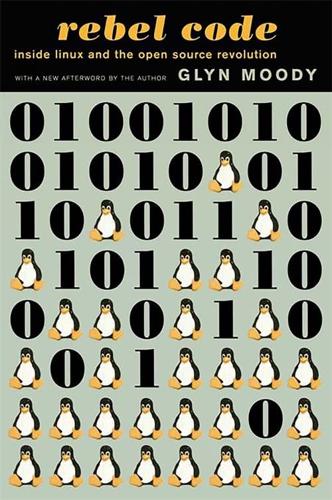
Rebel Code: Linux and the Open Source Revolution
by
Glyn Moody
Published 14 Jul 2002
Once more, his reasoning shows a shrewd understanding of the process through which information about free software is spread. “Pretty soon after [Perl] was released there were requests for a Perl newsgroup,” he recalls, “and I put that off. I didn’t want a Perl newsgroup because I didn’t want to be ghettoized. The dynamics of how Usenet worked, at least back then, was if you posted something off-topic for the newsgroup then people would say, ‘Well, take it to this other newsgroup,’” he explains. “I didn’t want people to be able to say that about Perl, so basically we infested the shell programming newsgroup, and whenever anyone would say, ‘How can I do such and so?’

Stranger Than Fiction: Lives of the Twentieth-Century Novel
by
Edwin Frank
Published 19 Nov 2024
But then the point of the story, by a writer whose dazzlingly precocious career would soon take a precipitous fall into drunkenness and madness, is to lead the reader to wonder, is it? In any case, the world of the 1930s that Schwartz depicts in his story was already in many ways the world after the war. These second-generation Jewish kids are moving on from the ghettoized life of their striving parents. Contraception is available, sexual mores are loosening, and one of the boys takes to cruising, regaling his pals with his exploits. New kinds of jobs are also opening: the story ends with Rudyard taking a position at a midwestern university, where he will teach writing.
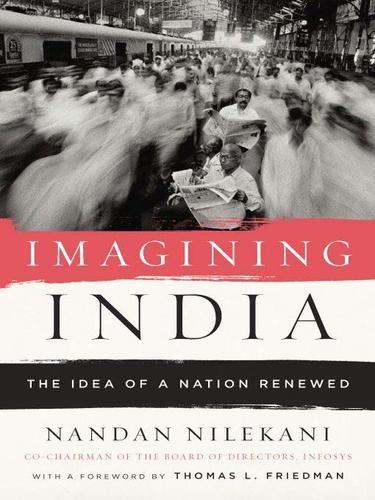
Imagining India
by
Nandan Nilekani
Published 25 Nov 2008
During such conversations I have felt very far away from India’s new optimism and its bustling markets. It is not easy to find common ground—between governments, entrepreneurs, the middle class and the poor—when people’s priorities and incentives are set so wide apart. In fact our ideas for the Indian economy have in recent years become more ghettoized than ever. A different view I have been fortunate to have had a unique perch from where to witness these divisions. I am of course an outsider in India’s politics, but the label also applies to me when it comes to Indian business. Having cofounded and worked in Infosys for twenty-six years, I can call myself an Indian entrepreneur.
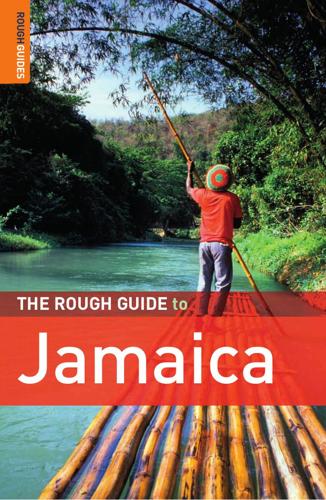
The Rough Guide to Jamaica
by
Thomas, Polly,Henzell, Laura.,Coates, Rob.,Vaitilingam, Adam.
You’ll also find a Devon House ice-cream parlour here, along with a good restaurant and tour company offices. Perhaps controversially, the entire development is secured behind enormous gates, with security guards vetting all comers; the atmosphere is no doubt refreshing after Port Antonio’s street bustle, but ghettoizing the yachties just seems to reinforce age-old divisions. Errol Flynn Marina, Port Antonio | Port Antonio The largest of the small islands that dot the Portland coast, NAVY ISLAND lies just off the mainland, and is closed to the public. The British Navy used it in the eighteenth century – hence the name – and Captain Bligh landed here in 1793, bringing yet more breadfruit from Tahiti (see p.110).

The power broker : Robert Moses and the fall of New York
by
Caro, Robert A
Published 14 Apr 1975
The dispossessed, barred from many areas of the city by their color and their poverty, had no place to go but into the already overcrowded slums—or into "soft" borderline areas that then became slums, so that his "slum clearance programs" created new slums as fast as they were clearing the old. When he built housing for poor people, he built housing bleak, sterile, cheap—expressive of patronizing condescension in every line. And he built it in locations that contributed to the ghettoization of the city, dividing up the city by color and income. And by skewing city expenditures toward revenue-producing services, he prevented the city from reaching out toward its poor and assimilating them, and teaching them how to live in such housing—and the very people for whom he built it reacted with rage and bitterness and ignorance, and defaced it.
…
His denial of funds for the extension of mass transit lines into outlying sections of the city and into the suburbs meant that the new homes and apartments there would be occupied only by car-owning families. Whether by design or not, the ultimate effect of Moses' transportation policies would be to help keep the city's poor trapped in their slums. They were in effect policies not only of transportation but of ghettoization, policies with immense social implications. "We knew we had to do something to halt this trend," reformer Leigh Denniston said in a letter-to-the-editor. "And we were asking how best to do it." The answer to all the questions raised about Moses' transportation policies was, of course, mass transportation.
…
His report on the rapid transit reservation might as well have not been written. He resigned. As for the Mumfords and other farseeing planners, Moses treated their predictions of disaster with the disdain he felt they deserved. Opponents who charged that he was unaware of the social implications of his transportation policies—that the ghettoization they caused and the commercial development they prevented on Long Island, for example, was inadvertent—underestimated him. He knew precisely what he was doing. He had formed his own vision of Long Island long ago, and all he was doing now was holding true to it—and that vision did not include poor people or jobs.
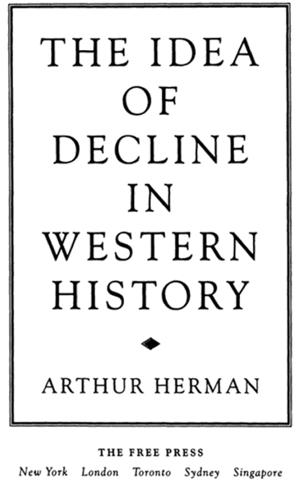
The Idea of Decline in Western History
by
Arthur Herman
Published 8 Jan 1997
Standard history, according to Molefi Asante, is “killing our children by killing their minds.”77 As such, it forms part of the next step in the white genocidal conspiracy: the myth of integration, which whites believe, according to Chancellor Williams, “will effectively check the alarming development of pride in race, a sense of cultural identity with one’s blood line.” When that fails, whites are forced to fall back on a final line of defense. This is “the Plan,” the mass genocidal extermination of blacks through drugs, ghettoization, violent crime, and AIDS. Since all these social problems take a disproportionate toll on blacks, as Leonard Jeffries points out, they “certainly have to be looked at as part of a larger conspiratorial process.” The Plan provides one more example of the white attempt to prevent the forward march of black vitality through history by using “black lives and psyches as the seemingly endless fodder in a system set up by white males for the benefit of white males.”78 “At the heart of history,” Molfani Karenga writes, “is the struggle against others who threaten human life, freedom, and development,” which means capitalism, racism, fascism, apartheid, and colonialism.79 The black man’s struggle is not a Marxist or Darwinian struggle but a vitalist one.
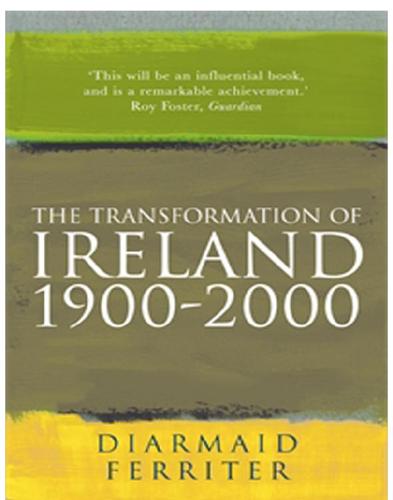
The Transformation Of Ireland 1900-2000
by
Diarmaid Ferriter
Published 15 Jul 2009
Paul-Dubois estimated that the percentage of families living in one-room tenements in 1901 was 36, compared to 15 in London, and as little as one in Cork and Belfast.55 Those intent on reform through slum clearance and new construction often found their plans were overshadowed by the desire to contain contagious disease within the slums and the continued ghettoisation of the poor, who were often depicted as being morally as well as materially in dire straits, by both state and charity organisations. On the eve of the new century, the Daily Nation had warned of the need to face up to the slum evil ‘or else punishment neither light nor pleasant will follow as a consequence of their apathy and neglect’.56 There was no shortage of outrage expressed at such conditions in the opening years of the twentieth century and, indeed, there was much analysis, particularly in response to particular episodes and tragedies.

Lonely Planet London City Guide
by
Tom Masters
,
Steve Fallon
and
Vesna Maric
Published 31 Jan 2010
In general I always try to go to the alternative clubs rather than the mainstream ones – London has a first-class underground scene that dates back decades. The best thing about gay London? The diversity of the people and the clubs is the best thing – there’s something for everyone: gay book clubs, gay jazz clubs and even gay choirs. But more importantly the gay scene (particularly the more alternative side of it) manages not to ghettoize itself too much – everyone remains welcome. …and the worst? The gentrification of traditional gay places such as Soho is sad to see, as are the high prices in some bars and the nonacceptance of women and straight people in some more mainstream gay bars and clubs. And how does the lesbian scene fit into that?
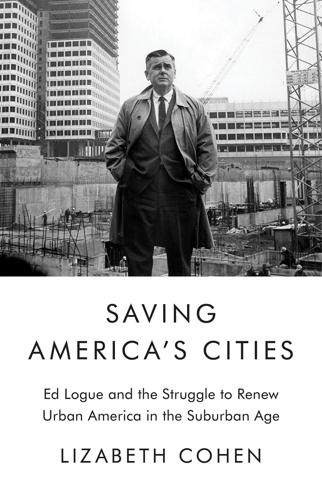
Saving America's Cities: Ed Logue and the Struggle to Renew Urban America in the Suburban Age
by
Lizabeth Cohen
Published 30 Sep 2019
Now, with the visibility and resources of the UDC at his disposal, Logue felt he had an even greater opportunity to engage architects in design innovation. At the top of his list stood finding viable alternatives to the high-rise public housing that for years he had dismissed as dehumanizing and ghettoizing. Although he estimated that it might cost 5 to 10 percent more to hire better architects to do good design, Logue said, “I thought it was worth it. And when you look at the public housing that Bob Moses built as against the parks he built, for example, it’s outrageous … He set a [disastrous] national model.”149 Quality design, Logue was confident, could also help “remove the stigma attached to housing built under public assistance programs.”150 The architect Werner Seligmann—architecture professor at Cornell and Harvard in the era of the UDC, later dean of the School of Architecture at Syracuse University, and the designer of a prominent, moderate-income UDC project, Elm Street Housing, in Ithaca—described the dire situation in 1974: “Less than 10 years ago most schools of architecture considered the topic of housing hardly worthy of investigation … This lack of concern explains the few significant housing innovations and dearth of housing models in the United States.”
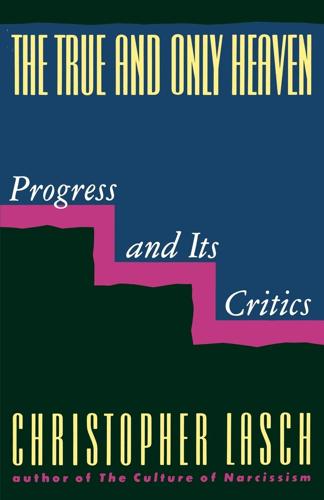
The True and Only Heaven: Progress and Its Critics
by
Christopher Lasch
Published 16 Sep 1991
Medical and educational facilities, law enforcement agencies, and the available supply of jobs—not to mention the supply of racial tolerance and goodwill, never abundant to begin with—all appear inadequate to the enormous task of assimilating what is essentially a surplus or "redundant" population, in the cruelly expressive British phrase. The poisonous effects of poverty and racial discrimination cannot be ghettoized; they too circulate on a global scale. "Like the effects of industrial pollution and the new system of global financial markets," Susan Sontag writes, "the AIDS crisis is evidence of a world ... in which everything that can circulate does"—goods, images, garbage, disease. It is no wonder that "the look into the future, which was once tied to a vision of linear progress," has turned into a "vision of disaster," in Sontag's words, and that "anything ... that can be described as changing steadily can be seen as heading toward catastrophe."
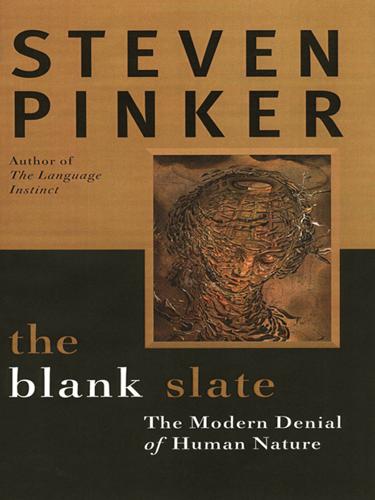
The Blank Slate: The Modern Denial of Human Nature
by
Steven Pinker
Published 1 Jan 2002
For similar reasons, the importer is willing to charge the grocer less than he would charge me. But because lenders and middlemen do not cause tangible objects to come into being, their contributions are difficult to grasp, and they are often thought of as skimmers and parasites. A recurring event in human history is the outbreak of ghettoization, confiscation, expulsion, and mob violence against middlemen, often ethnic minorities who learned to specialize in the middleman niche.49 The Jews in Europe are the most familiar example, but the expatriate Chinese, the Lebanese, the Armenians, and the Gujeratis and Chettyars of India have suffered similar histories of persecution.
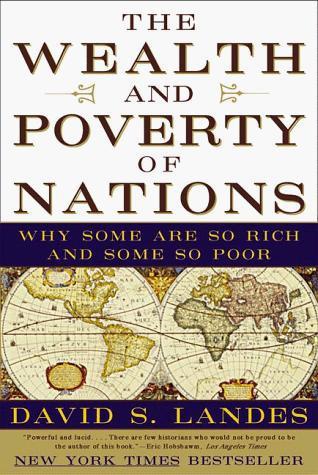
The Wealth and Poverty of Nations: Why Some Are So Rich and Some So Poor
by
David S. Landes
Published 14 Sep 1999
Goodwin, Price of Honor, passim; Barakat, Arab World, chapter 7. * They will do it now, says Mohammed Talbi, historian and former dean at the University of Tunis. Talbi reminds us that for all the episodes of Muslim intolerance, the Muslim world has not been guilty of “systematic forcible conversion, nor arbitrary ghettoization, nor total and massive expulsion, nor genocide, nor, need it be said, a Holocaust.” Le Figaro, 27 March 1997, p. B-27. His account is somewhat overkind, but the favorable comparison of Islamic with Christian persecution of minorities (implicitly Jews) is correct. † The last of them, Fred Perry, champion in the 1930s, is memorialized by a statue at the entrance to Wimbledon: a memento of and salute to a happier era. ** An article by Jean-Paul Mari, “Enquête sur le massacre d’un peuple: Algérie: au delà de l’horreur,” Le nouvel observateur, 23-29 March 1995, chapter 4, remarks: “Algeria has always believed that only violence can found [establish] something.”
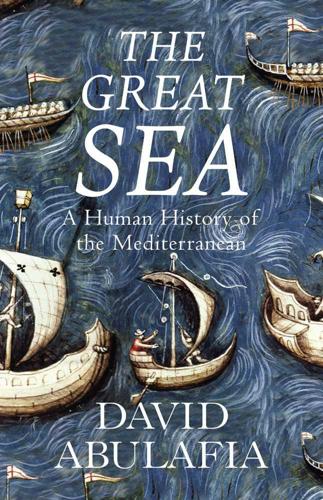
The Great Sea: A Human History of the Mediterranean
by
David Abulafia
Published 4 May 2011
Alongside merchants who came for the metals of Italy, we can soon detect artisans who travelled west to settle in the lands of the barbaroi, knowing that their skills would probably earn them greater esteem than at home, where each was one of many. There are striking parallels in later centuries. Alien traders are an obvious feature of the medieval Mediterranean, where we have the intriguing phenomenon of the ghettoized merchant visiting Islamic or Byzantine territory, enclosed in an inn or fonduk that also functioned as a warehouse, chapel, bakehouse and bath-house, with one inn for each major ‘nation’: Genoese, Venetian, Catalan and so on. The sense that the merchant might be a source of religious contamination and political subversion led the rulers of Egypt to lock the doors of these inns at night-time (the keys being held by Muslims on the outside).
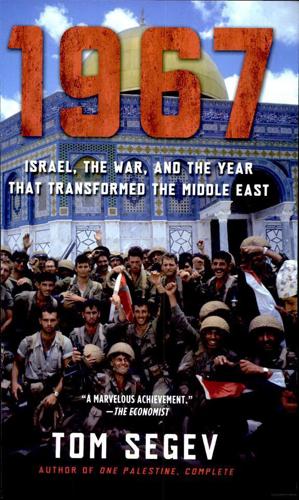
1967: Israel, the War, and the Year That Transformed the Middle East
by
Tom Segev
Published 2 Jan 2007
Toward the end of 1966, Eshkol had again invited Chuvakhin to tour the north, and the ambassador once again refused.20 Israel denied the Soviet claims. “Instead of warning the aggressor, they warn the victim,” Eshkol complained. To the assertion that Israel was aligned with “the imperialists” he responded almost with insult: “Israel the liberator, which freed its people from the generations-long bonds of exile and ghettoization; Israel, a victim of pogroms all over the world, that now returns to its homeland after thousands of years; Israel, the first to rid itself of a foreign power when it realized that this power could not fulfill its hopes— we are being driven by imperialism?” But at the end of December 1966, Shlomo Argov at the Israeli embassy in London raised a question that had troubled him for some time: was it possible that Israel was unwittingly becoming a pawn of foreign oil companies?

Ashes to Ashes: America's Hundred-Year Cigarette War, the Public Health, and the Unabashed Triumph of Philip Morris
by
Richard Kluger
Published 1 Jan 1996
At restaurants, even when obeying the separate seating rules, they hid their cigarettes under the table and waved away the smoke to avoid the dirty looks of smoke-sensitive patrons. And at offices and plants, those desperate for a cigarette were disappearing into hallways, stairwells, and rest rooms, hovering outside building entrances, even hunching against outside walls to avoid the raw elements, and if allowed to indulge in a ghettoized quadrant within the cafeteria, some gulped down two or three cigarettes’ worth of smoke within the time normally allotted for one. The Wall Street Journal reported that some executives were finding their path to career advancement impeded by their smoking affliction, which their superiors inclined to view as a symptom of deficient self-control or weak character.

The Better Angels of Our Nature: Why Violence Has Declined
by
Steven Pinker
Published 24 Sep 2012
People can slide into barbarities a baby step at a time that they would never undertake in a single plunge, because at no point does it feel like they are doing anything terribly different from the current norm.290 An infamous historical example is the Nazis’ euthanizing of the handicapped and mentally retarded and their disenfranchisement, harassment, ghettoization, and deportation of the Jews, which culminated in the events referred to by the ultimate euphemism, the Final Solution. Another example is the phasing of decisions in the conduct of war. Material assistance to an ally can morph into military advisors and then into escalating numbers of soldiers, particularly in a war of attrition.

The Rough Guide to Australia (Travel Guide eBook)
by
Rough Guides
Published 14 Oct 2023
Predominantly a male crowd, it’s men-only on Sat (and Mon–Tues in summer), mixed Wed, Thurs, Fri & Sun. Hosts a fun range of weekly and special events from pool comps (Wed) to underwear (and no underwear) parties. No cover charge for regular nights. LGBTQ+ Melbourne Melbourne’s LGBTQ+ scene may not be as in-your-face as Sydney’s, but it’s almost as big, and is also less ghettoized. Fitzroy, Collingwood and Carlton, north of the river, and St Kilda, South Yarra and Prahran, to the south, boast a strong gay presence; Fitzroy, Northcote and Clifton Hill are the city’s recognized stomping grounds for lesbians. There is a selection of LGBTQQ-friendly accommodation and club nights in these areas and around town (see page 547).